
























Working in an established company, you will be responsible for day to day administration duties of a small office. This is a full time position with future career progression for the right candidate. Hindi speaking is a definite advantage for the right candidate.

Salary dependant on experience.
COMPANY
We are a young, dynamic and innovative company. We are looking to expand our team within a busy small office environment.
OPPORTUNITY
We require a customer focused, self motivated and proactive individual to join our team as an administrator. Experience is vital, with at least 3 years local Australian administration experience a minimum requirement. To be successful in this role you will be a great team player with a strong work ethic. You will also be prepared to take on additional tasks and will have great attention to detail. In return you will receive outstanding training and gain a wealth of experience with a friendly, successful team.

RESPONSIBILITIES
• In and out going phone calls
• Confirming contracts with customers


• Accounts – receivables, payables and invoicing
• Data entry
• Making and checking spreadsheets using Excel
EXPERIENCE
• Previous history in an administrative role and office environment is essential
• Proficient in Microsoft Office including Word, Excel and Email programs
• Knowledge in MYOB (ideal but not necessary)
Please email a cover letter telling us more about yourself and your salary expectation, along with your CV to cvsydney1@gmail.com. Only successful candidates will be contacted.
George Varughese admits that when he first arrived in Sydney in April 1963, he felt quite lost.
He had no friends, and had trouble relating to the Anglo Australians around him. In fact when someone at the airport asked him when had he arrived into the country, he replied, “Just today”. When the lady replied in her Australian accent, “To-die?” he replied, “No, I didn’t come here to die, I want to live and study!”
George has been very mindful of the difficulties newcomers face when they come to make Australia their home. He has been actively involved in the Ethnic Communities Council of NSW (ECC), the peak body for all culturally and linguistically diverse communities, which was started 35 years ago. Late last year he received an Outstanding Service Award to acknowledge his contribution as its member for over 30 years. This was presented to him by the Premier of NSW, Kristina Keneally, at a reception she held for the winners. It was attended by many distinguished guests including Members of Parliament, Ministers and representatives from many ethnic communities.
The ECC has been representing and supporting the members of many ethnic
UIA
communities and was instrumental in influencing the government to start SBS television and then SBS radio. It runs the Ethnic Communities Sustainable Living Project which aims to assist organisations to engage culturally and linguistically diverse communities in local environmental activities and education. The home and community care program of ECC tries to address issues of access and equity for older people, younger people with a disability and their carers. The ‘Communities Relations Commission for a Multicultural NSW’, now headed by Stepan Kerkyasharian, was established as the government agency to look after the migrant ethnic communities mainly due to the efforts of the ECC.
From the days of white Australia to the rich culturally and ethnically diverse community NSW now is, it has been a long journey for George Varughese. He recalls the days when his son was born in Wagga Wagga where George was a lecturer at the teacher’s college. Being the first Indian to be born in the town, it made headlines in the local press!
Leading an active retired life, George is also involved in the University of Sydney Alumni Council, the Council for the Centre for Peace and Conflict
Studies at the University of Sydney and is an ‘Ambassador for Peace’ for the Universal Peace Federation. He lives in the Randwick City Council area and is an advisor on the Council’s Multicultural Advisory Committee, as well as the Chairman of the Multicultural Support Network of the Council which helps disadvantaged migrants.
Having personally experienced the feelings of isolation when he was a new migrant, George tries his best to help others who are in similar situation. He sits on all the Randwick Council citizenship ceremonies. He is also the co-founder of Sydney Malayalee Association and is involved in the World Malayalee Council. The walls of his house display some of the numerous awards George has won for his community service while he says many are “stashed away”. However for all his successes and the important positions held, George still comes across as a simple man, someone always willing to help a fellow human being. The award from the Premier cannot go to a better person. I was reminded of what Winston Churchill once said: “We make a living by what we get, but we make a life by what we give.”
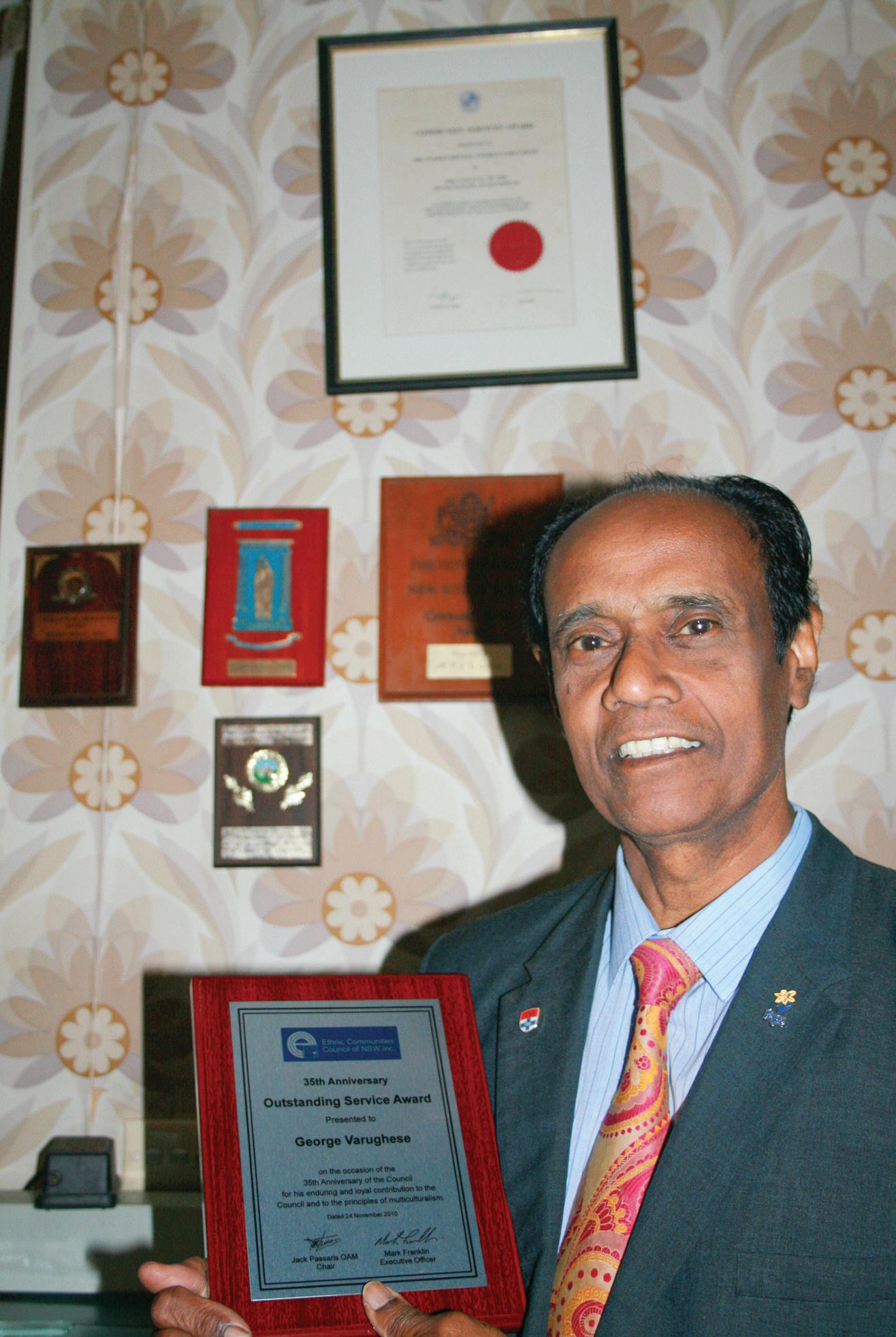 Jyoti Shankar
Jyoti Shankar
BVB
Fri 21 Jan UIA presents a joint Republic Day Australia Day dinner at Grand Westella Reception Centre, 12 Bridge St, Lidcombe, 7.00pm. Program includes community awards, raffle draw and cultural show. Details Aruna Chandrala 0410 338 900.
Sat 22 Jan Celebrate Australia Day and India’s Republic Day in the company of your good friends, and mingle with and engage in lively discussions with politicians over buffet dinner. The function is set to encourage your interaction with politicians on matters of community interest. Avail this opportunity to accentuate the Indian influence.
Epping Leisure and Learning Centre (1, Chambers Court, Below Epping Library, Off 10 Pembrooke Street), Epping. 7.00 pm to 10.00 pm
Details Shubha Kumar 0402 257 588.
Wed 26 Jan Join BVB’s “Indian Boat” as part of the Parade of Vessels on Darling Harbour’s Cockle Bay, as part of the 2011 Australia Day celebrations. (The Parade of Vessels will feature a variety of cultural communities that make up Australia’s diverse society, ferried around Cockle Bay on beautiful, grand and interesting boats as a part of harbour life on Sydney waterways). Confirm participation by 20th of January to pr@bhavanaustralia.org and 1300 BHAVAN (242 826)
CIA
Fri 28 Jan The newly formed Council of Indian Australians Inc (CIA) announces a joint Republic Day Australia Day event at Bowman Hall (Campbell St, Blacktown).
Details Ajoy Ghosh 0433 413 933.
FESTIVAL
Sun 16 Jan Swaminarayan Temple Blacktown presents Kite Flying Festival, 10.00am to 4.00pm, at Blacktown Showground. Details Tejas 0423 587 168.
SPIRITUAL
Mahabharat Katha
Wed 19 to Sun 23 Jan Shree Sanatan Dharam Sabha of NSW Inc presents Hindu epic Mahabharata by Sant Sri Kamal Dasji at the Ram Krishna Temple (24/7 Lyn Parade, Prestons), 7.00pm to 9.00pm daily. Details Pt KP Sharma 0411 101 700.
Chinmaya Mission retreat
Sat 29 and Sun 30 Jan Retreat based on Tattva Bodha, “Who is fit?” at Central Coast (127A Albany St, Pt. Frederick), 9.00am to 6.30pm (each day).
Details Dr Rahul Suri 0439 644 764; Dr Sham Gupta 02 4323 6110, or Chinmaya Sannidhi 02 8850 7400 / 0416 482 149.
MISC
GOPIO Young Achievers Award Night
March 2011
Applications are invited from HSC passed students in the following categories:
* Academic: Students who achieved ATAR 99 and above in 2010 HSC
exam.
* Highest marks obtained in HSC 2010 in Indian languages, dance, drama, music, photography & visual arts.
* State or National level achievement in sports by youth under 20 years of age. Awards will be decided on merit by a selection committee.
Details Harry Walia 0402 842 375.
UIA’s community forum
Sat 5 March Women’s Forum
Sat 19 March Seniors Forum
Both events will be held at 10.00am at Parravilla Function Centre, 42 Campbell St., Parramatta. Working lunch will be provided on both days. Details Aruna Chandrala 0410 338 900.
STAGE
Soulfood on Sundays
Sun 16 Jan Bobby Singh (tabla) and Adrian McNeill (sarod) present a night of classical Indian music at Camelot Lounge (19 Marrickville Road, Marrickville), 6.00pm to 8.00pm. Details Bobby Singh 0411 708 518.




Someone once remarked that “a photography class should be a requirement in all educational programs because it makes you see the world rather than just look at it”. A good photographer can make you look at familiar places and everyday objects as though you had never seen them before. You ponder over the details captured and the picture can transport you miles away. This is what I felt when leafing through the pages of Richard I’Anson’s lavishly produced, voluminous photo book on India, India – Essential encounters. He sees the extraordinary in the mundane, capturing vignettes from everyday life as it throbs about in the streets of India. Of course, he also includes pictures of well-known monuments like the Taj Mahal or Charminar.
In 1986 Richard I’Anson (pronounced eye an-son) made his first trip from London to India. It was for only 6 days and he visited Kashmir and Ladakh. He was so enamoured by the beauty and diversity he saw, that he decided to produce a book about his trip. Reject letters from publishers at that point and 30 odd trips to India later, he has brought his dream project into fruition with the release of this latest book.
Meet Richard I’Anson, a freelance photographer who has built a career on his twin passions for travel and photography. Ever since he received his first camera as a gift from his parents when he was 16, he has been infatuated with photography.
The book was launched in Sydney last month at the Tap Art Gallery in Paddington by World Expeditions, with whom Richard has been involved for a long time.

At the release Richard said, “India is such an exhilarating place for a travel photographer... the pictures I take are an emotional and physical response to the moment.” He chose a few of his favourite pictures exhibited around the gallery to tell the stories behind them. “Expect the unexpected in India, always”, he said.
There may have been many frustrations on his journeys into the country, but what Richard recalls are the sublime moments when

the sunrise over the Himalayas, the chanting monks at Bodh Gaya, or the eternal beauty of Taj Mahal early one morning. In his effort to capture his shot of the tigers at Ranthambore, he spent over 21 hours of safari and had not seen a single tiger. He joked that just as he was about to give up and the thought fleeted through his mind about getting the elusive animal’s shot at the Melbourne Zoo instead, the Royal Bengal tiger deigned to make an appearance. He got some good shots before it vanished into wilderness again. So though his shots may look like happy accidents, just being in the right place at the right time may take hours or days of meticulous planning.
The Allahabad Kumbh Mela of 2001 was another surreal experience for Richard. “It was amazing to be one of the 30 million people who had congregated at the place, one of the largest ever gatherings of men on earth”, he said. He missed the event in 1989 and for something that is as rare as once every 12 years, he realised that for a good photographer it is good to do proper research before any work.
One of his favourite shots is of an old woman sitting in the waters at Puri beach, her saree twirling all round her. The picture looks innocuous enough but Richard had a story to tell. He spoke about how many families come from afar to Puri to see its beaches and
a frail member of one family was washed away by the rip and literally landed at Richard’s feet as he was photographing and that’s how he got this classic shot.
When queried, Richard says that all the 44 destinations highlighted in his book are his favourites, but there’s a special place in his heart for Ladakh, which he says is geographically and culturally very different from the rest of India. In fact, Richard leads a trip to Ladakh through World Expeditions in the month of September 2011. The book has 650 colour photographs, accompanied by text by acclaimed travel writer Sarina Singh. The foreword is written by actress Nandita Das, who admits frankly that she was initially sceptical if a foreigner’s interpretation of India would amount to stereotyping but was happily surprised to find that Richard’s images rekindled her memories of places visited – “sometimes capturing them just as I remembered and sometimes coming across as more breathtaking than I recalled”.
A seasoned traveller, Richard believes that travelling to take photographs is very different to taking photos while travelling. As he says in his introduction to his book, “The unwanted attention of touts, rickshaw and taxi drivers, roaming vendors and beggars, can be wearing and challenging for the occasional visitor but
friendliness and welcoming nature of most interactions.”
Yet, according to him, India can be a relentless assault on the senses. “Those who are open, or better still, embrace the situation, will find India at its pulsating best”.
“Those who are open, or better still, embrace the situation, will find India at its pulsating best”.
Richard’s work is published worldwide in books, magazines, newspapers, brochures, calendars, posters, cards and websites.
Richard has himself published books like Chasing Rickshaws, Rice Trails, Travel Photography, Australia: 42 Great Landscape Experiences and Nepal, among others. He says he aims to capture the reality of the place as he sees it and “endeavours to shoot strong individual images that build on each other to create a comprehensive coverage of a destination or topic, so that viewers can get a sense of what it’s like to be there.”



country, it is an exciting period. It is fascinating just how much we change in the early years following school, and so it is with a great sense of anticipation that many students leave behind the tags of “girls and boys” to become “ladies and gentlemen”. The journey for them has just begun.
A record 71,310 students sat the 2010 NSW Higher School Certificate, in 6 countries and 750 exam centres. This included 673 sets of twins, 12 sets of triplets, and even a set of quintuplets. Nearly 15,000 students chose to have their results sent to them by mobile phone. Some even opted to access their scores via Playstations and iPods. At the end of the day, however, there was only one number that was on most of their minds – the ATAR that was to be released the following day.
It is impossible to put a figure, however, on the immense amount of work done by each and every student. Countless nights throughout the year were spent without food, drink and sleep all in the aim of maximising a mark or two. Parents would suddenly find themselves begging their children not to study, while students found themselves running like machines – going to school, coming home, studying, and if lucky, sleeping.
However much the students studied, though, the relief that November 10 brought with it, was without a doubt monumental.

Throughout the year, students have motivated themselves with that one moment when the examiner would say “Pens down, time is up” - that inexplicable euphoria awaiting them when

the relief after the exams finished was enormous, but “before you knew it, the date that results were released popped out of the blue, and the night before it got pretty tense. The best thing was to just hang out with friends and rejoice in the fact that all the studying had
perhaps the ones in our community, their parents are somewhat more
tiniest mishap could not only have caused me to fall short of my dream course, but would have forced me to move interstate as I would have pursued the University of Melbourne’s postgraduate medicine program instead, which requires an ATAR of 99.90. I coped with this intense period by distracting myself by going out to lunch, watching TV shows and Ashes Cricket!”
For Ayush Sharma, [ATAR 96.55] of Normanhurst Boys High School,

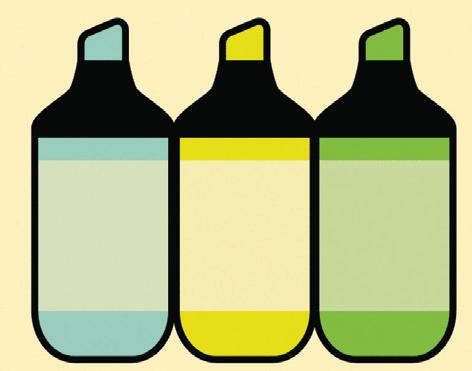



theme amongst this year’s graduates shows that calmer parents helped immensely. Kovid Sahni of Epping Boys High School [ATAR 96.85] says, “My parents were very understanding and supportive throughout my senior years. I’d be lying if I told you there wasn’t any pressure; but the trick is to break down your ultimate goal into smaller and more manageable ones. This approach paid off handsomely as my parents continually emphasised that ‘gaining knowledge is an investment in yourself; nothing more, nothing less.’”
Yashutosh Joshi from Girraween High School achieved an ATAR of 98.65, and similarly praises his parents: “They did everything they could to relieve pressure during my study so I could perform well; they attended to my every whim and were very supportive. I owe them a lot and would like to take this opportunity if I could, to thank them dearly for always trying to make my journey as easy as possible and for being so supportive, I could not have done it without them.”
Although there is such an immense amount of pressure associated with the HSC, with the gift of hindsight many of our graduates see a much lighter side to it. Tia Singh of Macarthur Girls High School [ATAR 98.90] believes “The HSC is overhyped. It is nowhere near the end of the world; it’s a stepping stone, a new beginning,
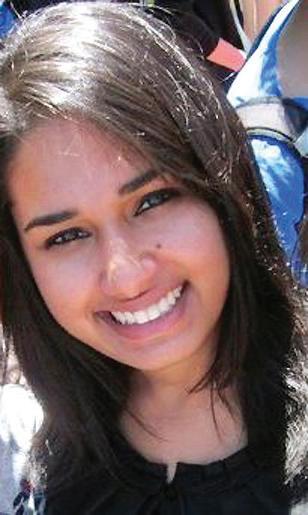
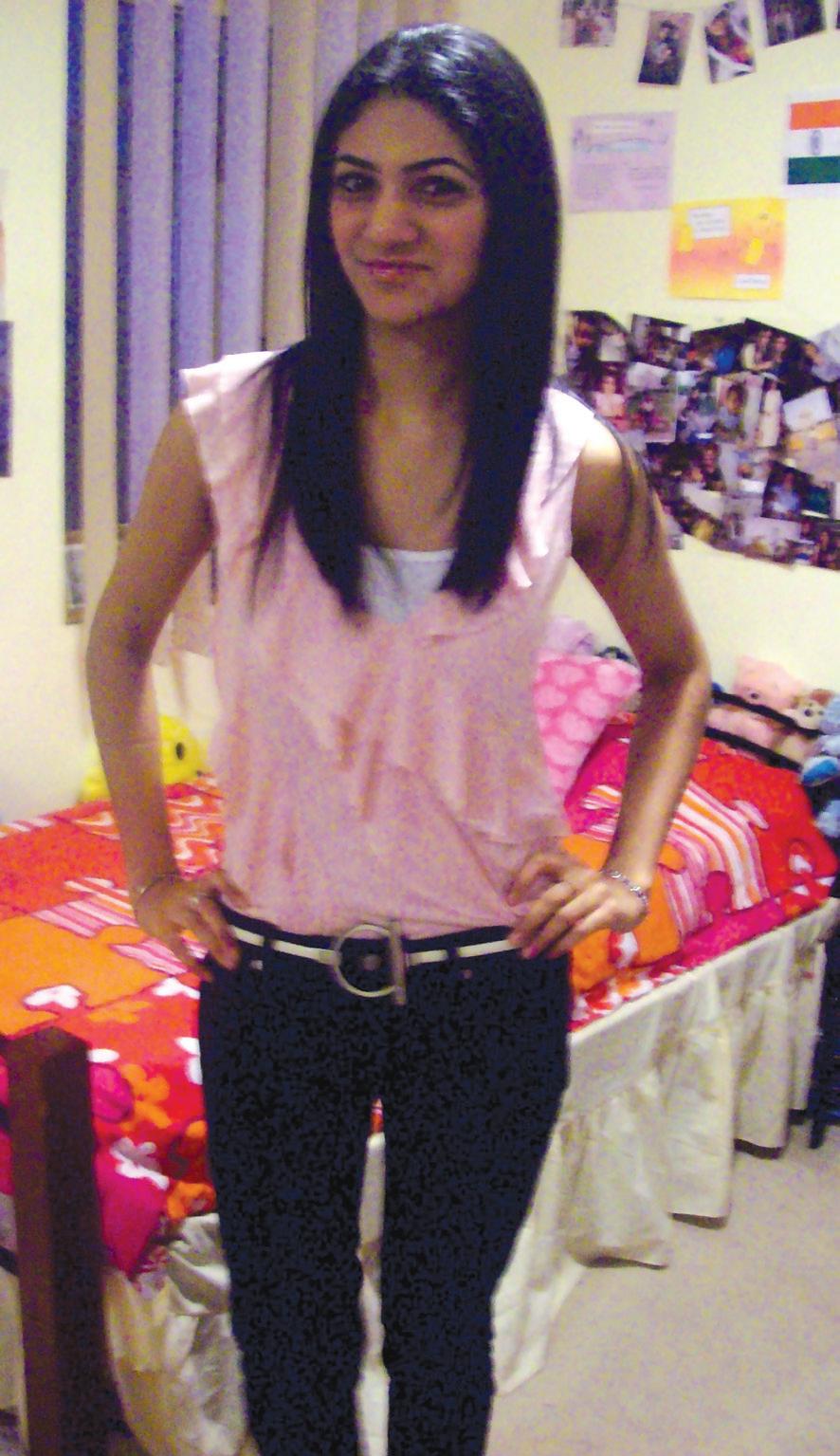
an enriching life experience as well. It all depends on the manner in which you approach your senior years. My HSC style entailed loud Punjabi music, not deactivating Facebook, not overworking myself with tuitions, choosing subjects I loved, having an amazing support network, and lots of passion for life”.

Tanya Mahajan, who graduated from North Sydney Girls High with an ATAR of 99.7, believes like many other graduates, that the HSC isn’t the be-all and end-all of your tertiary education chances. “There are so many different ways of getting into every course so even if you miss out after Year 12, you shouldn’t dwell on it. I don’t think that the HSC should take over your life in Year 12; you should still have fun, go out with your friends and family and play sport.”
Dushyant Iyer of Sydney
Grammar, also with an ATAR of 99.7, suggests for future students that “the most important thing I believe I’ve learnt is to have a balance in life and so I hope to have a stimulating career in the medical field, whilst still maintaining strong relationships with the people closest to me, still play the sports I love.”

Dushyant is not alone. Ansh
Gopalani [ATAR 99.90] advises, “Don’t study hard, study smart. In other words pick your battles. Revise hard when assessments are coming up but make sure you go out, party, play sport during holidays and after assessment blocks. It’s heaps important to have a life besides studying.” Although he seriously considered doing the HSC over two years because of a severe infection in his right eye that now requires a corneal transplant, Ansh was relaxed enough to complete his exams with effectively just the one eye.
Similarly, Amelia Chowdhury [ATAR 99.9] says, “I think there’s more to high school than a fourdigit number. Achievements in music, art, sports and leadership are just as equally as important as academics, so I guess the HSC is a bit overhyped, because there are so many other fields a student can excel in. I have friends who are so
amazing in so many other ways, and it’s important that these talents are recognised too.”
Ashvin Ashok of Homebush Boys High School [ATAR 98.70] agrees: “Try to be an all-rounder student and don’t let the angst of the HSC ruin your final year of schooling. Have time for socialising, sporting, leadership and other extra-curricular activities. These are very helpful when applying for scholarships or part-time jobs as academic excellence is not the only thing that sponsors or employers may be looking for.”
Ankit Joshi of Parramatta Marist High School [ATAR 95] feels the same. “Prepare a realistic study timetable which is a balance between socialising and studying, with ample breaks, and try your best to stick to it”.
Selective schools are often pointed out as the critical factor in successful results. However, Pallavi Shamdasani [ATAR 99.75] went to Narrabundah College in Canberra,
and says, although there are no selective schools in Canberra, “I don’t think it is only the school which will determine how well you will do; I think it’s a combination of your own efforts, a competitive peer group and enthusiastic teachers.”
Rachy Sood of Parramatta Marist [ATAR 98.15] has some very specific advice: “Allocate equal time to all your subjects, because I always avoided extension 2, thinking it will just click (it didn’t). Heaps of people will tell you to make a timetable of when you’re going to study, all my mates tried it, no-one stuck to it. If you are self-driven you’ll know when you need to study and when to relax.”
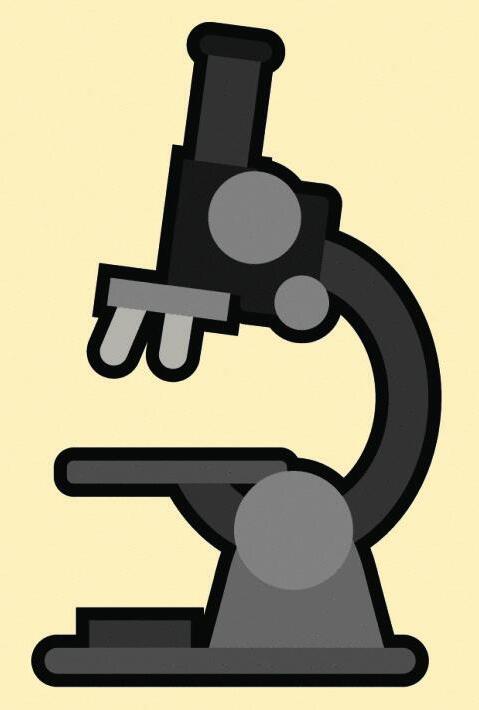
All other things considered, with all the scaling out of the way, and all talk of school rankings forgotten, after ATARs start becoming meaningless numbers, it is time to consider the future.


There are many thoughts flowing through a student’s mind at this stage - clearly, the stand-out question is, what course do I choose?
Satvik will be studying combined medicine, BSc (Adv)/MBBS at USYD.


“After much research and deliberation, I have come to a firm decision that I would only do postgraduate medicine (as I really wanted
Continued on page 18

Continued from page 17
to study science before commencing my medicine degree). It (Medicine) was a very easy choice for me as I had my heart set on what I wanted to do, and this course provided absolutely everything that I could ever want.“
Ayush will aim towards a Bachelor of Engineering combined with a Bachelor of Science degree. “It wasn’t a tough choice at all, since I’ve wanted to do this for years now, though my parents wanted me to do something business related. Convincing them of what I wanted to do took a little effort, but they came through.”
Kovid has a few choices: “I now have the dilemma of choosing between many more courses than I had anticipated. Actuarial Studies with Law, Information Technology and Economics with Finance are some of the options I am looking into at the moment. My parents have had some input in my decision making, but they have advised me to choose a course in which I have a genuine interest in so that I will have the greatest possible chance to excel.”
Yashutosh faces a similar situation: “It currently is a tough choice since it isn’t set in stone just yet. I have a few options in mind and it’s a decision that affects your future and should be one that’s treated as such. I’m considering undertaking a combined degree, one of which will be the Aeronautical (Space) engineering at the University of Sydney.”
was something I’ve been passionate about doing for a long time, so when it came to the start of Year 12, I knew I had to get as high an ATAR as possible to gain entrance in to the course. I was lucky to have parents who supported my choice, and had frequent discussions with me to reaffirm my choice.”
For Ansh, “the course I’m going to do at uni is something I’m still thinking about. I’m tossing up between three degrees, Commerce/Law, Commerce/Science (Advanced Mathematics) or doing straight Commerce with a cadetship at PWC. It is definitely a tough choice because I’m not sure which option I will like the most.”
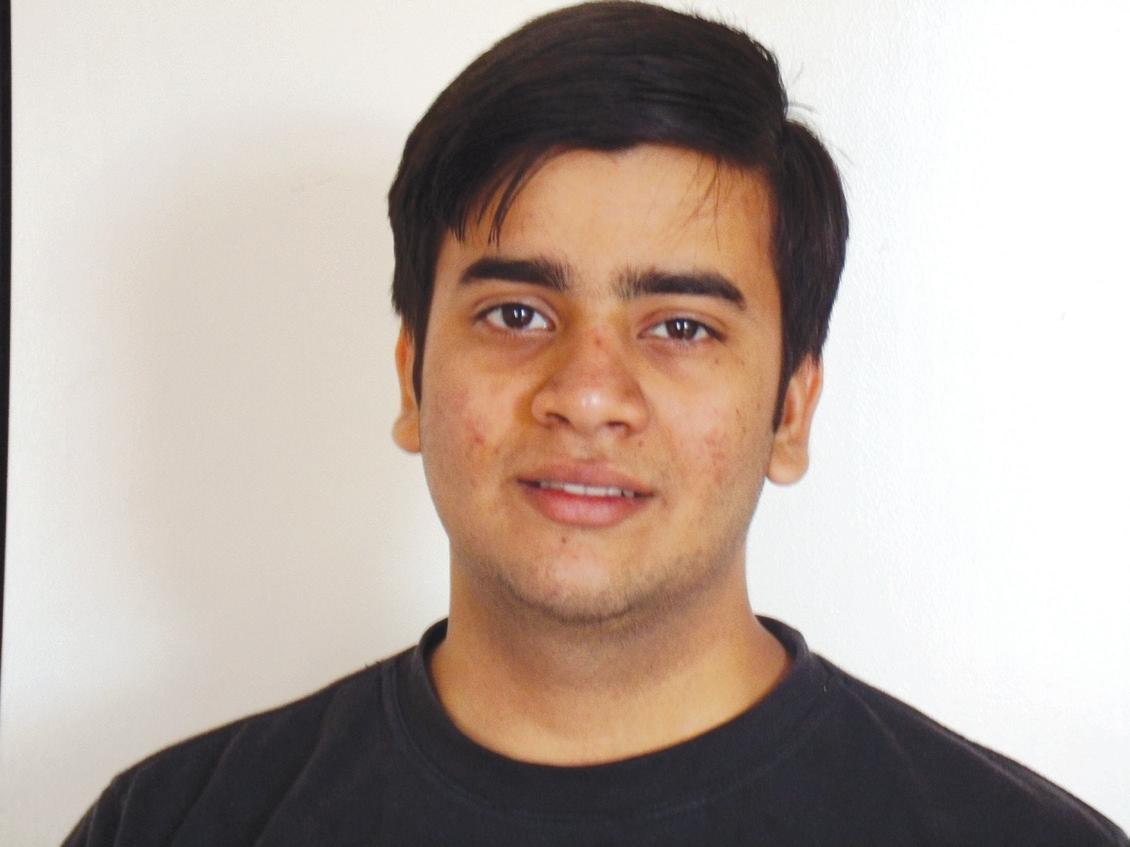


Amelia has been well ahead of things. “Hopefully I get into medicine, depending on whether my UMAT and interview went well. There was no pressure from parents because I’ve wanted to do med since I was 8 years old, so it wasn’t hard deciding my course. “
Ashok will be doing a Bachelor of Education (Secondary: Mathematics)/ Bachelor of Science. “It was a tough decision as I had many choices due to my ATAR. But my passion for teaching and experience as a peer tutor made me choose this line. My parents were the first to suggest teaching to me and were quite happy and supportive of my decision.”

Pallavi says, “I hope to be studying medicine at Monash University. Initially I was tossing up between studying dentistry and medicine but in the end
“There’s more to high school than a four-digit number. Achievements in music, art, sports and leadership are just as equally as important as academics, so I guess the HSC is a bit overhyped…”


Before you lodge your application, be sure to check the track record of your migration agent. At AVMCS, we have been successfully helping people like you for over 18 years, involving thousands of successful applications. We know the rules and guide you professionally all the way. No wonder, AVMCS is the first choice of people who want the best value for their money and efforts. Remember, there is no substitute for experience.


“My HSC style involved loud Punjabi music, not deactivating Facebook, not overworking myself with tuitions, choosing subjects I loved, having an amazing support network, and lots of
Amelia ChowdhuryKovid Sahni [ATAR 96.85] Ankit Joshi [ATAR 95.00] Yashutosh Joshi [ATAR 98.65] Ashvin Ashok [ATAR 98.70]


















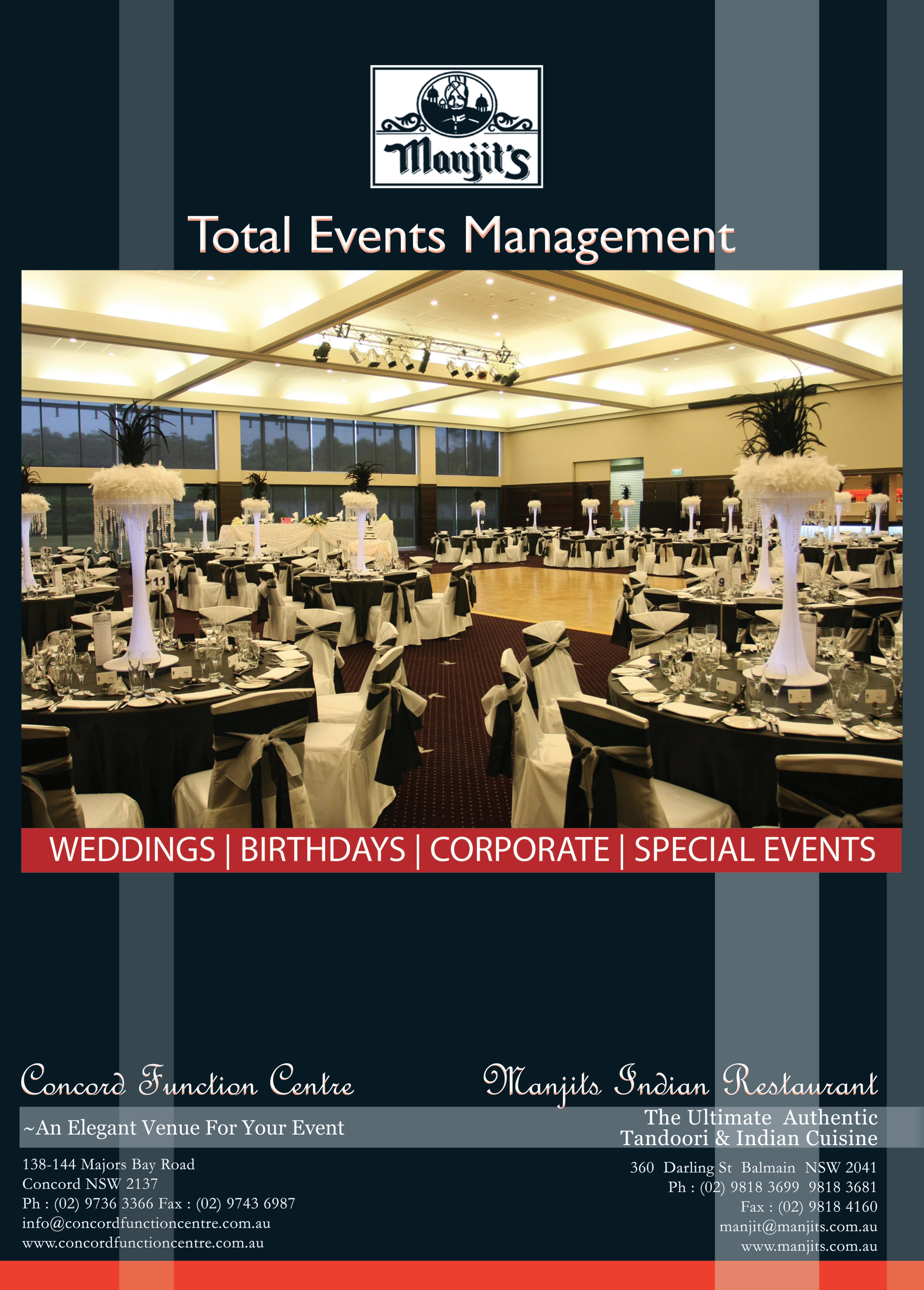

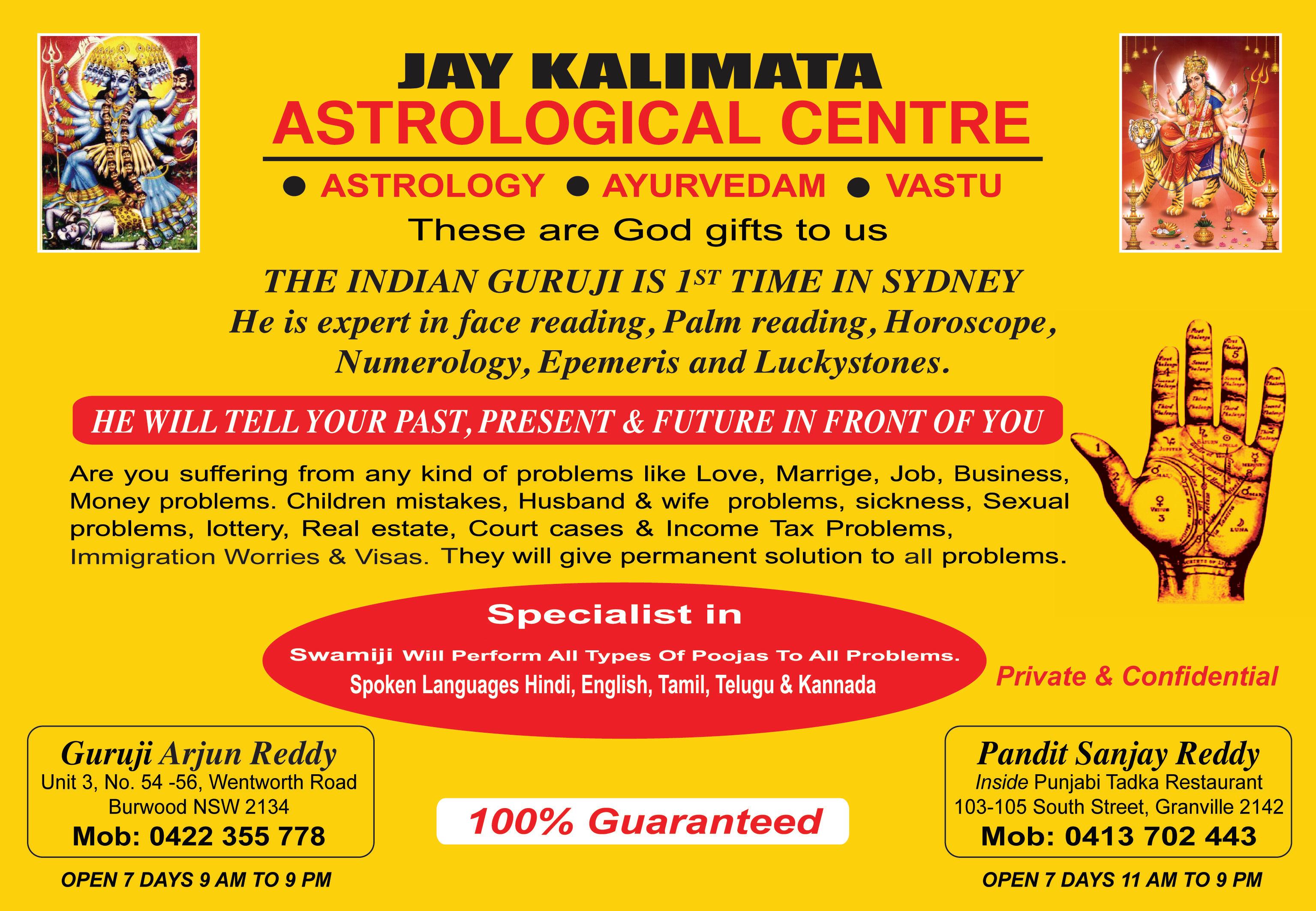
Perth was hit by two separate and unrelated - but both saddening - news for the Indian
and weather conditions when the tragedy happened.
Detective De Re said the family members were not strong swimmers and were swept off the sandbar into deeper water.
He said despite efforts to revive the men using CPR for about 40 minutes, they died on the beach. The survivors were taken to hospital by ambulance.
The dangerous 750m crossing is susceptible to rising tides, and choppy seas had been whipped up by 23-knot south-westerly winds yesterday afternoon.
The widows of the Indian men who drowned while trying to save their lives off Penguin Island are still coming to grips with the horror of that tragic day and the financial strife they now face.
Aruna Ganasala is in a deep state of depression according to one friend, and Madhavi Shiva has reportedly been unable to bring herself to tell her young son that his father is dead.
Both men had been living in Perth for a couple of years after moving to Western Australia from the south of India, according to Indian community spokesman Suresh Rajan.

Although Mr Gansala had worked fulltime as a boiler maker, Mr Shiva had only just gained full-time work after years of getting by on casual wages.
Consequently Mrs Shiva has only $970 in her bank account, and neither widow works.
The first incident happened in the southern suburb of Rockingham near the popular Penguin Island tourist spot on 28 December.
Penguin Island is known for its colony of Little Penguins and is a popular diving and snorkelling location.
Pavan Ganasala and Praveen Kumar Shiva, both in their 30s, drowned near Penguin Island as they were walking from the island to the mainland across a treacherous sandbar. They were trying to save their wives by holding them up to keep their heads above the surf when they died, according to a friend.
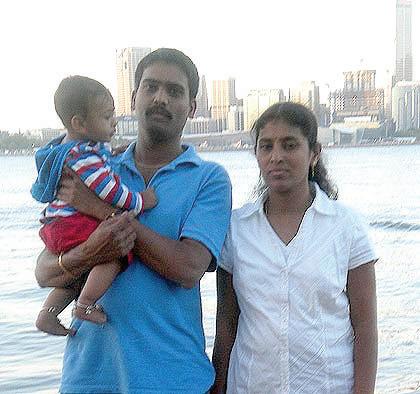

The group of family members was walking back from a picnic on the popular leisure spot about 3.30pm, WA time, when they got into trouble.

Local authorities had been in the process of closing the crossing due to the high tide
Mr Rajan said that although he had negotiated with the Indian High Commission to pay for the bodies of the men to be taken back to India at a cost of $5000 each, the welfare fund did not extend to family members.
“The situation is dire. The Indian Society has an appeal and as of yesterday there was $1000. I’ve asked they release the funds straight away and dip into our own resources if necessary because they need it fairly urgently,” Mr Rajan said.
The women, together with their sons, face bills of up to $6000 in return flights alone, in order for them to attend the burial.
Mr Rajan said he was fairly certain Mrs Shiva wanted to remain in India because she was pregnant and had no family in Perth, but they would ensure she had the ability to fly back to Australia should she choose.
He was not certain what Mrs Ganasala wanted, since her sons are aged seven and eight and have adapted to living in Australia.
“They are going to have to make some decisions about whether they remain in Australia but I don’t think they should make their decisions now with all their grief,” he said. Those wishing to donate can do so through the Indian Society of WA, BSB No: 306-035, Account No: 4170074, Reference: Penguin Island Appeal, Account Name: Indian Society of WA
The second incident, unrelated but equally saddening, which also happened on 28 December, was the demise of Mrs. Sushma Paul, the ex-Honorary Consul of India in Perth. Known to all as a courageous lady, Mrs Paul was very active in the promotion of Indian cultural activities here in Perth for more than a decade.

This brave lady left Mumbai for Australian shores more than 27 years ago. To start with, luck did not favour her. In a span of four years, she lost the three main walls which held the roof of her life together - her father, her younger brother and then her husband.
In her own blog posted on New Year’s day 2010, she writes, “I was lost in this land, desolate, depressed and submerged in a zone of darkness. Two years went by till one great morning I ‘woke up’ — to this world and the world of my son. The world was still green, the sky was still blue, the birds where still singing and little beautiful babies where still chuckling! What needed to change was me. Growing out of muddy water to blossom into a lucky flower — the lotus symbolises the potential in all beings to grow beyond mortal foibles into an enlightened being.”
And blossom she did, as she started Sujag, an organisation which brought together a galaxy of Indian classical music maestros. Sushma’s efforts were recognized by the Perth International Arts Festival — 58th year running — where Perth invites the world’s preeminent artists.
Another amazing legacy Mrs Paul leaves behind is Annalakshmi, a landmark in Perth today. It comprises of three parts: a culinary wing called Annalakshmi on the Swan; Annalakshmi Cultural Centre, and the Temple
of Fine Arts. This was introduced about 20 years ago, and she was involved the very minute it was conceived. The Annalakshmi restaurant on the Swan is well known for its unique philosophy of, ‘eat as you like, and pay as your heart feels’.
The radiant, vibrant lady exuding charm represented India as its Honorary Consul in Western Australia for the last 8 years.
Mrs Paul’s biggest life force and joy was her son, Monish whom she brought up as a single parent. Today, her son, a Chartered Accountant works with Deloitte in Perth.
Mrs Paul also took an active role in championing the cause of Indian students in Western Australia, meeting up with local university and political leaders to discuss student problems and find solutions. I personally have seen her working for Indian students who were not given a fair deal by educational institutions at the immigration offices, here in Perth.
The funeral was held on 5 Jan at the Karrakatta Cemetry.
Charity donations were accepted in lieu of flowers.
A short prayer and commemorative dinner in honour of Mrs Sushma Paul was held at Annalakshmi Restaurant on Sunday 9 January at Barrack St Jetty.





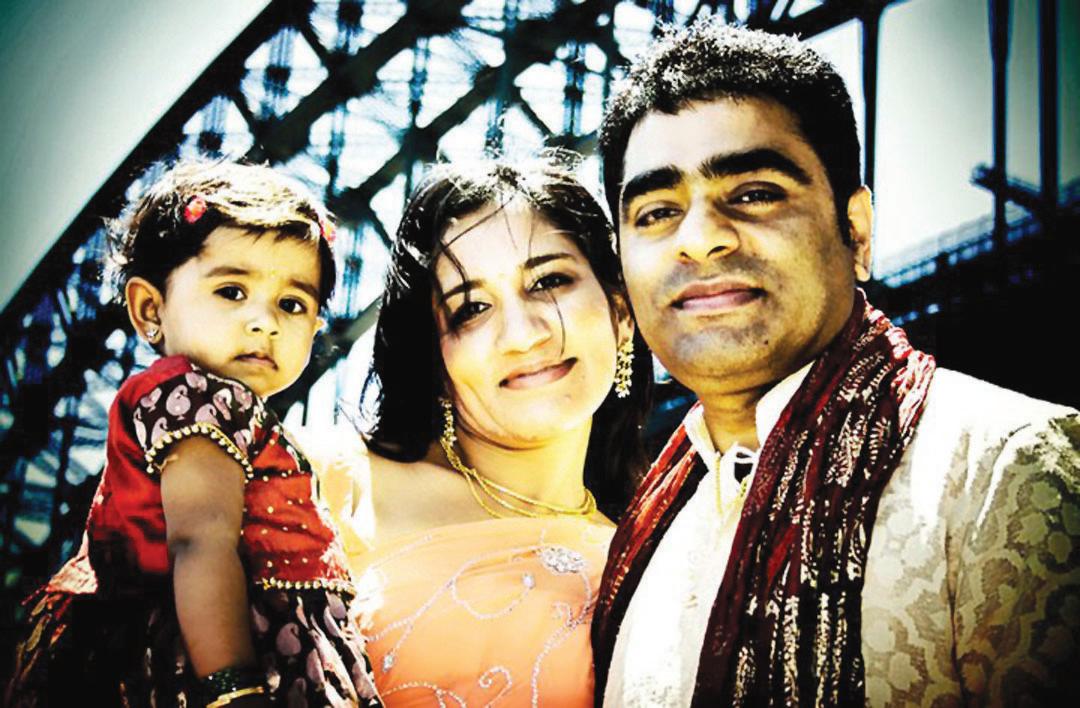










Despite the rather gloomy outlook that the recent Ashes debacle may inspire, Australian cricket has brighter things to look forward to. Change is abuzz, and the growing influence of immigrant communities is certainly a refreshing trend.
A prominent example of course is the emergence through domestic ranks of Usman Khawaja, a Pakistan-born cricketer who learnt his cricket in Australia.
Another case in point is the appointment by Cricket Australia of Juhi Gupta, a young Indian-Australian, as Senior Officer, Multicultural Cricket.
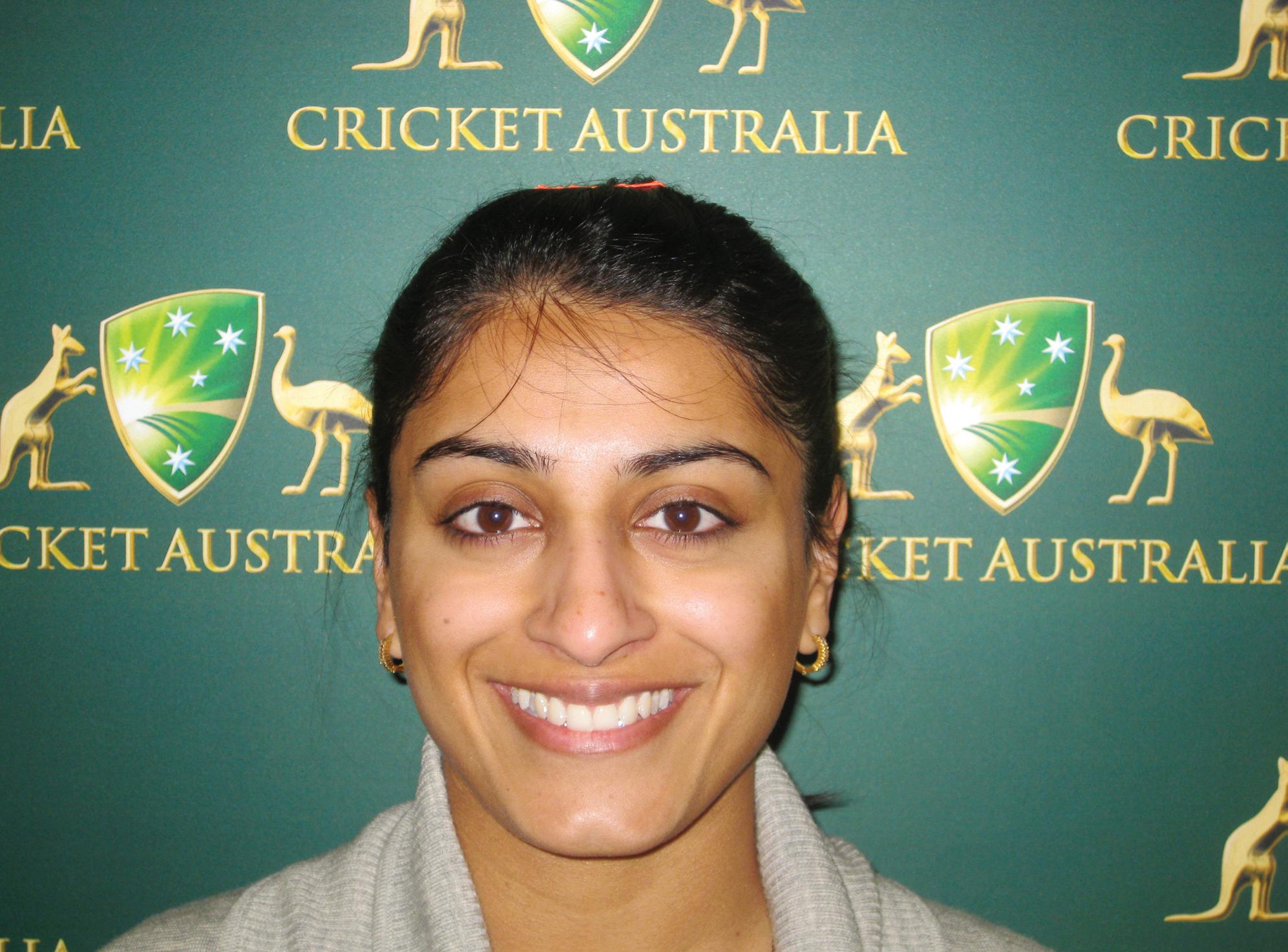
There seems to be a conscious effort on the part of Cricket Australia to ensure that the sport unites the diversity of the country and the next generation of cricketers is a better representation of the multicultural population of the nation.
“Cultural diversity brings many positives. It allows people to learn more about each other, the world and its different cultures. Australia is a country that is culturally, socially and economically enriched by its multiculturalism,” Juhi Gupta says. The effort to reach out to a wider demographic is both positive and welcome.
“The creation of my role is recognition by Cricket Australia of Australia’s diverse society,” Gupta adds, noting that Cricket Australia is committed to ensure cricket is Australia’s favourite sport. “Cricket truly is a sport for everyone regardless of age, sex, race or religion. Cricket has the capacity to transcend cultural differences and promote inclusion.”
The nation recently welcomed the first person from the Indian subcontinent to represent Australia. Khawaja’s first test innings had authority written all over it. Those confident strides up to the wicket from the new number three of Australian cricket were hard to miss. Within a few balls, the debutant had become the debonair, pulling and even leaving with flair. The debut could have been better, one would argue, but then so could have been many other things this season.
Those few steps from Khawaja symbolised something deeper: the triumph of hope, belief and hard work. His first two innings in international cricket may have been short, but were enough to inspire a whole country and, more importantly, a whole community. It meant he belonged there, and so could anyone with enough skill, irrespective of where they came from.
However, participation in cricket need not necessarily be limited to playing. “Being involved in cricket can also be via coaching, officiating, volunteering, watching, through administration or by simply talking about cricket.” Gupta says. She herself is an example of how people from diverse backgrounds can contribute to Australian sport. Born in Jaipur, India, she came to this country in 1986 along with her parents. After completing a Bachelor of Commerce, majoring in Finance and Sports Management from Deakin University, she earned a position at Tennis Australia where she spent “four great years delivering many different projects.”
Cricket Australia, for its part, seems to be on the right track in ensuring the game finds favour with a larger section of the population. Juhi Gupta quotes Cricket Australia CEO James Sutherland to stress the importance of greater inclusiveness in cricket: “we have to earn our relationship with young Australians of all backgrounds and cultures by showing them that cricket is a choice they should make, rather than something they adopt simply because it is there.”
Rebuilding a squad is an ongoing process and it will be some time before we see the national team perform with consistency, but it is important to move on from the ways of the old. It is heartening to see efforts being made towards more inclusiveness in various aspects of the game.
Tough times demand change, and the recent slump in the game has been an opportunity for Cricket Australia to reach out to a section of society that had not found a representation in its national team before, a section that probably just needs a little push.
Perhaps it was time, with the glory days all but gone. Tough times demand change, and the slump in Australian team’s performance was an opportunity for Cricket Australia to reach out to a section of society that had not found a representation in its national team before, a section that probably just needs a little push.
Cricket Australia is trying to keep up with the times, especially after a forgettable year on the field. The board has rightly resisted the temptation to find a quick fix, for there is none.
The appointment of Ms. Gupta therefore means so much more, and she acknowledges as much, “I believe that my appointment at Cricket Australia has further added to cricket’s identity as a sport for all. Currently Cricket Australia has dedicated female, indigenous, and disability programs, which do their bit to make cricket an inclusive sport.”
The warm response to Khawaja from the cricketing fraternity in the country, although sometimes bordering on eulogy, is a testimony to the fact that the nation is ready to embrace diversity in its cricket. It is only natural that the country’s rich cultural diversity finds representation in its national sport.
While the results may not be apparent right away, the ball has been set in motion. The gate is open – it always was, just that there’s an ‘open to all’ sign on it now.



You can’t find a better location than this in the sought after Willetton area. This lovely family home is set on a massive 858sqm green title block. This most generous accommodation comprises of four spacious bedrooms plus a separate room that you could use as a 5th bedroom/teenage retreat or office, 2 bathrooms, formal lounge, open plan kitchen combined dining. There is a large laundry with lots of space ideal for a large family, spacious passage can be used as a study.
Outdoors you will find a huge sparkling swimming pool ideal for the children surrounded by reticulated gardens. The setting is perfect for the family. There is a bore on the property to save you money on watering. Double lock-up garage suitable for small cars.
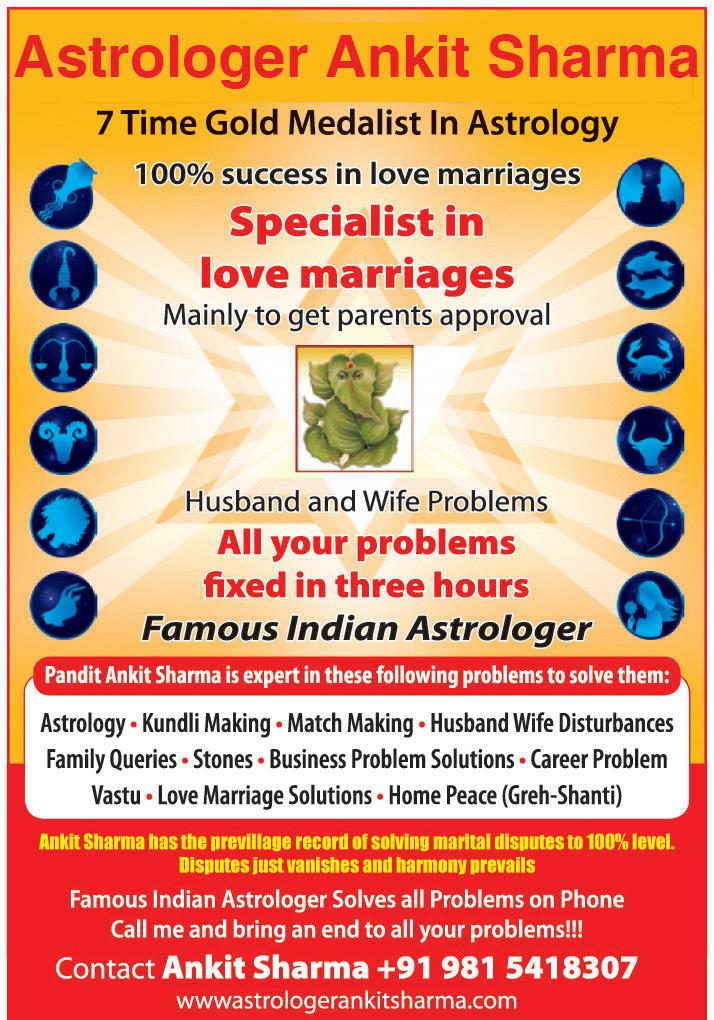
This fantastic home is located within walking distance to Rossmoyne High School, transport facilities - close to Bull Creek train station, freeway and shopping centres. This property has got the lot.

Ankit Sharma has the previllage record of solving marital disputes to 100% level. Disputes just vanishes and harmony prevails




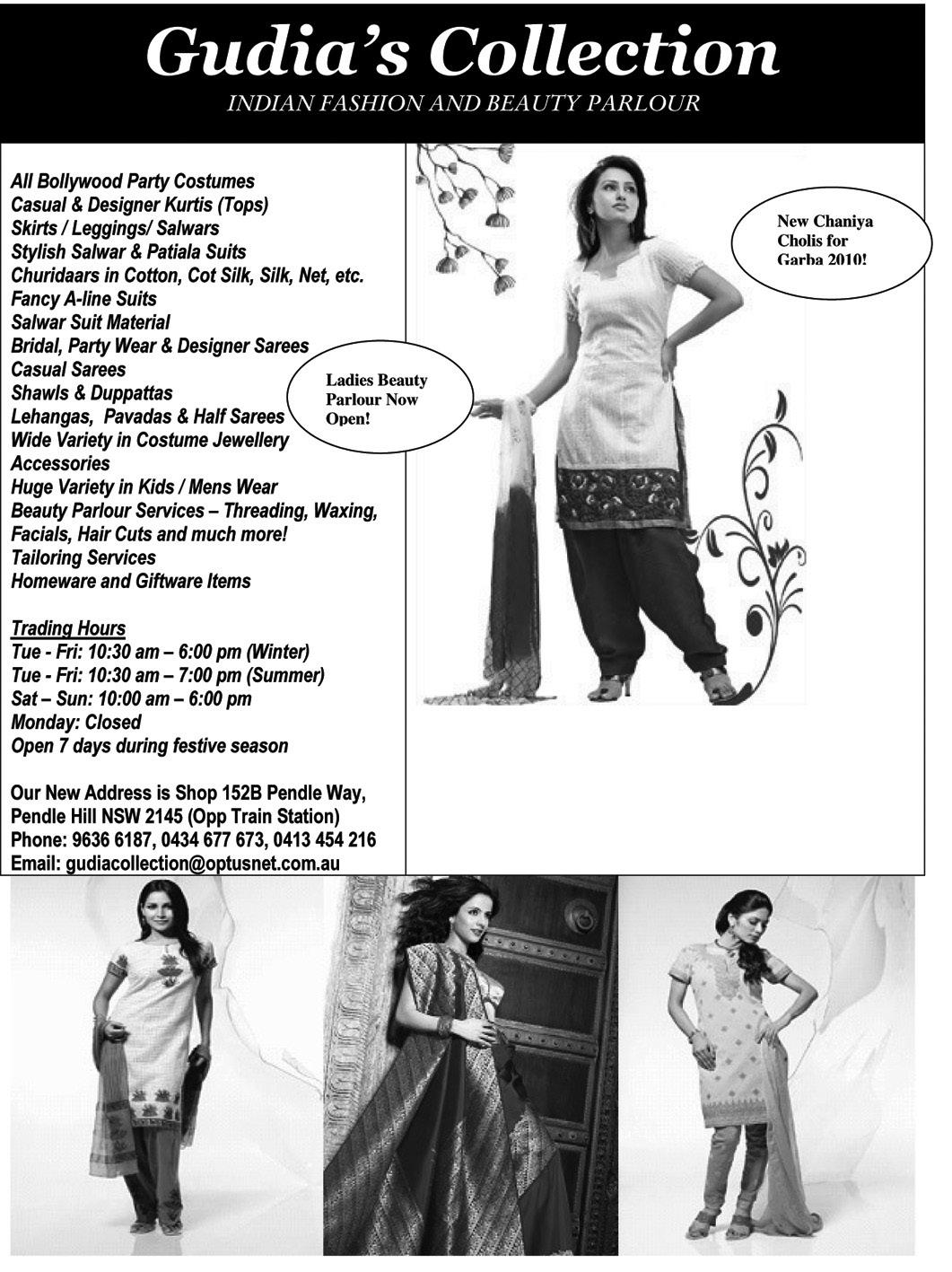

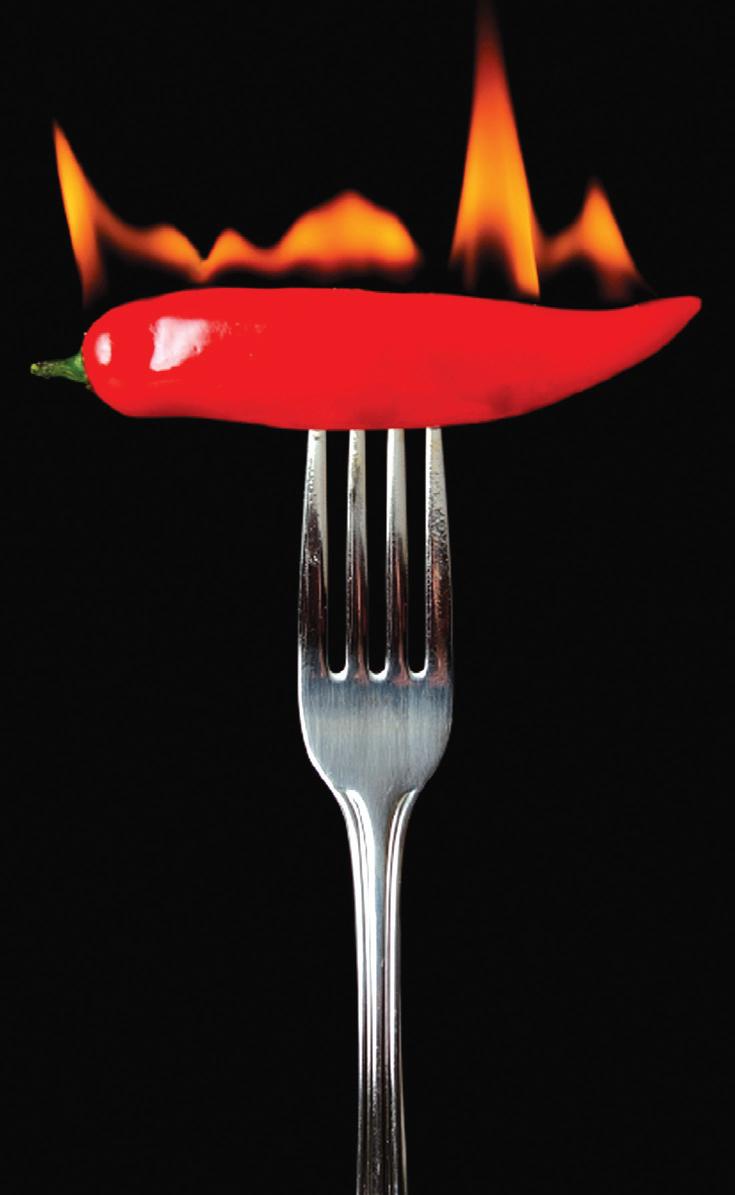


The Indian Premier League (IPL) auction 2011 has predictably demolished a lot of myths and theories about both the sport and business. For one, the sentimental value of players was not taken into account, even if they were Sourav Ganguly, Brian Lara or Mark Boucher. Two, the realisation that it is safer to invest in Indians than chase the mirage of overseas players.
At the IPL mini auction the year before last, there was a hue and cry over the entire Pakistan lot going unsold. By the same argument, after the two-day auction, quite a few Twenty20 specialists from England, South Africa, West Indies and Sri Lanka were left untouched by the owners of the ten franchises.
The owners were willing to be charitable to the Dravids and the Laxmans or pay four young Indians upwards of $2 million rather than looking wide-eyed at highly-rated overseas players.
Even Gautam Gambhir did not think he would lead the pack of multimillionaires with a whopping $2.4 million (11.04 crore), followed by Yusuf Pathan and Robin Uthappa $2.1m (9.66 cr) and Rohit Sharma $2m (9.20 cr). Three other Indians - Irfan Pathan, Yuvraj Singh and Saurabh Tiwariare not very far from the two-million-mark.
Contrast these figures with the highest paid overseas player Mahela Jayawrdene’s $1.5m and the other two foreigners in the million bracket to get an insight into the mindset of the moneybags controlling the franchises. Only two other overseas players, David Hussey and Dale Steyn could get to a little over a million dollars each.
In the first auction in 2008, people were left gaping at Mahendra Singh Dhoni getting $1.5 million and a year later Andrew Flintoff and Kevin Pietersen’s price tag of $1.55m and that figure looked obscene. What can you say now, that a clutch of brash young men were bought for over two million each?
Franchise owners knew that they would have to shell out almost double the amount they had the last time for marquee players and the value-added investment for promising players this time around. It was well known a year ago that some of the players will cross the two-million figure at this auction and so the market watchers were not surprised at all at the turn of events. What they might not have expected is the inflated sums some of the Indian players were bought for.
Curiously, the players retained by the franchises are all Indians. When it came to the auction, teams like Bangalore Royal Challengers and Chennai Super Kings tried their best to win back players who served them well in the first three seasons.
Going by the same yardstick, many felt the inclusion of Sourav Ganguly would have immensely enhanced the brand value of Kolkata Knight Riders, but then the professional management brought in by the owners thought otherwise. Come to think of it, KKR is the only franchise that did not have any of its owners at the auction table.
Franchises have realised that their brand value will be enriched by local players and those in the catchment areas, not all those super stars from overseas who just go through their motions and that, too, if they condescend to play at all. It happened with Chris Gayle, Ricky Ponting et al.
A look at the composition of the teams makes it clear that the accent is more on the Indians as they have to fill in seven slots in the team as against a maximum of four overseas players. Some owners smartly invested in players who have done well in domestic cricket.
With former captains Anil Kumble and
Stephen Fleming, Geoff Lawson, David Whatmore and Darren Lehmann having a bigger say in strategising, the owners worked it out all well.
The fact that some of the overseas coaches went round watching the Ranji Trophy matches in the last couple of weeks made them plump for young Indians, ignoring players from their own countries. That explains how someone like Murali Kartik could get a good price after going unsold the first time when he went under the hammer.
The squads will get their final shape with the inclusion of uncapped players from their catchment areas and that pool has some terrific talent. The first three seasons have thrown up a fair sprinkling of bright young players, some of whom have gone to play for the country in limited-overs games.
It’s now truly the Indian Premier League!
The Supreme Court has issued notice to the government and 11 firms on a plea seeking cancellation of licences and award of spectrum for second generation (2G) phone services during former communications minister A. Raja’s tenure.
The court also said that it will ask the government how much loss, if any, the exchequer had suffered during the process, but observed it cannot take cognizance of the official auditor’s estimate of Rs.1.76 lakh crore as it did not form part of the record.
An apex court bench of Justice G.S. Singhvi and Justice A.K. Ganguly issued the notice to those 11 companies that allegedly did not fulfil their roll-out obligations as per the terms and conditions of being issued spectrum.
The companies that have been issued notice are Etisalat, S-Tel, Uninor, Loop Telecom, Videocon, Allianz Infra, Idea Cellular, Tata Teleservices, Sistema Shyam Teleservices, Dishnet Wireless and VodafoneEssar.
The bench sought a response from the Department of Telecom (DoT) and the companies in three weeks and slated the next hearing Feb 1. The apex court also impleaded the Telecom Regulatory Authority of India (TRAI) as a respondent in the petition.
“After considering the submission of the petitioner’s counsel that since TRAI has sent a letter dated Nov 15, 2010, to secretary, DoT, which indicated that many companies have not complied with roll-out obligations, we deem it fit to entertain the petition,” the bench said.
“Accordingly, TRAI, through its secretary, is impleaded as a party.”
The bench was hearing a petition filed by an NGO, Centre for Public Interest Litigation (CPIL), that sought cancellation of the licences on the ground that all the norms were violated in awarding scarce spectrum.
The bench was also hearing a petition filed by Janata Party chief Subramanian Swamy who has sought identical directions. But the bench asked him to make the firms that have not fulfilled the roll-out obligations as parties and said it will hear the matter together.
Lawyer Prashant Bhushan, who appeared for CPIL, elaborated the grounds for demanding cancellation of the 2G licences.
The bench also questioned the silence of TRAI, the highest regulatory authority in the telecom sector, on the issue of alleged delay in fulfilling roll-out obligations of companies which were issued 2G spectrum licenses.
“Why did the TRAI not take action? Why was it silent for around one year and seven months? TRAI is treated as the highest regulatory authority in the telecom sector and even in terms of the consumer, what was it doing,” the bench asked.
When contradictions were mentioned in
the loss to the national exchequer on account of allegedly flouting the norms, the bench said it will be for the government to spell out the figures.
“How much loss has the national exchequer suffered? We will ask the government,” said the bench. However, when Bhushan said the Comptroller and Auditor General (CAG) in a report has given the amount, the bench said it was not the government’s version.
Bhushan submitted that there was a huge loss to the government as the licences were sold to other entities the next day after their allocation at three times the original price. But the bench said the amount of loss has now become a debatable issue.
When counsel made a submission that current Communications Minister Kapil Sibal had disputed the report on the presumptive loss estimate of Rs.1.76 lakh crore, the bench said: “We cannot take cognisance of that as it is not part of the record.”
Raja was forced to resign in November after the official auditor indicted him in the spectrum allocation saga.
The Supreme Court is currently seized of two public interest petitions seeking cancellation of allocation of telecom licences to ineligible operators during Raja’s tenure.
While one petition was filed jointly Dec 14 by various groups, including CPIL, Telecom Watchdog and Common Cause, another was filed by the Janata Party chief Jan 4.
Several eminent people like former chief election commissioners J.M. Lyngdoh, T.S. Krishnamurthy and N. Gopalaswami and former central vigilance commissioner (CVC) P. Shankar are also petitioners in the suits filed by civil society groups.
Citing the CAG report, the petitioners said 85 of the 122 licences were given to companies which were not even eligible and as many as 343 applications were not even considered by the DoT.
The petitions have also pointed out that even the sectoral regulator has recommended cancellation of 69 out of the 122 licences as the licencees have failed to roll out their services as stipulated.
The petitions said internationally, in most legal systems, transactions tainted by bribery or corruption or made in violation of established norms and procedures are considered illegal and unenforceable.
High prices of food items, especially onions, led to a sharp spike in India’s annual food inflation to 18.32 percent for the week ended Dec 25, compared to 14.44 percent the week before.
The fifth straight week of rise in food inflation rate, based on wholesale prices, was pushed back to double digits in the second week of December, according to weekly data released by the commerce and industry ministry on Jan 6.
The rise in onion prices, due to a crop failure in the main growing regions, and a consistent rise in rates of other essential commodities like vegetables, poultry, milk and fruits have again raised the chances of a rate hike by the Reserve Bank of India (RBI) in January.
According to Jan 6 data, the 52-week inflation rate for non-food articles rose to 22.4 percent for the week ended Dec 25 compared to 21.24 percent in the previous week.
The inflation rate for primary articles increased to a whopping 20.2 percent during the week under review, against a rise of 13.25 percent the previous week.
The index for fuels rose to 11.63 percent for the week ended Dec 25, compared to 10.67 percent in the previous week.
The following are the yearly rise and fall in
prices of some main commodities that form the sub-index for food articles:
Onions: 82.47 percent
Vegetables: 58.85 percent
Fruits: 19.99 percent
Potatoes: (-)15.45 percent
Milk: 19.59 percent
Eggs, meat, fish: 20.83 percent
Cereals: (-)0.53 percent
Rice: 1.03 percent
Wheat: (-)5.4 percent
Pulses: (-)10.54 percent
The government has expressed concern over the high price line and assured people that the annual inflation rate will fall to around 5 percent by the end of this fiscal.
An empowered group of ministers on prices headed by Finance Minister Pranab Mukherjee extended the ban on export of pulses indefinitely, and decide to release additional five million tonnes of wheat and rice to be sold through state-run fair price shops.
Earlier, the central bank, in its mid-quarter review of its monetary policy, kept almost all rates intact, but lowered the amount banks have to retain in the form of bonds, gold and cash to ease liquidity in the system.
The move indicated that the RBI was expecting the inflation rate to temper and wanted to make more credit available to industry to ensure that growth does not suffer for want of funds.
But with inflation back in double-digit, the RBI will most likely look to do all that it can on the monetary policy front.
The Delhi Metro’s much-awaited Airport Express Line is likely to start soon after it got a safety clearance from the Commissioner of Metro Rail Safety, officials said on Jan 10.
A Delhi Metro official said that the 23km link high-speed Airport Express Line got a safety clearance after undergoing a two-day safety check. The official said the Commissioner of Metro Rail Safety (CMRS) has given his approval.
“The Airport Express Line will has got the approval of the CMRS. It will now be operational very soon,” the official said. Built through a public-private partnership between the Delhi Metro and Reliance Infrastructure, the line will finally be operational after a delay of more than three months.
The commissioner in charge of Metro rail safety conducted a two-day inspection of the corridor on Jan 8 and Jan 9 and the clearance was given, the DMRC official said.
The Delhi Airport Metro Express Private Limited (DAMEPL) will be operating the line. DAMEPL officials however said that they were yet to receive a confirmation.
“We are yet to receive a formal letter from CMRS. As soon as we receive it, we will make arrangements for making it operational,” a DAMEPL official said.
The line will connect the central shopping district of Connaught Place with the Indira Gandhi International (IGI) Airport. It promises to take commuters from New Delhi Railway Station to the airport in 18 minutes.
The line has six stations -New Delhi Railway Station, Shivaji Stadium, Dhaula Kuan, Delhi Aero City, Indira Gandhi International (IGI) Airport and Dwarka Sec-21. The idea was also for setting up check-in facilities of airlines at the Metro stations.
The DAMEPL official added that a technical inspection was also conducted recently by an Air India team at the stations and it was satisfied with the facilities. The flag carrier is likely to sign an agreement to set up its check-in counters at the stations soon.
“Air India has already given us a verbal assurance. We are also negotiating with other airlines for their check-in counters,” he said.
India’s diaspora conclave concludes with honours, outreach
India’s annual convention to connect with its 27-million strong diaspora in over 150 countries concluded on January 9, 011 with President Pratibha Patil honouring 14 individuals for their achievements and enhancing India’s image globally.The awardees of Pravasi Bharatiya Samman included New Zealand Governor General Sir Anand Satyanand and the Indian Community Benevolent Forum in Qatar, who were formally honoured on the day India’s bestknown global Indian, Mahatma Gandhi, returned to India in 1915.
“Overseas Indians are recognised globally as the ‘knowledge diaspora’. Your skills and expertise will be vital inputs for India’s progress and inclusive growth,” Patil told the 1,500 delegates from 51 countries who attended the Pravasi Bharatiya Divas in New Delhi.
“I hope we will see rapid increase in the number, size and scope of activities in India by our overseas Indians. I am sure we will also see these initiatives evolving into more comprehensive, long-term projects with significant impact on many lives,” she said.
“India would like to measure these projects not in terms of monetary contributions made by members of the diaspora but in terms of human lives touched and improved by them,”
the president added.
She announced that the next mini-Pravasi Bharatiya Divas will be held in Toronto.
Minister for Overseas Indian Affairs
Vayalar Ravi particularly welcomed professionals and entrepreneurs in virtually every field – from healthcare and education to research and commerce – to participate in and benefit from India’s progress.
“I urge all of you to participate and discover areas of common interest and engagement. I especially call on our young overseas Indians to participate with enthusiasm,” Ravi told the gathering at the Vigyan Bhavan convention centre in New Delhi.
The focus of this year’s event was on the eight northeastern states – Arunachal Pradesh, Assam, Manipur, Meghalaya, Mizoram, Nagaland, Tripura and Sikkim. The speakers include several ministers and chief ministers. Sir Anand was the chief guest.
Prime Minister Manmohan Singh, who had addressed the gathering on January 8 , had announced that India will merge the two visa facilitation cards issued to people of Indian origin and soon enrol non-resident Indians to help them exercise their franchise.
He also announced setting up of India cultural centres in five more countries to project the country’ soft power and provide a global footprint to its rich diversity which he said was “aking waves”around the world.
This apart, he also unveiled the foundation stone for the Pravasi Bharatiya Kendra here and hoped it will fulfil its envisaged role of becoming a focal point for engagement between India and its vast diaspora.
The key speakers at the event included Finance Minister Pranab Mukherjee, Gujarat Chief Minister Narendra Modi, Haryana Chief Minister Bhupinder Singh Hooda, Michigan Business School’s Gautam Ahuja and tech evangelist Sam Pitroda.
Sir Anand said people of Indian origin who migrated to distant lands thousands of miles away over the past few centuries have never forgotten their roots. “To this day, they remain proud of their Indian heritage.”
He said till 1976 the strength of the Indian diaspora in New Zealand numbered 6,300. But today, their numbers had swelled to over 100,000 people, to make them second largest Asian ethnic group in the South Pacific nation.
“he 27-million diaspora, the second largest expatriate community in the world, can give a powerful support to India in its ongoing path towards development. We should give our continued support to this diaspora,”said Sir Anand.
The others who received the Pravasi Bharatiya Samman, along with him, were: Prof. Veena Harbhagwan Sahajwalla (Australia)

Lata Pada (Canada)
Harindrapal Singh Banga (Hong KongChina)
Mohammad Munir Nazir Hassan Ansari (Israel)
Upjit Singh Sachdeva (Liberia)
Tan Sri Dato Ajit Singh (Malaysia)
Saleh Wahid (Netherlands)
Mohiaddin Syed Karimuddin (Saudi Arabia)
Mano Selvanathan (Sri Lanka)
Mohan Jashanmal (United Arab Emirates)
Baroness Sandip Verma (Britain)
Ashook Kumar Ramsaran and Rajiv Shah (United States)
Ahluwalia urges NRIs to send their children on holidays to discover the country of their origin
The Indian government is not reaching out to NRIs for their money but wants them to take more interest in this country, Planning Commission Deputy Chairman Montek Singh Ahluwalia said in New Delhi recently.
He added that the overseas Indians should send their children on holidays to discover the changes in the land of their origin.
The government is not reaching out to non-resident Indians (NRIs) because “we need your money”, Ahluwalia said while answering a query from the audience at the end of an interaction with chief ministers on “Inclusive Growth” on the concluding day of the Pravasi Bharatiya Divas function in New Delhi.
He said around 95 per cent of investments in the country were from domestic sources. Ahluwalia said that as an economist he would suggest that overseas Indians not invest in the country if they feel their money can be better invested elsewhere.
“But take interest in India. Exciting things are happening here,” Ahluwalia said.
Rather than investing in India, he said that NRIs should give a holiday package to their children.
“Let them discover what is going on in the country of their origin,” he urged.
He suggested that even if a visit to India is for pilgrimage, it should be accompanied by a “pure holiday”.
“That is the most useful thing to do,” he added.
Ahluwalia also noted that money laundering was not a problem specific to India. He was responding to a query about the quest for NRI investment when there were reports of illegal wealth from India having been stashed away in foreign tax havens.
He said that the government would be happy to receive any specific information about cases of money laundering.
“If there is specific information, the finance minister will be happy to hear it,” he said to applause from the gathering.
Minister for Overseas Indian Affairs Vayalar Ravi said that the government was not asking overseas Indians to come to the country to attract investment. “It is a get together,” he said.
He said that NRI’s share in the total foreign direct investment in India was about 1.3 percent.
Earlier, in his opening remarks, Ahluwalia said that many states in the Indo-Gangetic belt had picked up in growth parameters and “change taking place in India was being dramatically enacted in individual states”.
He said some states, which were doing well in the past, had realised they have to do a lot better to stay at the top.
He said the Planning Commission was working on an approach paper to the 12th Plan and had provided a window on its website for people to give suggestions.
“Anyone from anywhere abroad can suggest what to take into account to chart the 12th Plan,” he said.
Well established Indian restaurant and take away for sale in Western suburbs.

Excellent brand name with regular catering orders.
Low overheads, will suit owner operator who wishes to maximise the growth potential.

Call 0404 086 254
(genuine callers only)
Golden opportunity, do not miss it!!





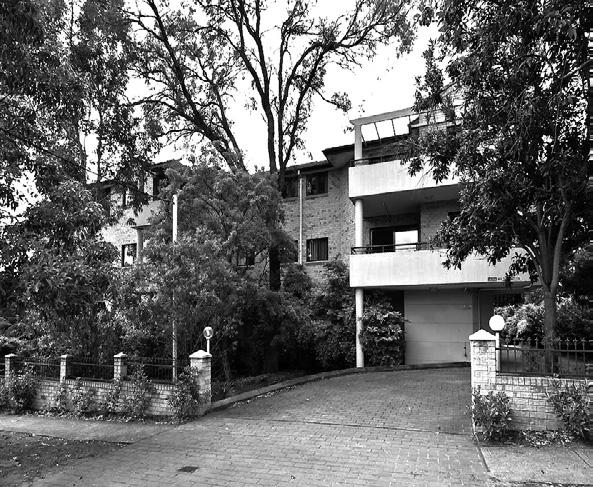

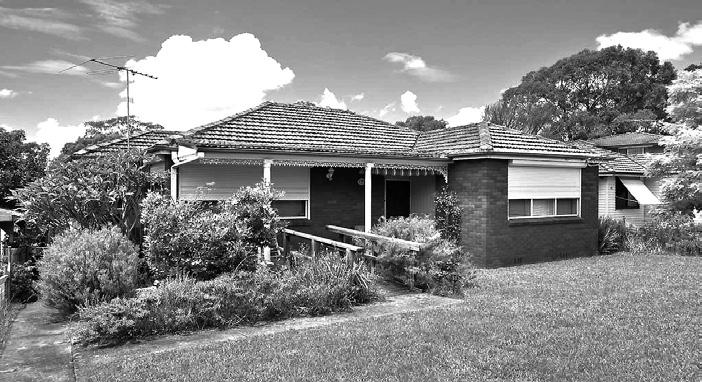









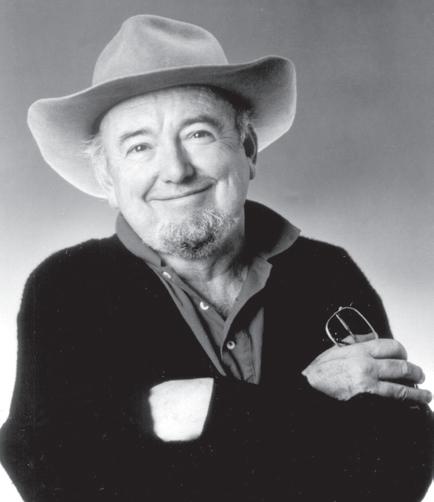 BY NOEL G DE SOUZA
BY NOEL G DE SOUZA
A nation’s food security must always be its top priority and that is what the Indian government currently claims it is doing. In this context, the lessons of the past should never be ignored such as the Bengal famine of 1942-1943. A new Australian book details that horrendous event when an estimated two to five million people perished.
The renowned Australian author Thomas Keneally’s book Three Famines is an indictment of misguided and often cruel policies of British administrations in Ireland (from where Keneally’s forebears migrated to Australia) and in India.

The parallels between the two famines (the Potato Famine of the 1840s in Ireland and the Bengal Famine of the 1940s) are astounding despite those events being a whole century apart. Nothing seems to have been learnt except the methods for denying people their basic food entitlements.
The cause of the Bengal Famine was not food shortage but bad administration which continued for far too long before relief was offered. A British journalist, Ian Stephens, Editor of The Statesman, courageously published details and photographs of starvation in the streets of Calcutta so as to inform Britain and the world of the plight of the Bengalis. The Hindustan Times was also instrumental in exposing the crisis which officialdom was successfully keeping hidden.
Bengali food habits depended on religion and caste but the common staple food was rice. It was a time of war; Japan had overrun Burma and was knocking at the door of Bengal. Food stocks were requisitioned under the outrageously named “Rice Denial Scheme” which deprived Bengalis of their staple food. The food was exported to the Middle East where food supplies were adequate.
There are many lessons to be learned from the 1940s food
crisis in Bengal. The enormous political consequences of that despicable period in India’s history have possibly not yet been realised. Such events can repeat themselves and they need to be prevented. The Independence of India and of Pakistan was just a few years away and that included the partition of Bengal itself.
Keneally’s well-researched and highly readable account is an indictment of the British administration under the Viceroy the Marques of Linlithgow. Keneally states that Linlithgow harboured such fanciful ideas that for India to be able to cope without British help, it needed the infusion of Nordic blood into Indians. Linlithgow did not even visit Calcutta during the crisis.
A British Governor was in charge of an ineffectual Bengal provincial administration which must share a major part of the blame. It allowed landowners (zamindars), food hoarders and profiteers to enrich themselves at the expense of a suffering humanity. The Nobel Laureate economist Amartya Sen is convinced that rumours of shortages caused rapid price rises making food purchase prohibitive.
Keneally’s book is a refreshing change from Western works whose sole objective is often the criticism of India’s alleged social structure and the underlying notion is that everything good in India resulted from British colonialism. Unfortunately, as Keneally points out, those were the very ideas that Churchill carried with him when news of the Bengal famine reached London.
Keneally notes that when sending-off the new Viceroy to India, Field Marshall Wavell, Sir Winston Churchill expressed resentment that Indians had not been grateful to Britain for setting up the British administration in India! He blamed the famine on Indians “breeding like rabbits”. According to Keneally that was exactly what the Irish famine had been outrageously blamed upon a century earlier.
Churchill had been posted to India in 1896 and took part in fierce fighting with North West Frontier tribesmen in 1897. He founded the India Defence League with the objective of perpetuating British rule in India. For Churchill, Gandhi was
a “seditious MiddleTemple lawyer” and a “half-naked” fakir.
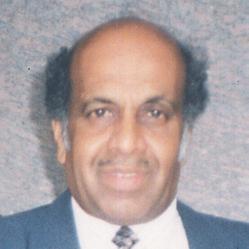
Madhusree Mukherjee, a research physicist, in her recently published Churchill’s Secret War: The British Empire and the Ravaging of India During World War II (2010) believes that Churchill’s racism exacerbated the Bengal famine. She points out that food ships from Australia bypassed India on the way to the Middle East.
Churchill should have remembered that some two-and-ahalf million Indian troops fought during World War II on the British side, many of them in Europe, including in Italy and France. Indian troops suffered heavy casualties in the service of Britain.
The new Viceroy Lord Wavell recognised the Bengal famine as a man-made crisis and set about taking steps in military style to redress the situation. He visited Calcutta and toured the affected areas. He pressured London, often to Churchill’s annoyance, for food supplies and welcomed American aid which was forthcoming.
It would be left to Viceroy Mountbatten, a few years later, to undo some of the damage caused in IndianBritish relations by the horrendous memories of the Bengal famine.
Three Famines
By Thomas Keneally (A Knopf, Random House, Sydney, 2010)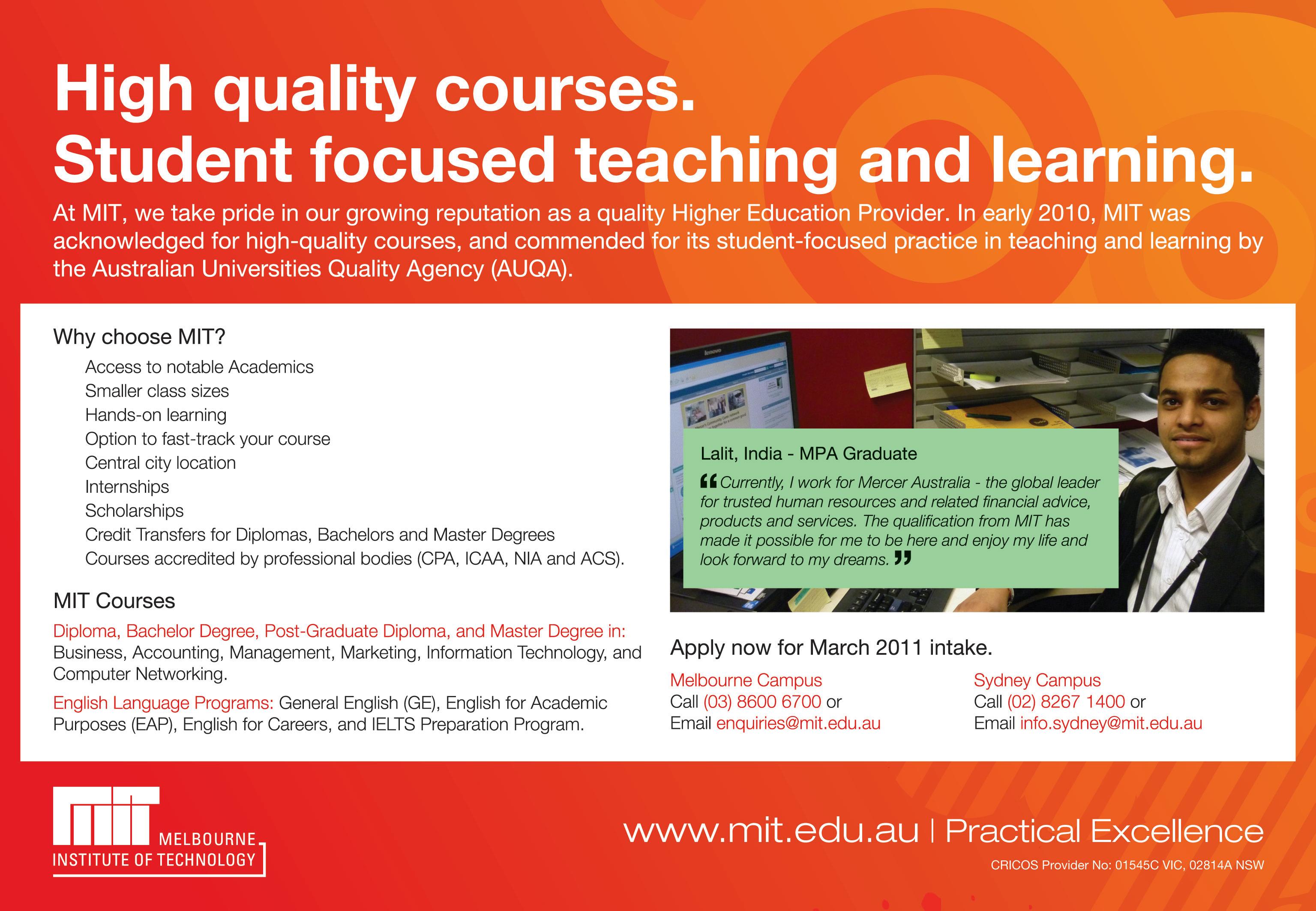


I was recently asked to speak to a group from the Telugu community about how Indian ancestral cultures can be maintained amid the onslaught of Western culture. This was particularly aimed towards the youth of the community, many of whom had just completed their schooling or had begun the early stages of university study.


It is not the kind of speech I am usually asked to give. Our communities don’t really have a culture of bringing in interesting speakers at our functions. The podium is usually reserved for people with titles within the various associations. I grew up hearing boring speeches from a host of my father’s contemporaries with titles like Honorary Treasurer and First Secretary of the Bangladeshi Association of New South Wales. It was a throw back to the formalities and bureaucratic practices of the old subcontinent, part of which is now changing.
Unsurprisingly, most of my friends and I did our best to spend these nights outside, usually in school playgrounds. Inside, there would usually be hours upon hours of Bengali songs and dances being performed, none of which seemed remotely related to my own experience.
The scene when I arrived to the Telugu function reminded me of such nights while I grew up. There were a host of elders and young people sitting outside while there was loud music and dance going on inside. But there was a difference. Most of the young people were participating. I entered the school community hall in Sydney’s suburbs to watch an ancient Gujarati dance with wooden sticks, being performed by all the generations together. It was a beautiful sight, especially in a modern, secular world where there is a yearning among many for ritual.
But what can these rituals mean in a world so far removed from that which it was derived from. For example, I remember attending a Hindu wedding where my family friends rushed to get water from a nearby lake as a substitute for the mighty Ganges. It was a particularly amusing example of an attempt to retain old rituals and culture.
But how much of this is worth maintaining?

In societies of such rapid change, something which is even more apparent in India, the old traditions, family structures and rituals are being placed
under enormous pressures by the unsettling forces of the market economy. But this can also cause great social and psychological unrest. Human beings still require a sense of belonging, a sense of collective identity.
Young people who grow up in Australia with family backgrounds from ancient cultures from the subcontinent can be in a particularly difficult place. Try telling your school friends you can’t come to their birthday party because you have to attend a Puja ceremony or prayer at the mosque. Likewise, friends attending weddings which attempt to re-create the entirety of tradition are bemused when it can take an entire week of their time.
But those children from our backgrounds who share little link with their past culture of traditions can also be lost, without an anchor or sense of how their family narrative shaped their lives today. It is impossible to look in the mirror and make sense of our lives through the lens of the Anglo-Saxon tradition that shaped Australia.
In some respects, I have found myself at an advantage because I can pick and choose the best aspects of both cultures. My ancestral culture retains strong family traditions, a massive emphasis on education and a respect for the past and elders which are less apparent today. Rituals like Ramadan or Bengali New Year give me a sense of the extraordinary history and culture that I am derived from. It also immediately gives me an international outlook and an ability to navigate between cultures.
But I am also careful not to allow my parents to hold me too tightly to their traditions. Many of these simply do not make sense in modern Australia, particularly practices like arranged marriage or extended rituals that are just not compatible with modern life. There is a culture of innovation, risk taking and suspicion of conformity that a more individualist culture allows and our traditional culture stifles.
Those families that hold their past traditions too rigidly, worrying what their own parents in India might think about choices their grandchildren are making, are at a distinct disadvantage and are less equipped to manage the complexities of today’s world. Placing too much emphasis on strict religious practice and viewing it as a way to shield children from the liberal ways of the West can also be a recipe to stifle the energies of young people.
Finding the right combination is not easy, but a sense that a combination is the best way to approach the culture clash is perhaps the most important step.
Those families that hold their past traditions too rigidly, worrying what their own parents in India might think about choices their grandchildren are making, are at a distinct disadvantage and are less equipped to manage the complexities of today’s world.

In the short history of our nuclear age, another page was recently scrawled when India’s Manmohan Singh and France’s Nicolas Sarkozy sealed a pact of atomic collaboration. The genesis of this optimism was 65 years ago when the father of the nuclear bomb, Robert Oppenheimer, awed by the blinding power he unleashed, recalled the Bhagavad-Gita: If the radiance of a thousand suns were to burst at once into the sky, that would be like the splendour of the mighty one.
Oppenheimer, fluent in Sanskrit and proud to admit the Bhagavad-Gita was strongly influential in forming his character, was intrigued by the epics of salvation and damnation in the holy Hindu scriptures. His initial euphoria at seeing what he believed was a manifestation of the Lord was because he believed, with conviction, that this was their vehicle to salvation, a deliverance from the horror and sins of the Second World War. Should India see this fire of the Gods as an enlightenment to solve her famine of electricity? Or another damnation?
It is astounding how many strong religious references have been made in the nuclear scramble. 28 years after Oppenheimer’s blast at the New Mexico desert site, that he named Trinity, after a central Christian belief, the 8 kiloton ‘Smiling Buddha’ was denoted at Pokaran on Buddha Jayanti. Were these placating gestures? Remorse for letting infant politicians steal from God’s gun safe? For no one with an IQ higher than the room temperature would argue that nuclear power sits comfortably in the hands of mere mortals.


Ajit Pawar the Deputy Chief Minister of Maharashtra is resigned to proving this beyond ambiguity by forcefully arguing for the construction of the two French nuclear plants in Jaitapur, with blatant lies.
cue, in turn igniting a sizeable oil leak that had been neglected. The oil fire incinerated the power cables rendering all systems, including safety systems off-line. There was of course a reserve set of power cables but they were bewilderingly placed within close proximity to the primary cables and were not in anyway fireproofed. Without electricity to power the pumps to circulate coolant around the fast overheating core, staff were lotto lucky to manage to manually shut down the plant.
The second accident bares naked the undeniable fact that antiquated bureaucratic organisations like the AED cannot be within a mushroom cloud of a nuclear plant of any size. At Kalpakkam Atomic Processing Plant in 2003, a valve failure allowed highly radioactive material to enter a tank of lower radioactive material. There were no sensors to detect either the valve failure or the now lethal amounts of radiation that the plant’s workers unknowingly bathe in. The leak was only discovered, after a criminally long time, when a fuel sample was examined in another section of the plant.
This incident, little known as it is, would have not have seen any light had the workers’ union at the plant not become proactive. They presented a letter to the plants governing body, Bhabha Atomic Research Centre, after this organistion had disregarded a committee’s strong recommendation that the plant be immediately shut down after evidence of continued wildly excessive radiation leakage. The letter amongst other safety recommendations demanded a full time safety officer. BARC’s constructive critique was to blame the workers for not wearing their thermal badges (that are designed to detect long time exposure not sudden catastrophic exposure) and for entering the room (that was part of the duties demanded of them).
Should India see this fire of the Gods as an enlightenment to solve her famine of electricity? Or another damnation?
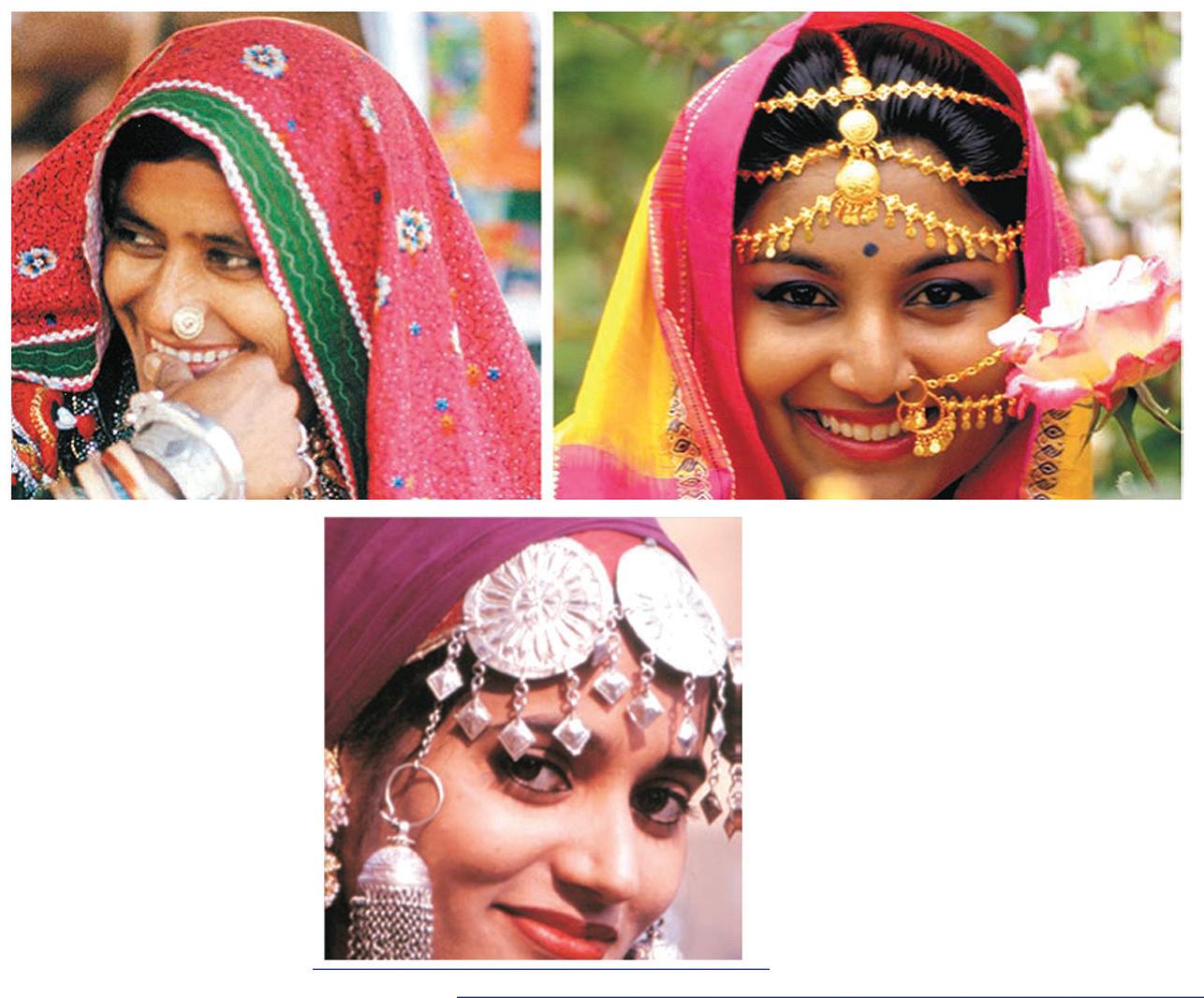

The real fresh one from Mr. Pawar was, “There has not been even a single case of an accident in India’s 18 nuclear reactors.”
India’s atomic energy program is highly classified; however the Atomic Energy Department is obliged to report shutdowns of plants to the International Atomic Energy Agency where they are made a matter of public record. Here we depressingly find the first of two accidents that stand out amongst a crowd of others.

In 1993, the Narora nuclear plant in Uttar Pradesh was saved from a cataclysmic event only by a forgiving God. Ignoring warnings of catastrophic turbine failure by the manufacturers, the plant management pushed the system sufficiently enough for the turbine blades to explode. These cut a hydrogen carrying pipe that exploded on
The workers went on strike until their leaders fell victim to the time honoured babu weapon of choice; they were transferred. BARC got the last scientific word in: “If the place was not safe they would not have joined back.”
The only consolation for trailing behind the West in development is the precious opportunity to not repeat its foolhardiness. India must stop equating wealth with intelligence and blindly duplicating the West’s sometimes mad-as-a-Marchhare technological experiments. But if it must, then these all-powerful nuclear reactors, with the radiation of a thousand Hiroshimas, must be administered by India’s world beating managerial talent, not bitter old men.
On that day of the world’s first nuclear blast, even before the gates of hell had fully closed, many of the greatest minds of the age openly wept and Openheimer recalled another verse from the Bhavagad Gita: I am become death, the destroyer of worlds.
I’ve forgotten and forsaken over the years.
BY MADHUCHANDA DAS
Life’s a journey, not a destination, goes the popular pearl of wisdom from the American philosopher Ralph Waldo Emerson.
How well I understand you now, Ralph. You see, I’m planning my holidays, and all of a sudden, it’s the journey, not the destination, that seems paramount.
Having outgrown the “posing-shamelesslyin-front-of-world-monuments” and the “furiously-shooting-away-with-sophisticatedequipment” phases of my life, now, it’s all about the journey, the moment and the experience of travel. I’m done with smugly circling cities I’ve traversed on the world map. It used to be a frantic, stressed-out mission to capture the world with my lens then. And overscheduled itineraries, “touristy” 10-point sight seeing agendas and frenzied shopping sprees.
But now, I’ve progressed into the midlife leanings towards relaxed meanderings and wanderings. So it’s more about getting lost in the obscurity of quaint towns untouched by the debasement of modern civilization. It’s more about the innate simplicity and gentleness of unpretentious folk who accept you into their territory and homes with no strings attached.
It’s more about witnessing the pristine though paramount power of nature that unashamedly exposes the transience of human attainment. It’s more about finding commonalities, forging bonds, building relationships, letting go of the past, surrendering to the now, and creating memories for the future.
Going back to my roots is certain but the modus operandi has shifted gear. This year I’m attempting to re-invent the long lost Bharat Darshan from the pages of my childhood.
Yes, it’s no more about the conventional touch-down and touch-off swirling across the country’s expanse in budget flights 35000 feet above my beckoning land. On the contrary, it’ll be back to travelling on the world’s largest, single owned network of trains aptly called Bhartiya Rail. It’ll be back to being the delirious 10-year-old from decades ago. It’ll be back to re-discovering the real people that define the land, back to reacquiring something

Yes, somewhere deep down Yatra, Shyam Benegal’s epic TV serial from 1986, has never left me. It had fascinated me then with its theme of national integration created from a comfy first class coupe of an Indian railways train. I didn’t realise it then, but can fathom now as to why I waited desperately for every episode.
Like most kids in my colony in the Indian business capital, summer vacations implied the annual pilgrimage to the faraway native place. And I was the luckiest of the lot with the longest journey to make. An unbelievable 3200 kilometres on chhuk chhuk gaadi the extreme other end of the country. The eventful expedition needed two whole nights and three days to be spent on board. And so the excitement unfurled right from the taxi ride to the station, to locating our reserved berths, followed by the flagging off of the train to the final arrival at the terminating destination.
The journey spelt three days of sheer fun, frolic and freedom. From the smell of the coal-fired engine, to the regular fights with my elder sis over the window seat, to shy introductions with co-passengers, to sharing meals like a grand Indian joint family, to clamouring to get up first on the upper berth, to unending strolls up and down the compartment. I would be completely oblivious of the breathtaking countryside unfolding outside the window. Funnily, the similar sounding shrill calls of chai garam chai, jhalmuri, boiled anda (eggs) and samosa at every station across the length of the country made me assume that India probably was the same everywhere. Life seemed like a chapter from Enid Blyton’s classic Famous Five series. It was a blast and this was home.
The anti climax, however, was the tearful farewell in the end, with the mandatory exchanges of telephone numbers and addresses amidst the chaotic madness of the station. Yes, I knew not where they came from or couldn’t care less about where they went, but in a subtle way they would touch me. As I followed my family up the over bridge, my welled up eyes would cast a final look at the majestic “Black Beauty” engine that had magically transported me to the lush green lands of my Thakuma (paternal grandmother).
I was incapable then of dissecting the almost
I’ve progressed into the midlife leanings towards relaxed meanderings and wanderings. Now, it’s more about witnessing the pristine though paramount power of nature that unashamedly exposes the transience of human attainment.
poetic prowess of that gargantuan voyage or how it was akin to my journey of life. I even failed to notice the smelly toilets or the dirty
No.1 No.1 Pest Pest Control Control
10% discount to all restaurants, pensioner
environs. That I began to appreciate only later as I graduated in the so-called skills of life.
Life underwent massive upheavals since. I found myself surrounded by the glossy hustle and bustle of airports across the globe in the second phase of my journeying travails. Strange, but I fail to recollect any gleaming faces or chirpy conversations from this second period of rather methodical movement.
And so, after satiating my life’s appetite for touristy conquests, I’m back to phase one. The passion for travel remains as fervent as before. Only this year I hope to venture out with a nouveau mission in that bygone direction. I trust I will once again get to meet my long lost chaiwallah, jhalmuriwallah and my dearest train family en route.
Wish me luck!
We Treat All Pests
• Cockroaches

• Rats, mices
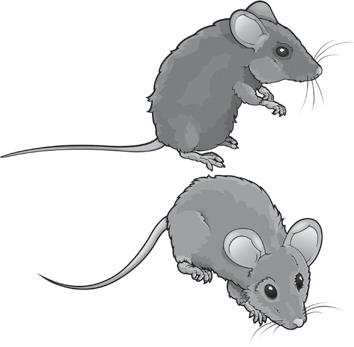
• Ticks


• Bed bugs
• Fleas
• Spiders
ABN 77259217613
• Termites (Save your houses)

We accept all cards, cheques, cash
CALL SHAUN (SAROJ) 0421 936 489
$155 (Conditionsonly Apply)

Forget the over-scheduled itineraries, and learn to experience the moment in your travels

Ten years. Ten long years. Or should I say ten short years, for these ten years seem to have slipped by pretty quick.
It is hard to comprehend that it was ten years ago that I was dancing my way into the 21st century to the tune of Jennifer Lopez’s Waiting for Tonight . I am ten years older, ten years richer in myriad experiences – some good, some challenging, some testing and some I would rather forget. The world has changed so much; literally, the face of the earth I am sure looks very different when viewed from outer space – the twin towers are missing, devastating floods and earthquakes and tsunamis have battered the inhabitants, and terrorism has taken a whole new meaning (moved up a notch!). There is fear in every mind and doubt lurks at every corner, newer methods of checking and testing are being devised every day. There are many regrets - could things have been different, would we have done things differently if we had the opportunity?? That is an intriguing question to answer!
Life it is believed comes round a full circle and that what goes around, comes around... but one often wonders is this what life is all about? We are moving ahead in times, but when it comes to our basic instincts, have things changed a great deal? Have we been able to iron out past differences? A bird’s eye view of the world as it exists today shows that we as the evolved species that inhabit this earth have not changed a great deal. The last ten years may be a testimony to our technological developments; gadgets getting smaller, more versatile and yet, we’re more dependent! Social interactions have reduced to the possible minimum required; children are unaware of the joys of childhood as they are slowly graduating from watching television from their cribs to going crazy on the controls of a video game as soon as they learn to sit up. Gone are the days when mothers went for long walks with the prams, talking to the ‘bub’ all the time, educating him with sounds and sights. I remember the times when my adult son was a child. His gross and fine motor skills were enhanced by putting the building blocks together or playing with the dough while I made rotis. There was interaction at all times. Not that there were no televisions then, or video games, but then life did not revolve around them. Jigsaw puzzles kept him sharp and he innovated ways of challenging himself. I remember the time when I was amazed to see him
trying to put a shape together by looking at its image in the mirror!

Ten years into the 21st century and women are making their presence felt in all areas of life. But I find it quite tragic that even today, when a woman succeeds it makes headlines as though it is an ajooba How can we ever say that we live in a society where men and women share equal rights when everything a woman does is news, while achievements by men are just what they should be - ‘achievements’. If we are equal citizens, then stop patronising us. Headlines like “Australia gets its first woman prime minister” should be replaced with “Labor stays in power, Gillard wins over Abbott”. We still continue to observe International Woman’s Day even in this day and age. And why do we do so? We may be into 2011, but women are still taken advantage of, looked down upon and treated with lack of respect. It is appalling to note that even today in many countries women activists are fighting for equal rights, to
be taken seriously, to be respected and accepted. Even today there are men who believe that natural disasters like earthquakes and floods are caused by women who dress and act immodestly. Thousands of women still die during childbirth, and pregnancy is not a matter of choice for thousands more. In many parts of the world women do not address the men in their lives by their names; there are different versions and different dialects of Pappu ke bapu Society has changed in the past ten years – there has been an improvement in the general quality of life, though it comes at a dearer price. People do not believe in leading a debt free life. It is always buy now, pay later. Even people who can afford to buy and pay, prefer the ‘pay later’ option as in this business oriented world, it is putting money to optimum use. The simplicity of living seems to have lost its way. While Gen X believed in living within their means, Gen Y has looks to live beyond their means. They like branded goods and luxury items. A car is no longer a comfortable vehicle that takes you from point A to point B, it is a machine - the more the power and speed, the better. They do not believe in living in independent houses with a small backyard like most of us do, a studio apartment with a small terrace is good enough. Why put your earnings into a place that you go to merely spend your nights, when you can put it to good use by travelling the world!? A wise logic, I must say!
I know things are going to continue to change in the next ten years and we may reinvent ourselves. The good old bygone days may be back. Fashion trends have proved this time and time again. I am not sure if the time when simple living and high thinking was a way of life and not just an adage, is going to be back. I can always hope for it and undoubtedly it is hope that keeps us ticking.
So, let’s hope that the next ten years are going to be better than the last ten. Let’s hope that society becomes more tolerant, and hatred and nepotism fade away. Let’s hope that the youth of today, who will make up the intelligentsia of tomorrow, learn lessons from our mistakes and make amends. Let’s HOPE!
Wishing everyone a HAPPY and HOPEFUL 2011.
While some aspects of life changed drastically in the noughties, others remained much the same
The last ten years may be a testimony to our technological developments; gadgets getting smaller, more versatile and yet, we’re more dependent!
Today many seniors choose to live at home independently rather than move into an institution. There are many supports and services that can help older people to continue to live in their own homes, but sometimes it is no longer possible to manage alone at home. You may find yourself in a situation where you have been ill, have developed a disability, or have recently lost someone close to you. The decision to move into residential aged care is not often an easy one. The need to move into residential care is a major transition for all the family members and often comes with mixed emotions. Some people happily plan for their future and choose to move into an aged care home while others, despite becoming increasingly frail, prefer to remain at home. Aged care homes are available across Australia for older people who can no longer live at home and need to plan for long-term accommodation and care. This is known as ‘residential aged care’. It is designed to meet the needs of older people who can no longer live at home and provides them with continuous supported care.
Before you can apply to enter a government-funded aged care home, you will need to be assessed and have your application approved by your local Aged Care Assessment Team (ACAT). A member of the Aged Care Assessment Team will visit you to conduct the free assessment. Once your application is approved by the team, you can start applying to homes. Choosing a place to live is a very important decision so get as much information as possible about the homes in your local area from friends, social workers and your doctor.
There are two main types of residential aged care in Australia, high-level care (or ‘nursing home’) and low-level care (or ‘hostel’). All aged care homes must provide a range of care and services for all residents, with some additional services for individuals, depending on their needs.
Low-level care is the care which is provided for people who have been assessed by an Aged Care Assessment Team (ACAT). Mostly, people in low-level care can walk or move about on their own. Low-level care homes (which used to be called hostels) generally provide accommodation and personal care, such as help with dressing and showering, and nursing care, when required.
High-level care is the care which is provided for people who have been assessed by an ACAT, and need almost complete assistance with most daily living activities. High-level care homes (previously known as nursing homes) are for people who need 24-hour nursing care. This may be because they are physically unable to move around and care for themselves, or because they have a severe dementia-type illness or other behavioural problems. High level care includes accommodation services such
as meals, laundry and room cleaning, as well as personal care. Medical needs are managed by nursing staff. Residents in high care must receive additional care and services at no additional cost.
High level care residents must be provided with additional items, care and services such as:
• nursing services and equipment, such as equipment to assist with mobility e.g. crutches, walkers;

• goods to assist with toilet and incontinence management;
• basic medical and pharmaceutical supplies and equipment;
• help with medications and provision of therapy services.
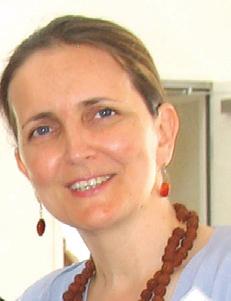
The Australian Government provides substantial funding to aged care homes, but most residents will also pay a number of fees and charges to the home, depending on their income and assets. There are two types of fees that you may be asked to pay:
• a basic daily fee, and
• an income-tested fee.

All residents of Australian Government subsidised aged care can be asked to pay a basic daily fee as a contribution towards accommodation costs and living expenses, such as meals, cleaning, laundry, and etc. Under the Aged Care Act 1997, aged care homes are required to care for a certain minimum number of people who need help to pay for their aged care accommodation – known as supported concessional or assisted residents. The government has also introduced provisions for residents facing genuine difficulties in meeting their costs. Financial hardship assistance is available for daily care fees, income-tested fees, accommodation bonds and accommodation charges.
Living in an aged care home means living with many new people under one roof. No matter which home you choose, your rights and responsibilities as a resident will be the same. The government has established a charter of residents’ rights and responsibilities and this should be on display in all aged care homes. Residents of aged care homes have the same personal, civil and consumer rights as any other member of the community.
As a resident of an aged care home you have the right to:
• Receive quality care that is appropriate to your needs
• Information about your state of health and about available treatments
• Be treated with dignity and respect and without abuse, neglect or discrimination
• Maintain your cultural or religious practices
• Have your personal privacy respected
• Live in a safe, secure and home-like environment

• Have a voice in your living arrangements
• Complain and take action to resolve disputes
At the same time, you will be expected to respect the rights and needs of other people in the home, including staff and other residents.
If you, or someone you are caring for, needs help to find aged care services you can telephone to Aged Care Information Line (1800 500 853) from anywhere in Australia. Or you can telephone Commonwealth Respite and Carelink Centres (1800 052 222, free call) during business hours or, for emergency respite support outside standard business hours, call 1800 059 059 (free call).
This article is provided on behalf of the Community Partners Program undertaken by Sydney Multicultural Community Services. The Community Partners Program (CPP) is an initiative of the Australian government Department of Health and Ageing. For more information please call Community Partners Program (CPP) officer Maryam on (02) 95576157 or (02) 96633922 or via email maryamm@ sydneymcs.org.au . The above information is adopted from The Department of Health and Ageing websites www.agedcareaustralia.gov.au
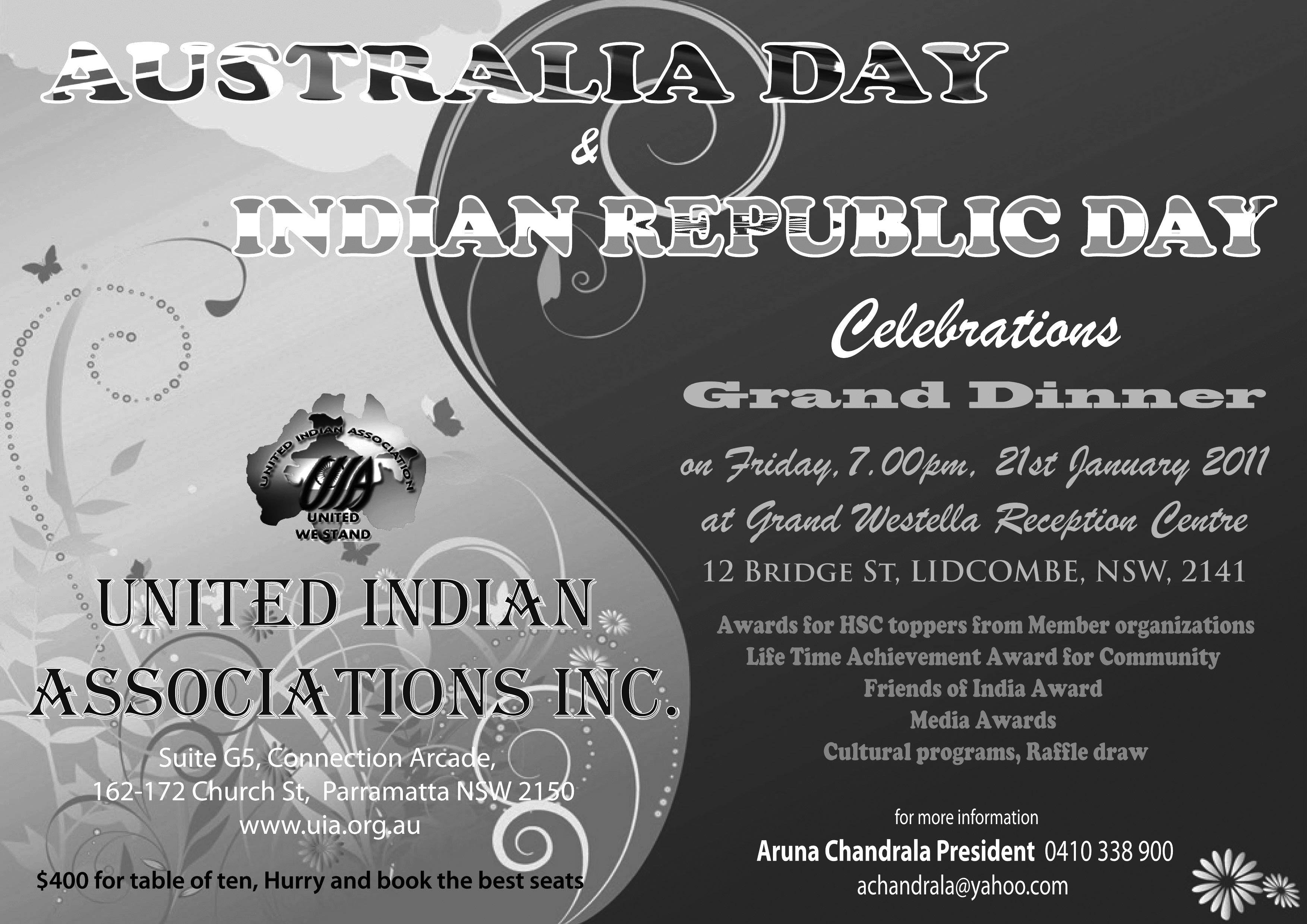






January marks the birth anniversary of Swami Vivekananda (1863 - 1902). Born Narendranath Dutta, he was the chief disciple of Sri Ramakrishna Paramahamsa. After Sri Ramakrishna’s death, Vivekananda renounced the world and criss-crossed India as a wandering monk. He later sailed to Chicago and represented India as a delegate in the 1893 Parliament of World Religions. An eloquent speaker, Vivekananda was invited to several forums in the United States and spoke at universities, clubs, public/private lectures disseminating Vedanta and yoga in America, England and a few other countries in Europe. He also established the Vedanta societies in America and England. Later he sailed back to India and founded the Ramakrishna Math and Ramakrishna Mission, a philanthropic and spiritual organization. Here is a compilation of some of his sayings and utterances.

• Each soul is potentially divine. The goal is to manifest this divinity within by controlling nature, external and internal. Do this either by work, worship or psychic control or philosophy – by one or more or all of these and be free. Idols or temples or churches or books are only the supports, the helps, of his spiritual childhood: but on and on he must progress.
• Faith, faith, faith in ourselves, faith, faith in God — this is the secret of greatness. If you have faith in all the gods and still have no faith in yourselves, there is no salvation for you. Have faith in yourselves, and stand up on that faith and be strong; that is what we need. All power is within you. You can do anything and everything without even the guidance of any one. Stand up and express the divinity within you.
• The whole gist of Jnana-Yoga is to show humanity the method of undoing Karma. A caterpillar spins a little cocoon around itself out of the substance of its own body and at last finds itself imprisoned. It may cry and weep and howl there; nobody will come to its rescue until it becomes wise and then comes out, a beautiful butterfly.
• If what we are now has been the result of our own past actions, it certainly follows that whatever we wish to be in future can be produced by our present actions; so we have to know how to act.
• Work for work’s sake. There are some who are really the salt of the earth who do not care for name, or fame, or even to go to heaven. They work just because good will come of it. There are others who do good to the poor and help mankind from still higher motives, because they believe in doing good and love good. Unselfishness is more paying, only people have not the patience to practice it.
• In studying the great characters the world has produced, I dare say, in the vast majority of cases, it would be found that it was misery that taught more than happiness, it was blows that brought out their inner fire more than praise.
• You cannot teach a child any more than you can grow a plant, you can only help by taking away obstructions. Loosen the soil a little, so that it may come out easily. Put a hedge round it; see that it is not killed by anything, and there your work stops. You cannot do anything else. The rest is a manifestation from within its own nature. So with the education of a child; a child educates itself.
• The Lord is very merciful to him whom He sees struggling heart and soul for Realisation. But remain idle, without any struggle, and you will see that His grace will never come.
• The calmer we are, the better for us, and the more the amount of work we can do. When we let loose our feelings, we waste so much energy, shatter our nerves, disturb our minds, and accomplish very little work. It is the calm, forgiving, equable, well-balanced mind that does the greatest amount of work.
• One of the greatest lessons I have learnt in my life is to pay as much attention to the means of work as to its end. Our great defect in life is that we are so much drawn to the ideal, the goal is so much more enchanting, so much more alluring that we lose sight of the details altogether. We forget that it is the cause that produces the effect; the effect cannot come by itself; and unless the causes are exact, proper, and powerful, the effect will not be produced.
• This is the secret of spiritual life: to think that I am the spirit and not the body, and that the whole of this universe with all its relations, with all its good and all its evil, is but as a series of paintings—scenes on a canvas—of which I am the witness
• Never talk about the faults of others, no matter how bad they may be. Nothing is ever gained by that. You never help one by talking about his fault; you do him an injury, and injure yourself as well. We must give them something higher; tell them of their own glorious nature, their birthright.
• Look here-we shall all die! Bear this in mind always, and then the spirit within will wake up. Only then will all meanness vanish from you, practicality in work will come, you will get new vigour in mind and body, and those who come in contact with you will also feel that they have really got something uplifting from you.
• Never quarrel about religion. All quarrels and disputation concerning religion simply show that spirituality is not present. Religious quarrels are always over the husks. When spirituality goes, leaving the soul dry, quarrels begin, and not before.
• If money helps a man to do good to others, it is of some value; but if not, it is simply a mass of evil, and the sooner it is got rid of, the better.
Compiled by GANESH RAO
Sant Mat is a practical spiritual path based on meditation, ethical living, service to others & love for all creation. Its goal is to enable the soul to return & merge into its source; the purpose of human life described by mystics of all traditions. Discipline & dedication are essential, as is the help of a competent living master. Entry is via a preparation program. There is no charge at any stage.
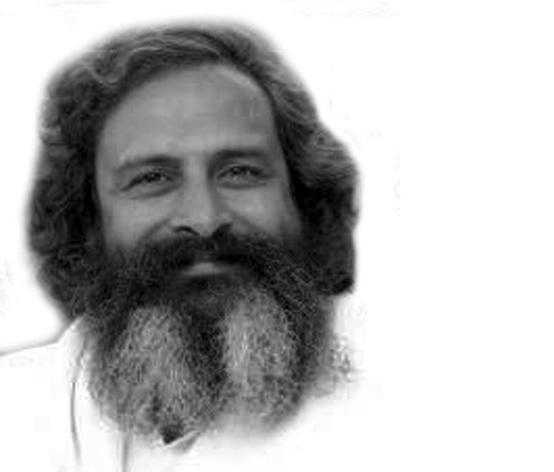

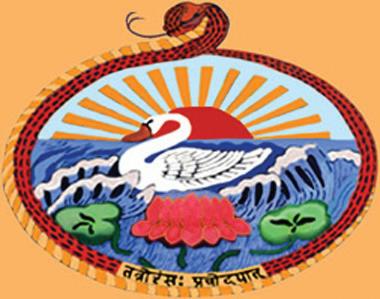
For more information...
Contact Sita
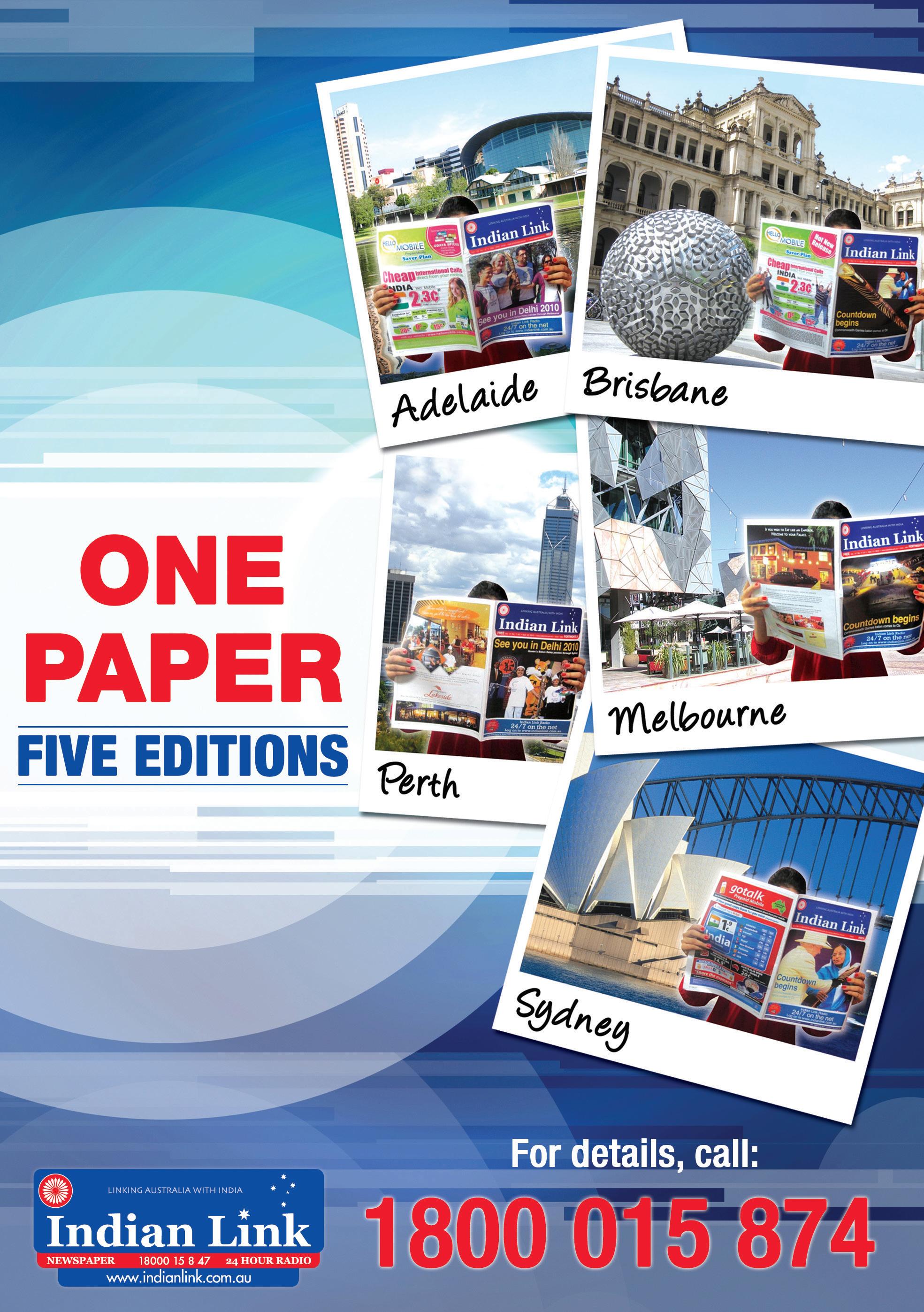
PUBLISHER
Pawan Luthra EDITOR Rajni Anand Luthra ASSISTANT EDITOR Sheryl DixitMELBOURNE
Preeti JabbalCONTRIBUTORS
Jyoti Shankar, Ritam Mitra, Sai Narayan, Gaurav Pandey, Mamata Salakapurapu, Noel G deSouza, Tanveer Ahmed, Roy Lange, Madhuchanda Das, Nima Menon, Geeta Khurana, Maryam Maghsoodi, George Thakur, Thomas King, Malli Iyer, Nancy Sood.
ADVERTISING MANAGER
Vivek Trivedi

02 9262 1766
ADVERTISING ASSISTANT
Priti Sharma
02 9279 2004
GRAPHIC DESIGN AND LAYOUT
Kaye Martin
Indian Link is a fortnightly newspaper published in English. No material, including advertisements designed by Indian Link, maybe reproduced in part or in whole without the written consent of the editor. Opinions carried in Indian Link are those of the writers and not necessarily endorsed by Indian Link. All correspondence should be addressed to
Indian Link
Level 24/44 Market St, Sydney 2000 or GPO Box 108, Sydney 2001
Ph: 02 9279-2004 Fax: 02 9279-2005
Email: info@indianlink.com.au

The dichotomy that is India continues to amaze. It is a country of extremes, not only in weather and climate, food and culture, clothing and languages, but also in lifestyles and attitudes. It is a country which has just concluded its annual display of sporting wealth; the vulgarity of money on public display while the aam janta battles with food inflation at 18.32%.
This same aam janta which has been reading front page stories of corruption in India - whether the $39 billion 2G scam or the Commonwealth Games allegations of corruption amounting to similar billions - it seems to be a free-for-all in this rarefied atmosphere of corruption.
Food inflation in India has recently been recorded at 18.32% with onions selling at AUD 2 per kilo (82% dearer on an annual basis).
Eggs, meat and fish are costlier by 20.83%; fruit and milk by over 19%. Do put this in context of per capita income of Indians of AUD 2 per day. (Per capita income means income of each Indian is evenly divided among the country’s population of 117 crores).
This increase in food prices will feed into India’s inflation rate which is now in the vicinity of 8.5%. This is in sharp contrast to the inflation rate of 3.5% targeted by the government. With an expected growth rate of about 9% for this year, it seems that in real terms, India’s economic miracle for the man in the street is just not happening.
Rather than being able to spend time to work on the economic resurgence of India, the powers that be seem to be fully dedicated
BY PAWAN LUTHRAto fighting corruption charges around them or ensuring their position of power is retained. The man on the street has been exploited by politicians, bureaucrats, army men, judges, corporate managers, the police – in fact, the stench of corruption seems to be rampant in India.
Currently there is a $31 billion probe into the activities of the ex-Telecommunications Minister Andimuthu Raja. Billed as the largest corruption investigation in India’s history, it comes hot on the heels of the investigation into the corruption activities of the recently concluded Commonwealth Games.
In comparison, the ongoing investigation of corruption against ex IPL chief Lalit Modi now seems to have receded in the background.
While there is always hope that the truth will emerge, it seems that the corruption watch dog Central Bureau of Investigation (CBI) does not really have a sterling track record in high profile cases. No convictions have been recorded in the Bihar fodder scam of 1996 in which a sum of $215 million was mysteriously lost, or the 25-year-old Bofors bribery scandal or even the $500 million Telgi scam.
Yes, the CBI does list over 70 per cent success rate in its fight against corruption on its website. Yet the most important conviction seems to be a telephone linesman in Mumbai
who was sentenced to 3 years’ rigorous imprisonment for taking a $11 bribe to install a phone line, and a Union Bank of India clerk who was sentenced to two years’ jail for accepting a $109 bribe, according to an Oct 2009 listing of important convictions.
The recent Hindi movie No One Killed Jessica tells of the malaise in the country’s capital where a person is gunned down in front of dozens of witnesses, and yet when the time comes to confront the accused, most turn away, having been either bought off or intimidated by the powerful figures behind the accused. Yet while Delhi’s lack of morality is portrayed unashamedly here, the film also depicts the fight for justice by a few lone crusaders who battled against all odds. This is Bollywood, but it’s based on a true story.
One wonders as to how Bollywood script writers would value the current problems of corruption in India. Perhaps the carrot and the stick approach may be an option. The ability to pay a high legitimate salary for government positions, along with a draconian punishment system for those caught abusing the system, may lessen the temptation for corruption. Also needed, is a faster moving judiciary, stringent character checks of those entering politics, a crackdown on the black economy, an education system which has a greater emphasis on ethics and morals, rather than geography and science.
Perhaps these Bollywood solutions seem unrealistic. But then, so is the price of food going up by 18% in one year.

Every season has its own special foods. As temperatures are on the rise so is the demand for some cool summer food, instead of hot sizzling soups.
But with summer here, jumpers and jackets are off leaving us in the open with extra weight we have put on during the long winter months. Now it is everyone’s dream to fit into a beautiful sleek swimsuit. But it becomes quite a challenge to enjoy smoothies and ice creams as well as maintain our weight, or even try to lose the extra kilos. But summer also brings along lots of sunshine and long days, and nature provides an endless bounty of fresh fruits and vegetables for our pleasure.
The seasonal shift from spring to summer means a change in methods of cooking too. Nobody wants to slave in front of the stove during hot summer weather. So go lighter and shorter, and make your main cooking methods stir frying, steaming and light boiling, instead of frying or planning elaborate meals.
Here are some ideas and foods to help you keep cool and also maintain your weight:
Water
Water is the most refreshing and cool drink for summer. It is also very important to drink plenty of plain water to keep yourself hydrated during the hot summer months. Replacement of fluid loss, especially during exercise sessions in summer, is important. When going swimming or doing other activities, or even going to the park or supermarket, do not forget to carry a water bottle with you.
mint, coriander and other herbs, or low fat dressings. Besides being low in calories, fresh salads are loaded with vitamins, minerals, antioxidants, and fibre. Add some sprouts, boiled or baked beans, tofu, boiled eggs, or fresh paneer to your salad to increase the amount of proteins in it.
same time. And kids love smoothies, so they are a perfect way to get them to eat fruit. Try to make smoothies with bananas, strawberries, rockmelon, kiwi fruit, passion fruit, mangoes, peaches, plums and berries. These are full of vitamins and antioxidants and are great for an increased fruit intake.
Let us forget about hot gulabjamun and and instead focus more on some chilled fruit desserts. Frozen grapes, litchi and cherries or low fat fresh fruit ice creams or banana sundaes made from low fat ice creams are also some good summer food choices. Frozen yoghurts, chilled kheer and fruit custard make great summer desserts.
Yoghurt, matha, lassi, chaas all are excellent for summer. Raitas are a good and healthy add-on to your regular summer meal. In summer, one can experiment with cucumber, lauki, or a kachumbar made from onion, tomato, cucumber, radish, pineapple, potato, banana, and/or boondi.
Try to go in for small and frequent meals instead of three large meals in summer, as these lead to bloating and a feeling of discomfort.
Avoid indulging in fried food like puris, samosas, pakoras , hot chips, hot dogs, burgers, and spring rolls, as these involve a lot of cooking at high temperatures with lot of time involved in the hot kitchen. They also have the thermal effect of increasing the body’s temperature.
Salads
Salads are a great way to start your meal. Try to include plenty of salad vegetables like cucumbers, carrots, capsicum, mushrooms, lettuce, cabbage, and tomatoes. But do not overload these with heavy salad dressings. Salad greens are full of folate and rich in vitamins A
Keep your refrigerator well stocked with fresh vegetables like cauliflower, zucchini, broccoli, carrots, eggplant, and celery. The antioxidants and vitamins present in these help to build up your immune system and minimize skin damage in the summer months. While packed with healthful dietary fibre, vitamins, minerals and nutrients, fresh vegetables also are low in calories and have no added fats or sugars.
Instead of hot soups, try to have cool cucumber soup and gazpacho which are loaded with crunchy vegetables. These
Lassi – either sweet or salty, nimbu pani, jaljeera, panna, thandai , coconut water, barley water… nothing can beat these cool delicious drinks for summer. Adding mint and roasted ground cumin seeds to lassi make it an irresistible savoury drink, while nimbu pani (lemon juice) is an excellent source of Vitamin C and a very good appetizer. Avoid having sugar-laden soft drinks and carbonated beverages.
Summer fruits like mangoes, watermelon, rockmelon, litchi, nectarines, plums, apricots are all juicy and have high water content. These fruit are good sources of folate, Vitamin A and antioxidants. Fruit can be had as a snack as well as desserts or in smoothies.
This is an excellent way to enjoy fruit in summer. Similar in consistency to milkshakes, smoothies are quick, nutritious, and amazingly rich at the

While packed with healthful dietary fibre, vitamins, minerals and nutrients, fresh vegetables also are low in calories and have no added fats or sugars.
Ice creams are irresistible in summer, but equally fattening as well. Unrestrained consumption of ice cream during the summer months adds calories. However, avoiding chocolate sauce and nut toppings brings down the calorie count. Better alternatives to fattening ice cream include low fat ice creams, sundaes, frozen yoghurt, and smoothies.
But summer also brings along lots of sunshine and long days, and nature provides an endless bounty of fresh fruits and vegetables for our pleasure.

You could put them in muffins, in your cocktails, in a sauce for your pancake or for your grilled chicken… but raspberries are best eaten fresh
BY RAJNI ANAND LUTHRA
On a driving holiday around Tasmania recently, we were told a few times that we should go raspberry picking.
“There are many farms on your route,” they told us at every overnight stay. “Stop off and pick your own raspberries”.
We did, but never got to pick any fruit – and just barely managed to buy some: at every farm, it was strictly one small tray per customer, thank you.
Was there not enough fruit this season? Or are they just discouraging random pickers because the fruit are really too fragile? Who knows, but we were cleverly directed towards a whole host of raspberry products that were on sale – jams and sauces and conserves and spreads and yogurts, even vinegars.
But of course these can’t match eating the fruit the way God intended – just as they are. Fresh raspberries are simply wonderful just by themselves.
Throw some over your granola at breakfast, to eat with milk or yogurt. Toss them with peeled lychees and melon, and dress with chopped mint, for an Asian-style fruit salad. Top a chocolate cake with raspberries and serve with a good quality vanilla ice-cream.
Raspberries are not really berries, but a collection of “drupelets”, each “drupe” containing a seed. They hold high concentrations of Vitamin C and are an excellent source of folate and vitamin E.
Raspberries do not store well, so consume as soon as you can. To store, place on a plate lined with paper towel, cover with plastic wrap and store in the fridge.
Remove raspberries from the fridge half an hour before serving - they taste best at room temperature.

Very Berry Salad
2 cups mixed fresh berries (raspberries, blueberries, strawberries)
¼ cup white sugar
Pinch cinnamon powder
Pinch salt
Almond cookies to serve
Chop strawberries and mix with other berries in a bowl. Add the sugar, salt and cinnamon and use a spatula to mix gently. Cover with cling-wrap and chill for half an hour. Mix gently again to coat with the natural juices that accumulate at the bottom. Chill for another half hour.
Spoon into martini glasses, pour the juices over divide the berries into 4 chilled martini glasses and pour over the syrup made from the sugar and berry’s natural juices. Top with crumbled almond cookies.
If you wish, you can finish with a dollop of cream or ice cream or yogurt at the very top.
Raspberry Sauce
2 cups fresh red raspberries, rinsed
1/3 cup white sugar
1 tbsp orange juice
1/2 lemon, juiced
Pinch salt
Cook all the ingredients together in a saucepan over medium heat. Bring to a simmer. Turn the heat down, and cook, stirring, until the berries soften completely. Take off stove and force through a strainer, pressing with the back of a spoon to get a smooth finish. Discard seeds.
Serve with ice cream, cheesecakes, chocolate desserts or pancakes.
Quick Raspberry Sauce
120 gms raspberries
75 gms icing sugar
2 teaspoons lemon juice
Blend raspberries with sugar. Strain through fine sieve to get a fine finish. Discard seeds.
Raspberry Sauce for Chicken
1 packet frozen raspberries, thawed
1 litre chicken stock
1 tsp thyme leaves
2 tsp cornflour
2 tbsp butter
2 tbsp red wine vinegar
2 tbsp lemon juice
1 tsp sugar
Pinch salt
Reserve 1/4 cup raspberries for garnish.
Put remaining raspberries, half the chicken stock and thyme to a heavy-bottomed pan. Bring to a boil. Reduce heat and simmer till raspberries are completely softened.
Take off heat and strain the liquid; discard seeds. Return to pan. Mix cornflour into remaining chicken stock in bowl until smooth and add to pan. Bring to boiling, stirring. Lower heat and simmer to thicken, about 2 minutes.
Take off heat, stir in butter, vinegar, lemon juice, sugar, salt and reserved raspberries.
Pour over grilled or pan-fried chicken breasts.
Raspberry Sauce for Chicken (Cheat’s version)
3 tbsp store-bought raspberry preserve
½ cup balsamic vinegar
Heat pan and deglaze with balsamic vinegar. Reduce by half and introduce the raspberry preserve. Cook on medium heat until preserve melts. Pour over grilled or pan-fried chicken breasts.
Berry Cocktail
120 gms fresh raspberries
150 gms fresh blueberries
1/3 cup caster sugar
750 ml chilled white wine (try a chardonnay)
Soda water, chilled
Place berries and sugar in a jug. Mash gently with a fork and mix until sugar is dissolved. Refrigerate. When ready to serve, put 2 tablespoons berry mixture into each glass. Add wine up to a third of the glass. Top with soda water, and stir to combine.


to acclimatise to everything Australian – the Kookaburra ball, the harder, bouncier pitches and, although this time it was a much diminished factor, the Australian media.
That the series began with a draw is perhaps fitting – England were once again struck with their DownUnder fever and Australia were getting used to yet another combination of bowlers. Neither side was playing their best cricket and so it was apt to enter the second match with a view to begin the real contest. Let us not forget, however, that Australia looked set to win at the Gabba until the behemoth 517/1 England amassed in the second innings deflated every lingering hope.
England surged straight through to Adelaide carrying every bit of the momentum they gained in the latter half of the first match, and the opening few moments of the second Test have to go down as one of the most dramatic starts to any Test match, let alone a crucial Ashes fixture. The disarray Australia found themselves in, at 3/2 (that’s three wickets) after two overs, typified their series and perhaps sums up the confused state of affairs in Australian cricket at the moment. Indeed, at one stage, England had scored 1100 runs for the loss of only 6 wickets if we included that 517/1 in the second innings at Brisbane, and the hosts, with the exception of perhaps Hussey and Haddin, who had no answers.
After dropping their strike bowler for the Adelaide Test, Australia again chopped and changed, recalling Mitchell Johnson and bringing in young gun Steve Smith. Cue trademark Aussie fightback. Hussey, Haddin and Johnson cleaned up with the bat, and then a sublime spell of reverse-swing bowling by Johnson [6/38] set up a mammoth victory.
It is hard to recall an Ashes series where England has gone in with so few concerns. Put another way, it is hard to recall Australia going into an Ashes series shrouded in such uncertainty.
Then came what is now being referred to as Australia’s most humiliating sporting moment of the decade. MCG, Boxing Day and series level. In this kind of situation, it would seem foolish not to back Australia. The bookies and match and series odds reflected the same. Australia responded by promptly being bowled out for 98 and conceding a 415 run lead to England. Game, and Ashes, over.
The build-up was so intense that it was somewhat of a relief when the actual cricket began. There was unprecedented anticipation of a truly monumental summer of cricket which would either consign Australia to the drawing board, or prove once and for all that England are incapable of playing Down Under. It is hard to recall an Ashes series where England has gone in with so few concerns. Put another way, it is hard to recall Australia going into
an Ashes series shrouded in such uncertainty. Five breathless matches of Test cricket later, including three innings victories to the visitors, Andrew Strauss and his men will go down in Ashes history as one of the best ever sides (statistically, at least) to tour Down Under.
The stark difference between England’s preparation this time around and in the 2006-2007 whitewash was the longer amount of time England gave themselves
Even with the Ashes retained, England were still not done with their relentless abuse of the former greats. Working hard against a defensive Australian batting line up in Sydney, they dismissed the hosts for 280 and piled on 644 in return. Cook crossed 1000 first-class runs for the tour, including 766 Test runs at 127.66. Even in the era of timeless tests 70 years ago, that would have been a formidable aggregate. And so England celebrated a deserved formidable 3-1 scoreline, prompting both euphoria and devastation around the country. For the Barmy Army, it was a trip well worth it. For the Aussies, it will be a long 3 years until the chance for revenge.

So we await 2013, which is, although some big contests loom this year, the one series that promises to be bigger than this one. A wounded warrior will return to avenge a defeat, while a young side on the ascendancy will have a massive point to prove. Who’s your money on?
Ritam MitraThe India and South Africa series lived up to its billing as a terrific series, but after 3 breathless matches of test cricket, the teams are still deadlocked
BY RITAM MITRAIndia do not like playing cricket in South Africa. That is a fact and it would be foolish to deny it. In the 20 years since their readmission into Test cricket, South Africa has lost only one match to India at home, and even then it took a freak spell from the ever-enigmatic and unpredictable Sreesanth to pull it off. Considering India’s fabled batting order over the recent past, this was perhaps the damning evidence for the doubters; that India were, in fact, nothing but flat-track bullies.
After the Centurion Test, the Indians would have indeed been looking forward to going home. It was a brutally one-sided affair. A masterclass of swinging, seaming bowling by the best opening combination in the world, Dale Steyn and Morne Morkel, left India in absolute tatters. Taking the four wickets in South Africa’s only innings was tough enough, especially with the immovable Kallis reaching his maiden double-century. Taking 10 wickets, though, must have seemed like a distant dream, especially with the Zaheer-less (is Jaidev Unadkat really the
fourth-best seamer in the country?!) and thus toothless bowling attack. A loss prevailed, by an innings and 87 runs. Crucially though, India did put up a fight in the second innings, and it came in the form of their two most influential players – MS Dhoni and Sachin Tendulkar, who scored his monumental 50th Test century.
Leading from the front is a highly underrated ability, and although it was more a delaying of the inevitable than anything else, captain and legend together gave India some vital momentum, heading into Durban.
After winning the toss again in Durban, the Proteas were only too happy to oblige, sending the visitors in to once again face the wrath of Morkel and Steyn. Steyn ended up with 6/50, and India were yet again redfaced. However, the return of Zaheer Khan then lived up to every bit of the hype and then some. Zaheer is not just a bowler – he is a mentor, a leader, a bowling captain. His calming influence and experienced hand settled the whole attack. Harbhajan, claiming 4/10 in 7.2 overs backed up Khan’s 3 top order scalps. On this kind of pitch, a 74-run lead would definitely prove vital. When India had Laxman to bat for them in the second innings, however, a 74-run lead was almost a guarantee of a win. Laxman’s serene 96,
almost 3 times the second-highest score in the match, set up a crucial win for India. A big positive was the form of Sreesanth, who produced the delivery of the series to remove Kallis. It was, interestingly, the fourth time in the past year that India has come back from an innings defeat to win against the same opponents, proving that the days of the Indian side’s rolling over and dying have well and truly passed us.
The sides then headed to Cape Town, an appropriate venue for what promised to be a thrilling finale. This game proved one thing if nothing else – age is truly no barrier for legends. Kallis rescued the shaky South African first-innings with 161 runs, in 459 of the most solid minutes at the crease. From 6/247, India looked as though they would fall short of South Africa’s 362, but cue another aging great – Tendulkar. His 146 was scored against some of the most hostile bowling he would have ever faced, and with a spirited lower-order, he carried India past parity. The battle between Steyn and Tendulkar will go down in folklore; it was simply beautiful to behold. In trouble at 6/130 in the second innings, South Africa turned once again to its favourite son Kallis, who battled extreme pain to rescue his side’s series with an undefeated 109, setting India
an essentially unattainable 340 on the final day. Gambhir then pitched camp at the crease with a resolute 64 in 271 minutes, and along with 150-minute efforts by Dravid and Tendulkar, as well as 82 minutes by VVS, India successfully avoided a loss in South Africa, a first-time feat.


We were left (as usual) wanting more: a series of this magnitude was befitting of 5 tests.
So who came out on top? India will probably settle for a draw, as it more or less confirms their number one ranking; drawing a series in South Africa is a very underrated feat. In addition, it continues Dhoni’s fantastic record of having never lost a series as captain. However, we were left (as usual) wanting more: a series of this magnitude was befitting of 5 tests. Now we turn our eyes to an ODI series of lesser importance, but one that will nevertheless be fought for toothand-nail by two serious contenders for the World Cup in a month’s time. Let’s just hope the standard of cricket stays this impeccably high.
themselves “Who’s this little fella?” But he got a massive score. It was very cheeky, and he was playing all kinds of improvised shots. Right from the first day, Australians knew exactly who he was and what he was going to become.”
Roebuck believes Tendulkar’s longevity in the game hinges upon a couple of attributes. “Two things – his technique is marvellous, and secondly he has retained freshness through a long career, which is extremely difficult to do in any career. To retain freshness of youth, with the cares of adulthood, is astonishing. I can’t remember any time that he’s looked tired, cynical, like he didn’t want to play.”
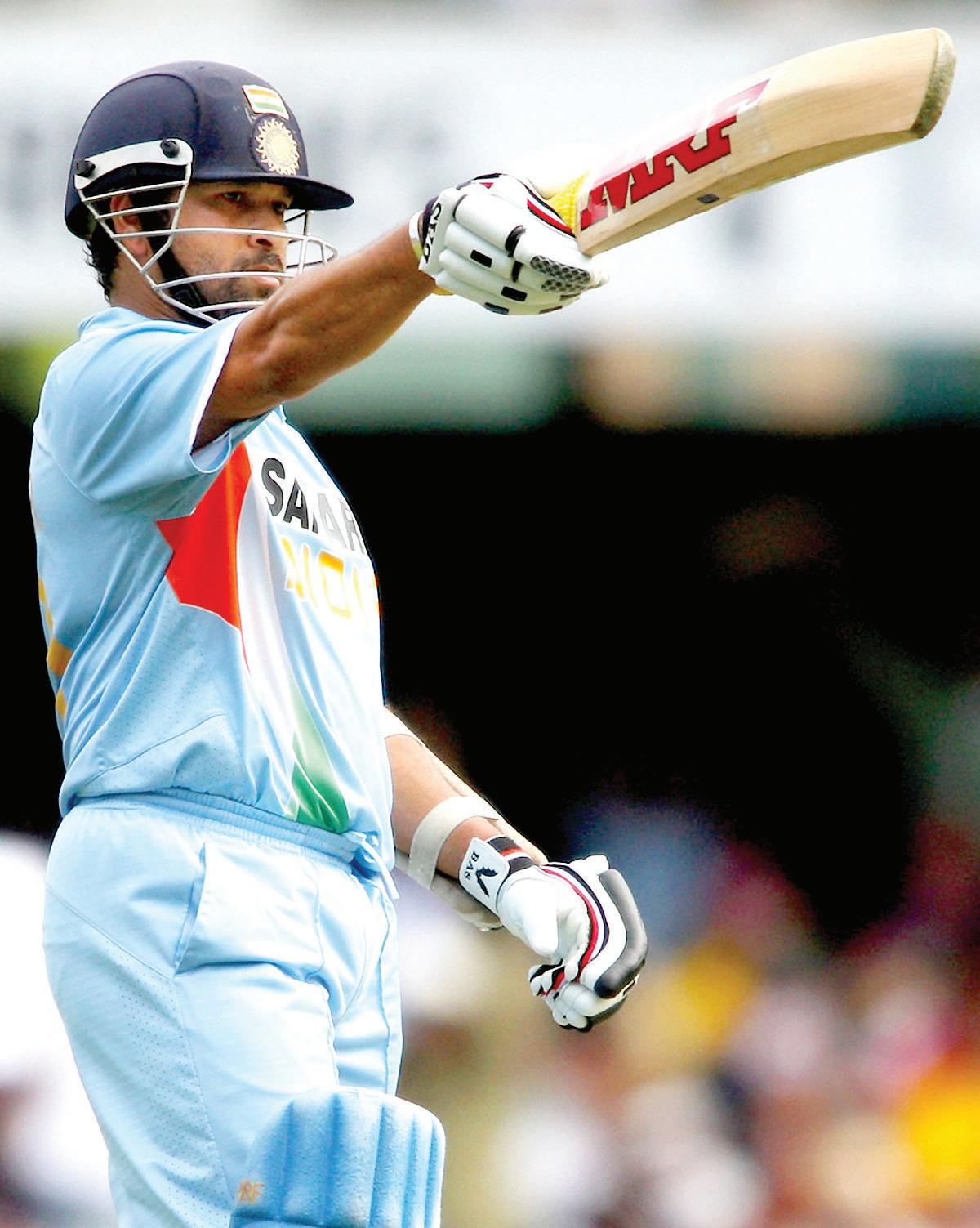
Mark Nicholas shares his experience of seeing Tendulkar in 1991/92, when he came to Australia as a 19-year-old. “When I really got the measure of him was out here, when he made a hundred in Perth against a strong Australian fast bowling attack on a great bouncy pitch. There was this little boy, against men like Merv Hughes and Mike Whitney. He was just extraordinary; I still think it’s in the top few innings I’ve ever seen, even now.”

He continues, “I always felt that the bat seemed married with his body, as if he was born with it. Even though he’s a little guy and he’s always used a big bat, it somehow seemed a part of his body, attached to him. It was almost a symphony between bat and body, I’ve always thought that he’s my favourite player, and I still receive more pleasure out of watching him than out of any batsman.”
Lawry, like Nicholas, believes Tendulkar is a “once in a lifetime” player. Though this is extremely high praise, but as Lawry recalls, the most memorable compliment was famously given to Tendulkar by an altogether different authority. “When Jesse Bradman said at the Adelaide Oval, “Donald
come and watch this man, he bats like you”, it was the best praise you could give him.”
The great West Indian fast bowler Michael Holding did not need much of a sighter to understand the talent before his eyes: “I saw Malcolm Marshall bowling to him, and I saw him play one shot, and I thought to myself, “This guy can bat.” It was a back-foot shot, and he punched it straight back down the ground to Malcolm Marshall.”
Former English batsman David Lloyd believes, like many others, that Tendulkar’s secret is both his manner and temperament. “He doesn’t get flustered, he’ll remain calm, and you can’t get under his skin. I’ve never known anybody to really get to him. He was only a boy, he played fantastically to score a hundred for Yorkshire on bowler-friendly wickets, and you could see that he was going to be about for a long, long time, but what we didn’t know is what his lifestyle was like. It’s been proved that he has a fantastic lifestyle, and it doesn’t bother me how old he is now because he could go on forever.”
So Tendulkar has now indeed seen through a few generations of bowling talent, and his dominance and consistency has been, for the most part, unwavering. It is perhaps now time for 15-year olds around the country to start practising bowling to a brick wall, because if his body allows him, Tendulkar could, in the eyes of many, be methodically taking apart bowling attacks for a while yet.
BY RITAM MITRAAs another day passes, another Tendulkar ton is notched up. But after bringing up his monumental 50th Test hundred in India’s loss at Centurion, Sachin Tendulkar would have been disappointed. For it is not for himself that he plays; Tendulkar’s interest has been and always will be, in winning matches for India. He has always said that chasing records does not bother him, and if he is batting well and winning matches for India, then the records will come by themselves. The fact that another one of his hundreds had come in a loss would have caused him as great a disappointment as the very first time he scored a century in a losing cause – in Perth, 1992. Age has certainly been no barrier to his passion for the game.
When Tendulkar burst onto the scene in 1989, a fresh-faced, curly-haired and purely innocent 15-year old, he was famously hit on the nose by a Waqar Younis bouncer. Blood gushed from the blow and yet he fearlessly chose to continue and declined medical assistance. In an exhibition match soon after, Tendulkar smashed 50 from 18 deliveries. This in itself, however, wasn’t the special statistic, and indeed this innings has mostly gone under the radar. However, what is often forgotten is that during the course of the half-century, Tendulkar blasted the great Pakistani leg-spinner Abdul Qadir for 28 runs in an over. Kris Srikkanth, current chairman of selectors and the then Indian captain, called it “one of the best innings I

Tendulkar became a household name when he toured Australia as a 19-year old. In the first two matches, he failed to make much of an impression, but by the time the Sydney test was over, Sachin Tendulkar was well on his way to becoming the worldwide phenomenon that he is today. His sublime unbeaten 148 came in quick time, against an attack boasting Bruce Reid, Craig McDermott, Merv Hughes and, although on his debut, Shane Warne.
We recently spoke to a few great cricketing personalities and asked them what they thought of the Little Master. Perhaps the most revealing aspect of his status in the game is revealed by the absolute respect and admiration with which he is spoken about.
Bill Lawry, the former Australian captain, hails Tendulkar as undoubtedly second to Bradman. Lawry rated Tendulkar’s double hundred scored alongside VVS Laxman at Sydney in 2004 as his best. “Sachin and VVS Laxman are two of the nicest batsmen to watch. He’s just a beautiful strokeplayer… last night [at Cape Town] against Steyn, who was bowling beautifully, he just toughed it out, did a great job and got another hundred. Full credit to him, I know Indians are very proud of him and so they should be, he’s an inspiration to every cricketer around the world.”
Peter Roebuck, respected author, journalist and commentator, recalls the first time he saw the Little Master bat: “Everyone had heard the name, he was a teenager, a little elf of a kid really, a little freshfaced choir boy, and everyone thought to
“I can’t remember any time that he’s looked tired, cynical, like he didn’t want to play”.
Peter Roebuck
Why Sachin Tendulkar commands the respect that he does
L ooking for a suitable match for Hindu boy, never married, handsome, 37 years, fair, 5’9”, non-smoker, non-drinker, vegetarian and working in IT in Sydney, A$100k. Seeking good-looking, nonsmoker, non-drinker, vegetarian Hindu girl, preferably settled in Australia. Send details and recent photos to alliance. matrimony73@gmail.com
F iji Indian man, 35, uni graduate ( BA), 160 cm, fair complexion, looking for an Australian lady for marriage. Please email narendraraj41@yahoo.com or call 0439 835 278.
Match for Sydney-resident never married, 28 year old, slim, handsome, fair complexioned, Sood Punjabi boy, IT professional, 5’9”. Seeking Indian girl. Caste no bar, girl’s merit main consideration. Please call 0416 407 496.
Caring, youthful looking, slim, fit Hindu widower 51, Australian citizen, in professional government job, children living separately, seeks presentable lady (38-47), vegetarian, with strong family values. Caste no bar. Call 0416 099 177, genuine enquiries please.
30-year-old Punjabi Brahmin male, 6 feet, fair, handsome, double degree holder, Reigistered Nurse, Australian citizen living in Sydney, seeks suitable match of honest girl with good family
values. Caste no bar. Please reply with photo and details amit4012@hotmail.com or call 0431647402.
Seeking an alliance for Valmiki boy, 36, 5’8”, very well educated, LLB, MIB (AUS) government employee, Australian citizen. Parents are seeking a well educated, homely girl with traditional values. Caste no bar. Respond with photo and complete bio at valmikiboy@hotmail.com or call 0431 159 221.
Match for Melbourne-resident nevermarried Arora boy, self employed, earning good money, dob 30-08-1977, 5’5”, smart features, fair colour, open minded. Caste no bar. Girl’s merit main consideration. Respond with photo, education and professional details to email: sachdevasunil30@gmail.com or call 0401 408 211.
Correspondence invited from a wellto-do established young man aged between 31 to 36, for a charming, pretty Hindu girl of 32, working in India in an MNC as HR Manager, Bangalore India. Please contact with profile and recent photograph at 0423 749 793 or email sujayinmel@gmail.com, sanchi26@ gmail.com, or rjp5306@gmail.com
Seeking match for Maharashtrian girl 37, Homeopathic doctor BHMS, married briefly and divorced with no children, 5’2”, good looking girl, born and raised in India
with Indian values, from a very well-settled family in India. Ready to settle in Australia. Seeking professional, well-educated Hindu match with good family background, caste no bar. Contact 0409 005 320, or email: mrudula_msn@hotmail.com
Seeking a suitable match for Hindu lady, 53, 5’2”, young looking, very fair, living in Australia for 25 years, works in govt dept. Groom must be between 47-55, well qualified, non-smoker, occasional drinker and vegetarian. Contact sydaus@hotmail. com.au.
Dr. G. L Gupta settled in Australia since 1970 seeks match for granddaughter Meenakshi Gupta DOB 7th Nov 1986, 5’4”, fair with sharp features, from Hyderabad, India. Graduate in Commerce, PG Diploma in Banking and Finance from IFBI and worked in ICICI Bank. Coming to Sydney. Seeking Hindu (pref. Agarwal) professional match. Contact 0401 448 186 / 0404 833 750. E mail giri32@yahoo.com.au
34 year old girl, 5’7”, post graduate diploma in advertising, holding PR visa, seeks well-educated boy of wellsettled and educated family, with liberal and supportive values. She is sensitive and considerate to elders, warm and nurturing to all. She loves to socialize, going out for movies. Has a drive and wishes to be working professionally, with healthy balance between family and work. Please email profile and photo to smk3005@ hotmail.com
Wanted well-qualified, handsome, fair Punjabi Hindu boy, well-settled in Sydney, PR holder/Australian citizen, for a Punjabi Hindu girl, extremely beautiful, slim, very fair, 32 years, 5’3”, MBA (Australia), Australian citizen and a professional belonging to a high status, very well qualified business class family. The girl is an innocent divorcee with a brief marriage. She is a very loving, homely, caring, intelligent and bubbly with a perfect blend of traditional and modern values. She is born and brought up in India. We are God fearing, very well-respected, down to earth and sober family with a positive outlook towards life. Similar profiles preferred. Please send full profile with latest photos to email to.sweet@hotmail.com

Alliance invited for a good looking Tamil Christian girl (CSI Protestant), 28 years, 5’7”, engineering professional working for a European company at Chennai (currently in Holland). Seeks Christian professional of good family background. Contact details 0458 788 869 or email fredrick.samuel@gmail.com
Wellestablished Indian Hindu family from Fiji living permanently in Melbourne seek a professionally qualified boy with good career background for their daughter, 28+. Five feet tall, medium complexion, slim, attractive, Australian born, University graduate. Please send in absolute confidence your biodata, telephone number, recent photograph and email address to The Advertiser, PO Box 339, Naree Warren South, 3805.
For all the news from Australia’s Indian community Indian Link Group




One paper - five editions

SYDNEY/CANBERRAMELBOURNE ADELAIDEPERTHBRISBANE/GOLDCOAST
Plus 24-hour radio (Sydney and Melbourne)


“Now,” said the priest, looking around at the parishioners attending the wedding of John and Susan. “If anyone here knows a reasonable cause why this man and this woman should not be united in holy matrimony, speak now or hold your peace forever.”
“I know a reasonable cause, Padre,” said a clear and determined voice from the benches at the far end of the church. The priest looked over at a woman who was standing up with a hand raised. After a moment’s silence, a furore erupted as everyone in attendance turned to the accuser.
“Last year, the groom who is also your son, Padre, made my teenage daughter pregnant, as you well know,” she protested. “You also know that when we asked him to do the honourable thing and marry her, your family quietly left town with him.”
Photographs published presented Mrs. Dundlow making her accusation, the priest humiliated, and the aggrieved bride in emotional tatters.
“John! Do you know that woman?” asked Susan, bewildered and in tears. Her mind was a blur, and she could see her world shattered, her reputation a heap of trash.
“Is it true that you abused her daughter and then ran away like a coward, rather than do the right thing?” cried Susan, accusingly.
Everyone watched as the priest walked all the way to the woman. “Please, Mrs. Dundlow,” they heard him plead, “this accusation will ruin John’s life and my reputation…”

“What a hypocrite you are, Padre!” said the woman scornfully. “How sinful is your concern in your son’s future and your own reputation, that the future and reputation of an abused teenager girl means nothing to you!” The whole congregation was aghast as Mrs. Dundlow said with firm clarity, “No! I will not shirk from presenting the truth.”
* * *
The ceremony was evidently ruined and the church emptied in a matter of minutes. Tabloids published special editions of the debacle, using appropriate and yet cruel, words. Photographs published presented Mrs. Dundlow making her accusation, the priest humiliated, and the aggrieved bride in emotional tatters.

* * *

A year later, now living in another town, John answered a knock on his door. “Hello,
John!” said Susan, a smile of remorse hovering over her face. Surprised, John invited her in. She didn’t sit down but said abruptly, “Last week your father was placed in a mental asylum.” John said nothing but sat down abruptly, burying his head in his palms. “But before that,” Susan continued, “he asked me to come over and told me
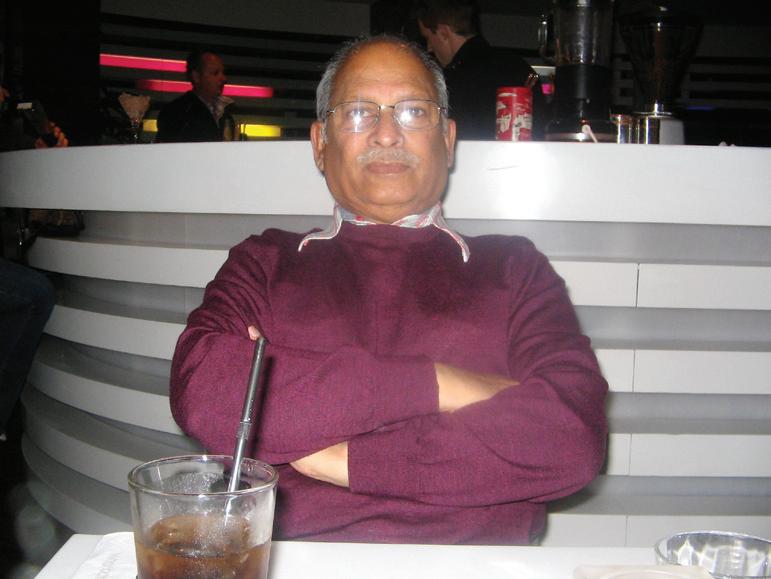
the whole truth about Mrs. Dundlow’s daughter.”
“I knew all along that you were a good man, John,” she continued, “what I now know is that you are also a good son who quietly accepted to lose everything to protect his father’s reputation!”
It was the ultimate sacrifice of a life of happiness, which underlined a rare and loyal familial devotion
Professor Jayashri Kulkani (Indian Link, October 10) is testing correlation of mental states to brain waves, which vary between people, over time or in acute situations. But key flaws in defining ‘mental illness’ affect relevance.
Mental illnesses are not real disease. To diagnose, symptoms are subjectively rated. Firstly, they are voted in at psychiatric conferences. Homosexuality is no longer listed. Premenstrual tension is. Items have tripled in recent decades. We expect far more, e.g. “shopping addiction”.
Studies over decades find untreated physical illness causes symptoms in half of all mental patients, e.g. schizophrenia or ADHD. Advocacy group, Insane Australia, noting recent data, says 90 percent! Draft national guidelines on ADHD note these risk factors: prenatal exposure to liquor or nicotine, bad childhood, head or brain injury; obesity, low birth weight, thyroid deficiency and antenatal exposure to toxins e.g., lead, mercury, manganese, PCB compounds in brake liners, electrical insulation or paints. “ADHD” cases have far higher rates of sleep disorders, kidney problems, epilepsy, hyperglycaemia, endocrine imbalances or chronic illness and prior substance abuse.
California revised mental health laws to ensure detailed physical examinations, greatly boosting outcomes yet reducing net health costs. We lag far behind. And children are up to 10 times often diagnosed as ADHD in Sydney’s battler suburbs than rich. Mental health labels permit drugs with grim effects e.g. addiction and ironically, psychosis. Shock (electrical assault causing closed head or brain injury and memory loss) may be given if drugs fail or worsen outcomes (it has doubled in a decade).
Ninety percent of official schizophrenics smoke. Smoking, street drugs or heavy liquor can deplete Vitamin B, affecting mental state. Bi-polar disorder is often linked to bad diet, late nights, excess coffee or street stimulants. Restoring copper and other minerals often works better than psychiatric drugs. They also deplete nutrients, including Vitamin B! More men and women can expect osteoporosis or neurological damage, given record use of psychiatric and street drugs.
Sydney psychiatrist Tanveer Ahmed notes a “post religious society that no longer delivers ancient certainties”. Indian youngsters ignorantly try tobacco, liquor or even street drugs.
US psychiatrist Loren Mosher, historically treated schizophrenia nutritionally and got better long term results regarding symptoms, social stability and employment than by heavy drugs. Canadian Abraham Hoffer and other psychiatrists affirmed nutritional remedies and chemical detoxifications, called Orthomolecular or Green Mental Health. But Big Pharma sponsors key public advisers and blocks parity of “standard” and natural medicine.
Big Pharma’s focus recognizes less human dignity and potential than other practices, including Vedic or Yogic. The Indian diaspora must evaluate mental health awareness campaigns carefully.
4. The fee for surrender of Indian passport can be paid in Indian Rupees by those applicants who are in India. Hope this clarifies the points raised by you.
Regards,
R.K. Kapoor
Second Secretary (C)
High Commission of India
Canberra
At the time the notification was issued by the Ministry of External Affairs of India (MEA), which provided for a levy of a fee of Rs.7000/- for registration of a declaration of renunciation of Indian citizenship by a PIO, the exchange rate was approx. 1A$ = 40 INR and today it is approx. 1A$ = 43INR. Hence the reply from the High Commission is confusing and not clear on the basis applied for the conversion. In any case the fee even @ A$175 (based on the exchange rate at the time of the notification) is still exorbitant compared with the fee of A$25 for those who obtained foreign citizenship on or before 31 May 2010.
The Government of India is not justified in forcing honest PIOs to pay through their nose for blunders by the Immigration and few dishonest PIOs, which I understand is the reason for what happened in Mumbai and this notification.
May I request PIOs in Australia to voice out strongly against these unfair and draconian fees levied by the Government of India.
I refer to Dr. Satya Barik’s letter “Why should Australian Indians pay more” in your Dec-2 issue. I would like to inform Dr Barik and other readers of the reply I received from the High Commission of India in Australia to similar concerns I raised with them. I am sure many Persons of Indian Origin (PIO) like me are affected by these ridiculous and unfair charges levied by the Government of India for surrendering our Indian passports.
Following is the reply I received from the High Commissioner’s office after much follow-up by emails and telephone calls:
Dear Shri Satish Yadav,
This refers to your mail seeking clarifications on OCI and surrender of Indian Passport. The reply to the points raised by you is as under:
1. Anyone who has acquired foreign citizenship after 31.05.2010 and has not officially cancelled his Indian passport has to renounce his/her Indian citizenship and surrender Indian passport and the fee for that is A $ 273 per passport and is payable in your case also.
2. The fee payable is decided by the Government of India at its headquarters in Delhi and also the exchange rate for its conversion to various local currencies worldwide is decided at Delhi. The High Commission and the Consulates in Australia simply follow the instructions received from Delhi in this regard.
3. The fee payable has to be deposited in full in one go and there is no provision to enter into a payment arrangement for the fee.
Satish Yadav Holsworthy NSW
For your information, prompted by your recent article (3-day turn-around for visa processing, Indian Link Dec-1 2010), I sent my Visa application by Registered Mail on 22/12 late in the afternoon. I received it back by Registered Mail on 29/12. This was the first day after Christmas that mail was delivered. Checking my tourist visa, it was date stamped 24/12, so the turnaround was one or two working days. Earlier this year, it took like what seemed forever, 14 working days, and I delivered and picked up in person. Something seems to be working very well.
I’m also thinking that the detailed information I provided this time may have made it more straightforward to process. I had copies of my flights to and from India, where I would be each day, including the street address, phone and email for each hotel and mode of transport to get there, ie car, boat, flight details, train etc, and the names and contact details for two people known to me both in Australia and India. Even if it didn’t impact on the much greater efficiency of visa processing, it is still useful to leave behind so my family can track where I’ll be.
Petra O’Neill Paddington NSWThe past is ever present in this 1000-year-old Vietnamese city
BY THOMAS E KING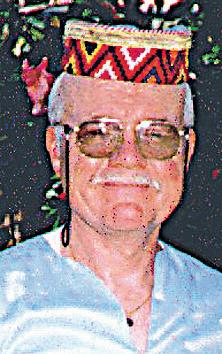
Hanoi may never win first prize as the cleanest, greenest city in Asia but the capital of Vietnam is quietly moving forward in an environmentally friendly way. While it’s true that petrol fumes have yet to vanish from city streets, the progressive Hoan Kiem People’s Committee has made a positive start to achieving this goal by introducing emission-free batter powered cars in a small section of the big city.
Throughout the day open-sided electric vehicles somewhat resembling overgrown golf carts can be seen winding their way through the congested streets and confined lanes in the city’s traditional commercial area, the Ancient Quarter. I boarded one three-people mover late last year for a narrated tour of a very unusual place that boasts of more than a thousand years of history.
Often called the Old Quarter, this well-defined zone just north of Hoan Kiem Lake is home to more than 500,000 residents. Many have lived here generation after generation, I learned, as the silent electric car slowly passed by the throngs. It was anything but quiet beyond my comfortable vantage point as tourists were snapping up tee shirts and CDs and even more Hanoians were bargaining for their daily needs.
Traditional Hanoians still speak of the Old Quarter as the “36 Streets”, a reference to the 13th century when 36 guilds were set up in the capital to supply goods to the royal court. (Three centuries earlier, Emperor Ly Thai To moved his capital to this strategic place on the Red River naming the site Thang Long, which means City of the Soaring Dragon.)
Artisans from villages throughout the Red River Delta who specialised in a specific trade came to Hanoi and established trade guilds on different streets. Eight centuries later their descendants – for the most part – are still on the same streets making and selling the same items. Each street in this fascinating old area is named Hang which means merchandise in Vietnamese. Hang is then usually followed by the name of the product that has been sold on a particular street for centuries.
As the electric car carves its way through the Old City it travels down or across many of these streets dealing in speciality goods. On Hang Vai, for instance, the speciality is metal ware and Chinese traditional medicine. Hang Gai, on the other hand, is popular for its silk, embroidery, lacquer ware paintings and water puppets while visitors clock to Hang Bac for its silver jewellery. If you are looking for beans, Hang Dau is the place to go and for pickled fish you can’t pass up Hang Mam!
“Xin Chao”. A hearty hello from a group of uniformed school children turned my concentration from the mundane to the modern. The school day was drawing to a close and neatly dressed children were now on their way to
homes in the Old Quarter. A few of them carried mobile phones while others were listening to MP3 players.
Some things have changed in this part of town. For example, turbaned Indians who used to sell Bombay silk on Hang Dao and Hang Ngang streets are gone. (By day, these two thoroughfares are havens for those seeking readymade clothes and watches. At 7 PM traders erect portable stalls and attract crowds coming for the night market, a fun event which lasts until midnight.)
There are more changes. The street fronts facing Hang Dao and Hang Ngang are now flashy with neon signs and other trappings of today. Step off these main streets as I later did and you’ll also discover a different world where the lanes are so narrow that only twilight illuminates the scene for much of the day.
Many houses found in the back lanes are low rise and narrow but long. The reason for this, I was told, was that tax was based on the width of a house’s street frontage. Large, extended families continue to live in these tiny spaces that in many instances may not be equipped with all modern conveniences. I walked along several dimly lit lanes where the past is ever present and emerged into a sunny setting where I had earlier started the electric car tour, Hoan Kiem Lake.
Legend-laden Hoan Kiem or Lake of the Restored Sword is idyllically situated in the heartlands of 6.5 millionstrong central Hanoi, the nation’s second largest city. Neither Hanoi’s deepest nor largest body of water, this sparkling jewel ringed by trees is considered the spiritual
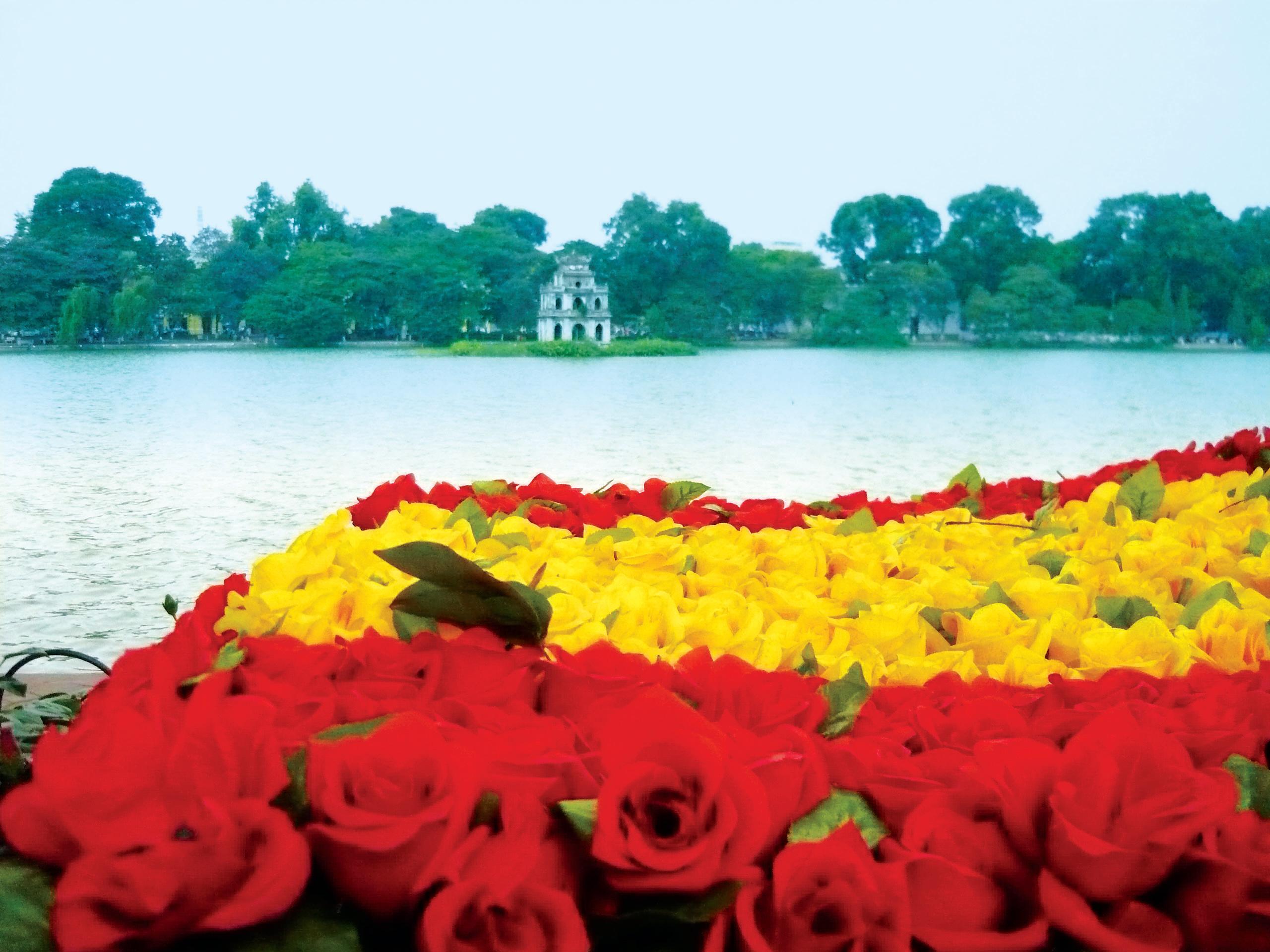
1. Tree-lined Hoan Kiem Lake is a pleasant place to relax in the heart of the city.

2. Attend a water puppet show and then pick up a souvenir of this unusual art

3. Electric vehicles shuttle visitors around crowded Old Quarter streets.

4. Enjoy the bargains and the ambience of the Dong Xuan Night Market.

5. Many visitors start their tour of the capital at the Ho Chi Minh Mausoleum.

heart of the capital and a symbol of the 1000-year-old city.
According to legend, the King of the Sea loaned a sword to the Vietnamese Emperor Le Loi who used the weapon to defeat Chinese invaders in the 15th century. The emperor came to the lake and while speaking with a tortoise genie the sword magically came out of its scabbard and flew to the mythical creature. Holding the precious sword in its mouth the tortoise disappeared into the lake’s murky depths.
Traditional Hanoians still speak of the Old Quarter as the “36 Streets”, a reference to the 13th century when 36 guilds were set up in the capital to supply goods to the royal court.
Some say there are still giant tortoises living in the lake. I didn’t see any while slowly walking about the lovely lake one autumn afternoon. This is far too late for many locals. They arrive by 5 AM in summer for Tai chi. You can join the brigades of early morning exercise enthusiasts who stretch to greet the new day or jog around the lake huffing and puffing while completing a circuit.
Limber up with the locals if you like or just sit at
the Thuytahn Café as I did and savour the view over the legend-laced lake while sipping Vietnam’s best coffee. After a final cup head off to another part of Hanoi where the mood is sombre surrounding Ho Chi Minh’s Mausoleum. (The revolutionary leader, guerrilla fighter and patriot, who led the resistance movement against the French in the 1940s and 1950s, died in 1969.)
Stern faced guards here ensure that visitors don’t talk or take photos as they silently file past the former head of state who has rested in a glass climate controlled sarcophagus since 1975. Dressed in a simple grey shirt and pants, Uncle Ho, as he’s affectionately still called, looks like he has just gone to sleep.
The mausoleum built of dark violet stone is the focal point of a large pedestrian friendly area dotted with parks, monuments, memorials and pagodas. A stroll through well kept gardens takes you to Ho Chi Minh’s House, an unpretentious double-storey wooden building built on stilts where the revered leader intermittently lived from 1958 to 1969.
The lower level is an open-air conference room. Upstairs is his bedroom and study where the father of the nation spent much of his time. When he sought a brief respite from his duties he would wander to a little pond near his residence. Ho would clap his hands and golden koi (carp) would come to the surface in anticipation of a meal.
Vietnam Airlines has five Boeing 777 flights a week from Sydney and five weekly services from Melbourne to Hanoi via Ho Chi Minh City. Or stopover in HCMC for a day or two and then continue on to the national capital using one of a dozen daily flights.
Vietnam can also be a stopover en route to Europe as the country’s national carrier has onward direct flights to Paris, Moscow and Frankfurt. For details of flights and fares see your travel agent or contact Vietnam Airlines offices in Sydney (02) 9283 1355, Melbourne (03) 9606 0658 or toll free 1 300 888 028. See www.vietnamairlines.com
A fixed priced airport/hotel taxi service is recommended to avoid overcharging by some operators. A frequent shuttle bus service is another option. A reputable transport company in the city is Ha Noi Taxi.
ACCOMMODATION
Sited at the edge of the Old Quarter, the year-old 106 room Silk Path Hotel features in-room 32 in LCD TVs and Wi-fi Internet. Stylishly accented with Australian stone and Vietnamese art, the chic hotel is walking distance to its namesake silk street and the lake. Tel. (84- 4) 3266 5555. See www.silkpathhotel.com
DINING
Located near Hoan Kiem Lake at 1C Tong Dan Street, the Khazaana Indian Restaurant serves delicacies from both north and south.
INFORMATION
Vietnam does not have a tourist office in Australia and only limited tourist information is available from the Consulate-General in Sydney and the Embassy of Vietnam in Canberra where your tourist visa is issued. See www.vnconsulate.org.au
Lonely Planet’s useful guide, Vietnam has devoted more than 50 pages to Hanoi. See www.vietnamtourism.com
ABHILASHA SENGUPTA brings us up-to-date on what’s hot and happening in Bollywood
Celina Jaitley is ready to take the plunge with her Dubai-based hotelier beau Peter Haag.

And where else would the wedding be but in Egypt, for which Celina is a tourism ambassador?
But she is in no hurry.
“I want to give it a year,” says the former Miss India. “Right now, I’ve got to finish my work commitments – movies as well as endorsements”.
She adds, “Peter is not comfortable with the media glare”.
Well, he’ll just have to get used to it, won’t he?
Celina and Peter Haag, who is Austrian by nationality, exchanged rings at a very private ceremony last year.
“Yes, Peter and I got engaged during Durga Puja, with only my family present. It was an auspicious time and we had my parents’ blessings”.
The wedding is being planned towards the end of the year.
They called her the ‘new generation’s Preity Zinta’. But has she lived up to the mark?

(Find the answer under Caption Contest)
So we’ve had a few sporty movies recently, in which the thematic backdrop has been cricket, hockey, football, even car-racing. But swimming? Well, watch out for Asahiqui.in, a typical rom com where new actor Ishaan Manhaas tries out the chocolate-hero look. Except he plays the college swimming champ…. Apparently Ishaan is a real-life swimming champ, having won medals galore as a student at Delhi University.
Of course this year we’re going to see the trend of our real sport stars moving onto the silver screen. Tennis ace Leander Paes has announced he has signed no less than four Hindi films, starting off with Rajdhani Express
opposite Amisha Patel. Currently, he’s brushing up those acting skills at Anupam Kher’s acting institute.
But first, Ishann Manhaas’s Aashiqui.in, which releases this month.
He may be better known as Chatur from the blockbuster 3 Idiots but Indian American Omi Vaidya, who steered away from being typecast, is ready to move on with a more “challenging” role in the forthcoming comedy Dil Toh Baccha Hai Ji
“After 3 Idiots, I wanted to be very careful. I was getting offers, but most of them were
roles that were very similar to Chatur. I didn’t want do those. I wanted to take up something new,” Omi says.

“Then Madhur Bhandarkar offered me this role, which was quite different. Initially I was scared because my Hindi is still not very good, but he assured me that I would be able to do it. This role was more difficult to do because I had to play a Maharashtrian, who has no accent... so that was quite challenging. But it was fun”.
The film releases Jan 28.
The 28-year-old did a television stint as the host of STAR Plus’ singing reality show Chhote Ustad after his big success on the silver screen.
Omi, who grew up in California, started acting when he was six. He has to his credit American shows like Arrested Development, E-mail Surveillance and Fun Run.

His big ticket to Bollywood came with director Rajkumar Hirani’s super hit movie Idiots
Dil Toh Baccha Hai Ji, Omi’s second release and Bhandarkar’s first comedy, also stars Ajay Devgn, Emraan Hashmi, Shruti Haasan, Shraddha Das and Shahzan Padamsee. The film is about three guys and their encounters with love.
The actor will also be seen feature in Reema Kagti’s next directorial venture that has Aamir Khan in the lead role. He is also a part of the Abbas-Mustan multi-starrer Players and Rohit Dhawan’s Desi Boyz
the face of L’Oreal Paris,” said an official statement from the
that this is absolutely untrue and that Ms. Aishwarya Rai Bachchan continues to be our valued spokesperson, as she has since 2000. While she remains an L’Oreal Paris world wide Dream Team, she was unfortunately unavailable commercial shoot due to prior commitments. She is one of the most iconic women of our times and is certainly the face of L’Oreal Paris internationally and in India for a range of products which include campaigns for Total Repair 5, Excellence Crème, Color Riche, Hydrafresh,” the statement added.


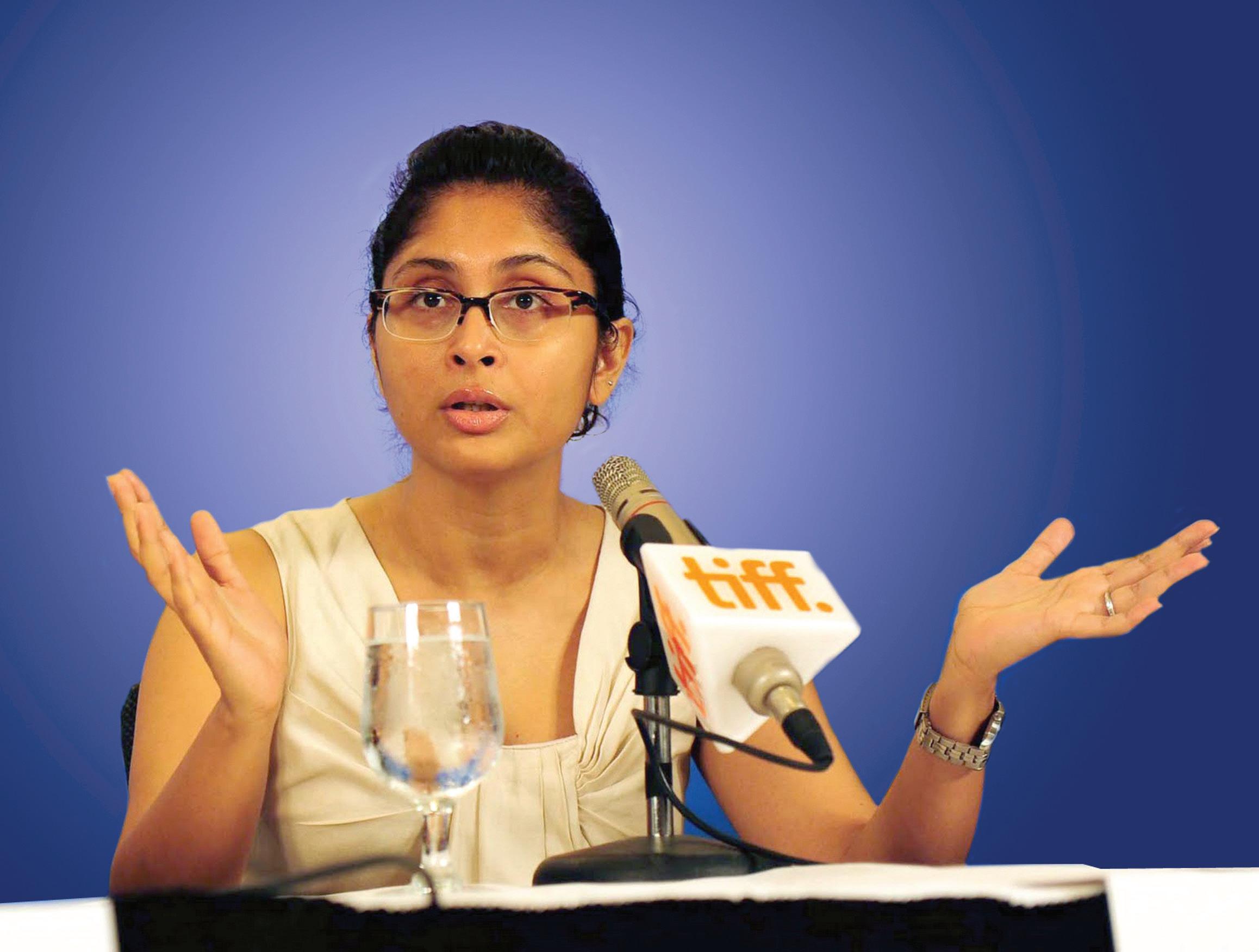
Kolkata girl Kiran Rao, who moved to Mumbai after finishing her masters in mass communication from Delhi’s Jamia and found both love and a career, says her directorial debut Dhobi Ghat is her personal tribute to the city of dreams.
Abhishek?
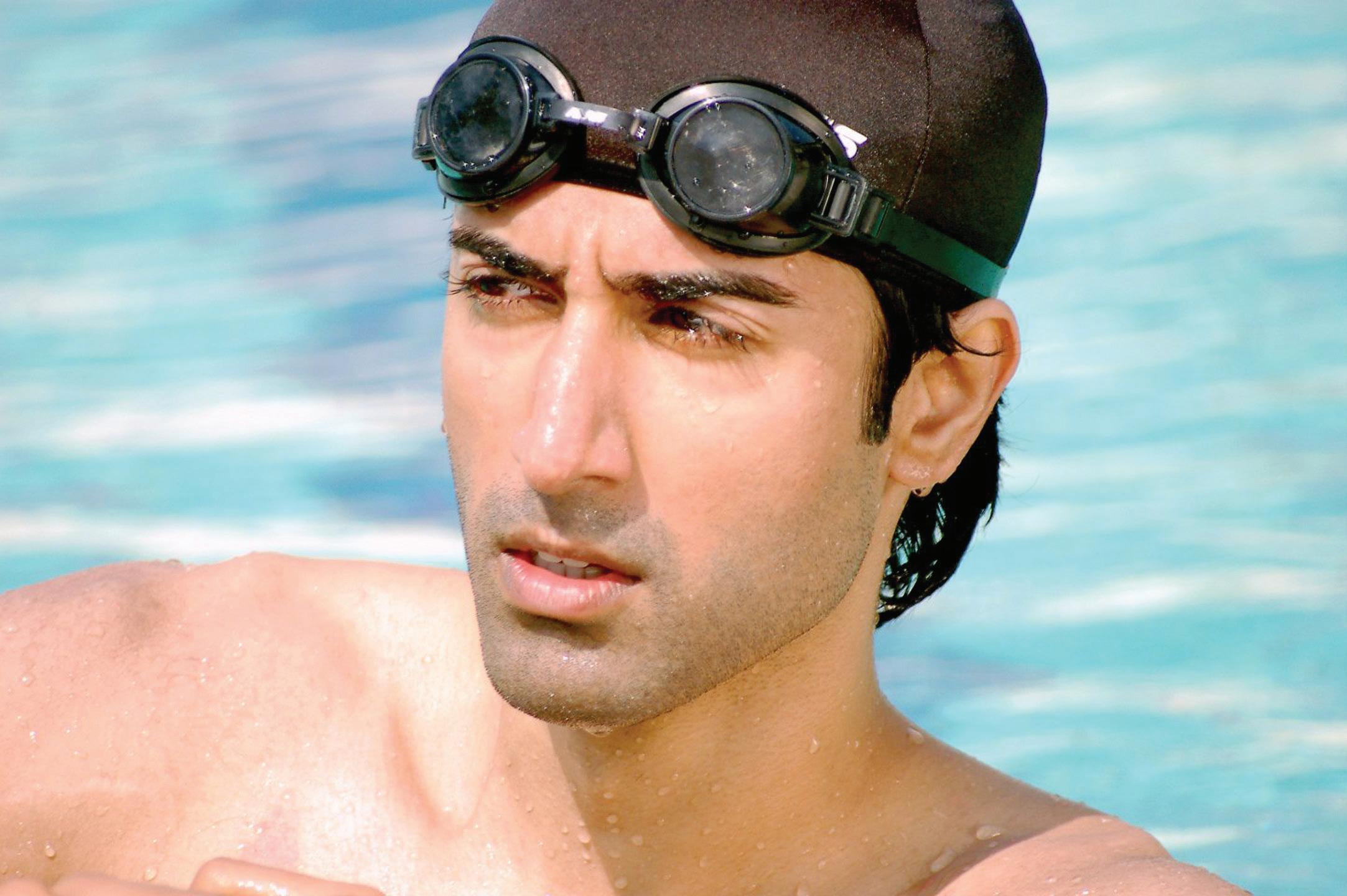
“You’ll just have to face the truth, Abhi, you’re a hopeless actor.”
Ramesh Bhargava, Strathfield North NSW
Ramesh wins a free ticket to new release No one Killed Jessica Some other good ones:
Ash: “If we have more holidays you can talk out loud rather than whispering in front of the press”. Parul Aggarwal
Ash: Bina kaam ke, rozi-roti kaise chalegi?
Abhishek: Pa hain na kamane ko… Geetika Jain
On April 29, 1999 a shot was fired from a .22 bore pistol whose loud reverberations lasted over a decade. The shot that killed a vivacious, aspiring model Jessica Lall was fired in the presence of more than 100 ‘socialites’ present at a party in New Delhi. Yet, accused Manu Sharma walked free in 2006 prompting a newspaper headline that read “No One Killed Jessica”.
In the ensuing decade, Venod Sharma, father of the accused and a high profile Congress leader, paid millions of rupees to silence witnesses. It was not until the Tehelka Magazine did a sting investigation and Star News aired the footage that justice was finally served.
No One Killed Jessica faithfully follows the case to emerge a winner.
Almost everyone knows the story. Yet, the film makes some interesting departures to keep the momentum going. A Barkha Dutt type character has been introduced in Rani Mukerji though the former did not have much to do with the case or its reinstatement. However, Rani lacks the intensity to pull off such a strong role and the strain shows.

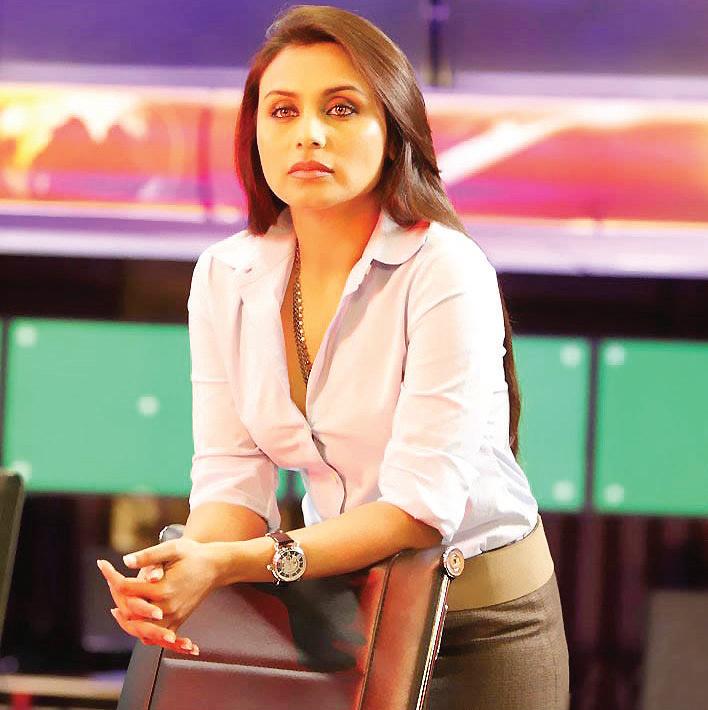
acquittal of Manu Sharma, but the question as always is, who would bell the cat if the police and judiciary do not?
In this case Tehelka, who did the sting investigation and Star News (and not NDTV that walks away with the praises in the film) that aired the footage did manage to right a wrong. But the question is not just of Jessica Lall, but the thousands like her whose cases have not had the light of justice shine upon them.
The Jessica Lall murder thus became an emblem of the rot in the democracy, police and judiciary.
The truth is, the culprits were not just Manu Sharma, his friends and his family, but Shayan Munshi who redacted his statements leading to Manu’s acquittal and Bina Ramani, both of whom continue to have successful careers, one as an actormodel and the latter as a heedless socialite. The culprit is all of us who stay silent to the injustice all around us.

The injustice done in Jessica’s case has been corrected, but the question remains of the millions of other cases of injustice in the country.
Gupta’s film on a true incident bodes well for Bollywood, which is normally not too keen on reality, and the concept of justice itself. Yet, the question is not who killed Jessica Lall, but as the gross miscarriage of injustice in Kashmir, central and northeast India and the thousands of pending cases in the country show, it is: who killed justice in India?

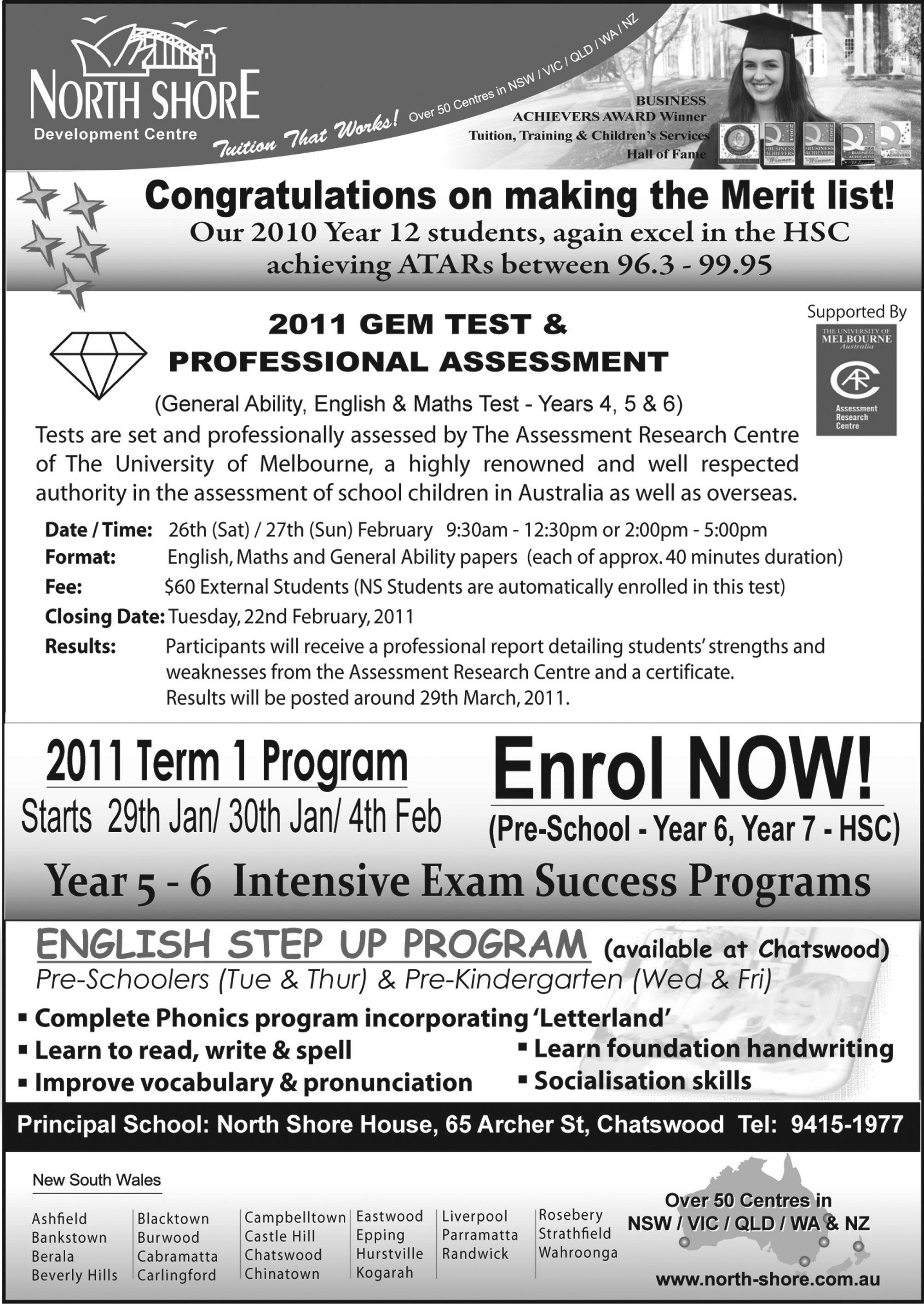


It may seem like a simple thing, but the concept of gift-giving has moved from the sensible or sublime to the extravagant and downright mercenary
BY MALLI IYERAn invitation to attend a premier wedding reception at Hyatt Regency ought to gladden the hearts of the invited, as this is the one occasion at which you could show off the latest blue and orange Kanjeevaram silk addition to the wardrobe, not to mention the glittering Paspaley pearl necklace that is much-anticipated by your mildly envious friends. There are other bonuses – for example, here is the chance to arrive at the reception in your latest BMW and put one up over the coquettish Mrs. Nagrath who struts in proud as a peacock when her chauffeur opens the door of her convertible Ford Mustang. This would be the right time to dab an extra dose of Chanel No 5 behind your ears. Surely, the lady boss of your husband will be impressed. But as you start to get to the nitty-gritty, the realization that your hosts have referred you to the Bridal Registry at David Jones in the city for a choice of gifts certainly dampens the spirit. This is the beginning of what will become an exercise in futility – all the gifts within your budget have already been taken and the only ones available are way over the top. If you have to choose between a set of Bohemian crystal champagne flutes or a Louis Vuitton luggage set, you can be sure that your kanjoos husband will experience electrifying shivers down his spine. He would have loved to get rid of the Kenwood Breadmaker that has been lying idle since you received it as your housewarming present 5 years ago, when you moved into your architect-designed Masterton home.
If this is a familiar scenario, don’t curse your luck as there are many in the social circuit of invitees who, like you, have clutched their hair in despair on receiving the invitation. In point of fact, the dilemma of giftgiving is faced by one and all, regardless of which social strata you belong. Indian culture and tradition has this well-entrenched practice of gift giving on each occasion – even for a wedding engagement, a golden wedding anniversary, Valentines’ day, a 60 th birthday, a retirement gift or the move to a new home. And the confusion that reigns is just the same, no matter what the occasion.
And with the best of intentions, you wonder how to convey the genuineness and loving thoughts that are send to the recipient with the gift of your choice. You
take extra care with the gift wrapping and search for choice adjectives to praise the recipient, making it look as personal as possible.

Of course, there is every chance that each of the gifts received will be acknowledged through a stereotyped printed and impersonal ‘thank you’ card or note by the
boxed gifts are not on, should one opt for a gift cheque, a gift card (if so, which one) or should one stuff a few $20 bills in a colourful envelope? You can take pot luck with a gift card, a gift note, your business card or letter paper as there is no laid down etiquette for some of these innovation-seeking specific gifts.
You may have just sent donations to the Children’s Cancer Hospital, UNICEF or World Vision, so it is highly inconvenient to go searching for another charity. Of course, you are sure to be added to the mailing list of another dozen charities once you have put in a donation. This is the way the information age works.
Why can’t the footnotes in an invitation say: “Flowers, chocolates and sweets only”. It would make life so much simpler and easier for the gift-giver, and could be somewhat similar to festivals like Deepavali. Indian traditions have come a long way in gift giving – what used to be a platter of fruits, flowers and betel nuts/leaves (which are hard to obtain except when Fiji supplies arrive) have now graduated to silver or golden lamps, intricate replicas of Lakshmi, Ganesha and other Gods for a housewarming pooja, or a ‘havan’ to purify the home. Giving best-selling books, CDs, DVDs as gifts is always tricky, unless the gift recipient is a ‘bosom buddy’. The evolution of electronic music happens day in and out, and you always run the risk of duplicating the possessions of the recipient.
Some hosts have chosen newer ways to cause problems for their invitees – they add a footnote to the invitation card such as: ‘No boxed gifts please’ or ‘Gift - charity donations to Care Australia only’. Once in a blue moon an invitation will humbly suggest, ‘No gifts please’; but they probably already know that gifts will definitely be received and I have yet to see any returned or turned away by these hosts.

In many ways this compounds the problem – if
This seems like a unique dilemma for the Indian diaspora. I do not know many other communities where the guest list rarely exceeds 50 or more, and they seem not to mind receiving duplicate gifts of ‘sandwich makers’, ‘barbeque grills’ and ‘toasters’. At least it is abundantly clear to the recipient that it is not the thought that counts when giving gifts, but the completion of a formality. The same goes for carrying a bottle of wine to small evening functions and gettogethers among friends. It leaves very little room for ‘bitching’ about pedestrian gifts from some of the invitees well-known to some Indian families. But in reality, nobody gives a toss anymore about the old cliché ‘It’s the thought that counts!’

At least it is abundantly clear to the recipient that it is not the thought that counts when giving gifts, but the completion of a formality.
ARIES March 21 - April 19



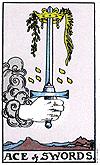


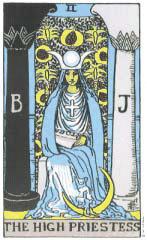





LIBRA September 23 - October 22
This month you are ready to make a fresh start. Your ambitions are high and you are keen to get going with work. There will be good news relating to contracts and contacts. Make the most of the opportunities presented to you. Still, try not to feel overconfident. Also, be careful when work and play are in excess as you may find your health is compromised. There could be worries about the health of a family member.
TAURUS April 20 - May 20
Your focus this month will be on reaping benefits that you felt you missed out on last year. You may look for other ways of bringing in finances. You will be able to turn anything into gold, so do your best with every opportunity that comes by. The cards are showing that a new direction could catch your eye and that you will be willing to take risks. Go for it this month: do not hesitate to do things you were previously unsure about.
GEMINI May 21 - June 20
This month the cards are indicating a lot of energy in both your love life and professional life. You might have a tendency to feel pressure over finances but there will be no need to panic as you will sort things out. This month is going to be a very significant one for a particular decision which is long overdue. Once you make this decision there should be no turning back. Give yourself a goal and work towards achieving it.
You are going to feel as though your whole system has been given a spring clean this month. You will feel clearer and more focused about what you want out of life. You will also be looking at those who are around you and making new contacts. There could be some influence around you from events that took place late last year. There are new beginnings too, and an indication of a new job and/or more money. Take extra care while driving.
The start of the year may be frustrating for you due to unexpected arguments with colleagues or family. This is a time when you will be considering which of two paths to follow. Take your time as your hard work will pay off even if it is mental planning. Young children may be difficult around mid January. If you are in a relationship you will not appreciate boundaries imposed on you by your partner. Make time to discuss matters.
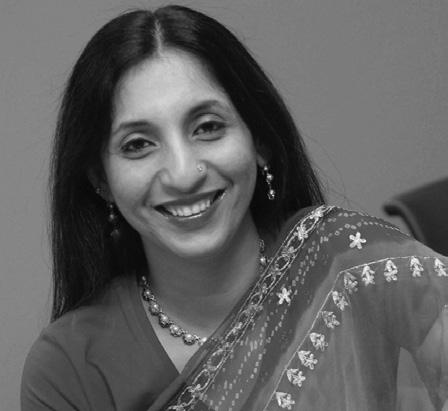

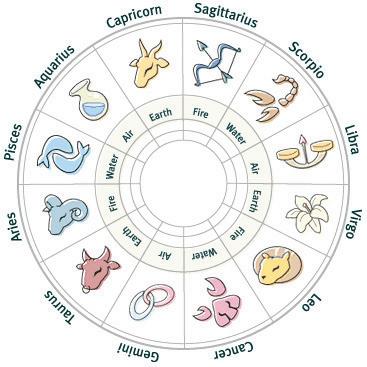
For you, the year has definitely begun with a bang. There is an emphasis around creativity and self expression. There are strong indications that you can profit from a business that you decide to start from home. There is also a need to forget the past and start this year with a clean slate. There are issues around your past that still upset you, but you have gone through your lessons and have learnt well. You may think of home improvements or redecorating the house.
You have started the year with a lot of organising to be done: you have been preparing yourself for a complete overhaul in certain areas of your life. You may be asked to give advice and act as a support system to someone around you. You may still be exhausted from last year but you will start feeling a lot better as the cards indicate a fresh new approach. You will start taking time out to relax which you do not often do.
SCORPIO October 23 - November 21
The new year is going to be fantastic for you. You will leave the events of 2010 truly behind and move forward with confidence, love and joy. The focus this month is communication. Your work will be busy and there will be new challenges to meet which will keep your mind occupied, which is what you need. The cards indicate that you may have been obsessed with a certain idea last year but now you can create new thoughts and affirmations for yourself.
SAGITTARIUS November 22 - December 21
2011 has started with a lot of energetic influences around your finances which means that you will feel happier in that department than you have for a while now. The universe is offering you a new source of income. It is a time for you to start being more positive and accepting as it is indicated here that at times you can get a little negative in your thought patterns, which causes things that are coming to you to be pushed away.

CAPRICORN December 22 - January 19
This is a very powerful year for you: it is time to sit up and make some major changes. You will be able to make huge changes in any area of your life. You need to let go of anything or anyone who has been dragging you down. Time to make some major decisions and take back control of your life. The solar eclipse is in your sign and it is time for a good shake up: anything that is not working needs to be discarded for good.
AQUARIUS January 20 - February 18
Your curiosity is going to be running wild this month, as you delve into spirituality on a deep level. You will be drawn towards all things esoteric and will look into meditation, yoga and other spiritual matters. This is going to help you greatly in your life as your intuition is at its strongest right now. This will enable you to use your judgment in every area of your life, which is now on the up where self development is concerned.
PISCES
February 19 - March 20
You seem to be on a real social high this month: you are popular and want to be involved in all activities. You have decided not to sit at home this year but be out and about. This will do you good as you will be noticed and a romantic liaison could result. There are some major decisions coming up for you: a new job, a new home, a new hobby. Your charm will attract someone who will impact your life in a positive way.




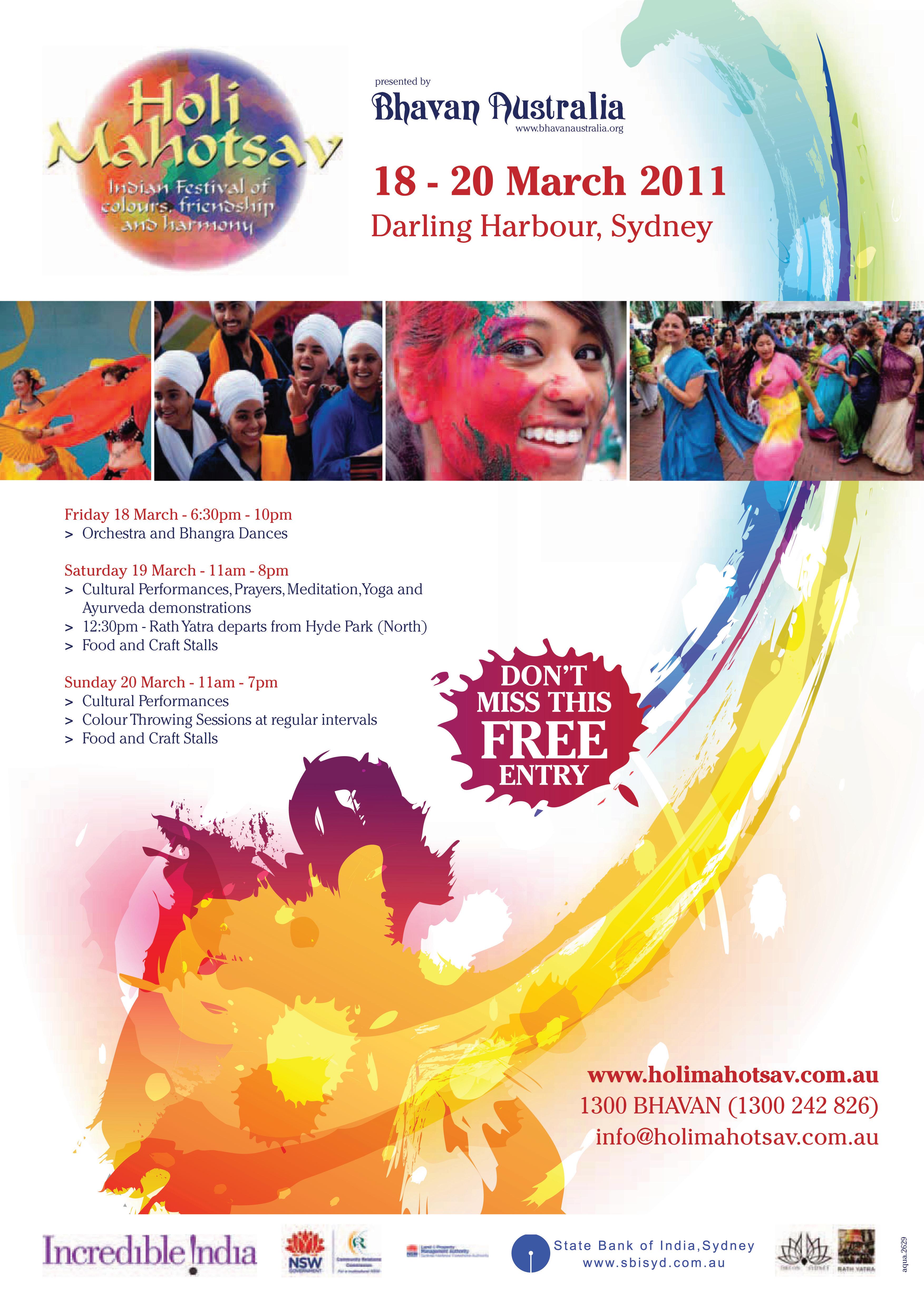



Prof. Purnendra Jain of the University of Adelaide has been recently elected as President of the “Asian Studies Association of Australia” for 2011-2012, the first Indian origin person to have ever adorned that cadre. Only the second Asian after Prof. Wang Gungwu to have reached this position ever since the association’s establishment in 1977, Prof. Jain humbles away his achievement claiming he does not parallel Prof. Wang in the least, given his scholarship and international standing.
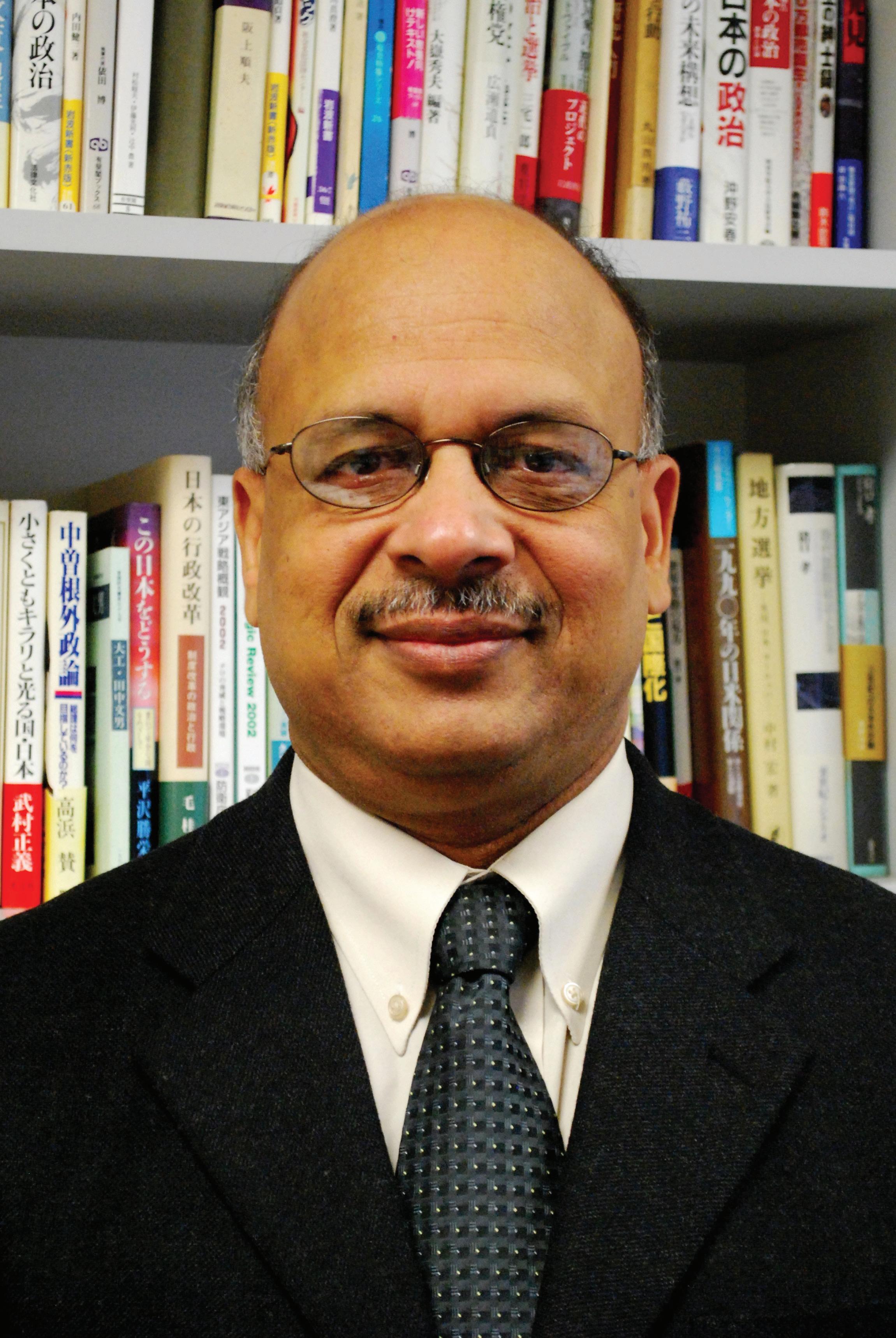
An eventful journey that started in India, Prof. Jain’s evolution from a lecturer to the current position, was no easy hitch-hiking. Graduating with M.Phil from Delhi University, Purnendra had a brief tryst with the Indian Civil Services, but he reverted to an academic career having realised that administration was not his forte. It is no wonder the position he enjoys today is a result of many tough decisions he made.
Having realised that it is academic research that interests and excites him the most, Jain worked as a Political Science lecturer in Delhi University. It was when he met a professor from England that his fascination towards Japanese politics was born, and from then on there was no looking back. The fact that he was one of the two out of ten students who survived the Intensive Japanese course in Delhi University, speaks of his determination and perseverance to understand Japanese politics from the native perspective.
Prof. Jain who is now 59, has spent about a total of six years in Japan. It is not without getting into the roots of Japanese society, did he edit Japanese Studies journal for over five years. He has the credit of bringing an international profile to the journal, spiralling it from a low profile to one of the three leading journals on Japan in the world. It is very interesting to know that Prof. Jain has known the current Prime Minister of Japan, Mr. Naoto Kan for over 30 years. When Mr. Kan assumed office in June 2010, Jain’s piece entitled Kan Naoto: Symbol of New Politics in Japan presented a vivid picture of the leader’s entry into and rise in politics. His latest book Japan in Decline – Fact or Fiction? is expected to be out in April 2011. Exploring wider avenues in Japanese politics and foreign policy, Prof. Jain came to Australia in 1982 in pursuit of his Ph.D at Griffith University. Little did he know then, that Australia was going to be his second home. He laddered from being a Senior Lecturer to Professor of Japanese Studies and the President, Japanese Studies Association of Australia (2003-2005) before taking on his current role. In his vast career he has served as visiting researcher to universities in Singapore, Japan, China, Britain and the United States. He gradually expanded his focus from Japanese politics to international relations in the Asia-Pacific region. He constantly tracks and evaluates Australia’s relations with Asia.
He has been actively involved in motivating and guiding the Australian government, through his articles in the Australian media, towards partnership opportunities in India, thus leading to a mutual benefit for the two countries. As convenor of the 18th Biennial Conference of the Asian Studies Association of Australia held in July last year, he was quite successful in procuring sponsorship from Santos (an Adelaide-based energy company). Also the fact that he invited the Chairman of Malaysian Airlines to address the conference, vouches for Jain’s insight into the need for teaming up academic institutions with corporate giants.
Jain observes that being an Indian, he has never faced any discrimination in Australia. Recalling his entry into Adelaide as a Professor in 1995, he said he had been selected over the other candidates, native Australians, on the sheer basis of merit.
“Going beyond humanities and social studies, Asian Studies can have a great impact on the lives of us all, in terms of Asian climate policy, its implications on trade, security, etc”.
“Indians have the advantage of being capable of living in a multi-cultural society,” he notes. “Having already been introduced to that context in India, Indians are more or less capable of ignoring indirect discriminations, if any, as they are already desensitised to this issue back home, given the multi-cultural multi-lingual strata in our society”.

When asked to comment on why a good pool of Indian talent gets disoriented seeking inappropriate job options after their post graduation, he says, “Postgraduate courses, unlike bachelors’ courses, lack the structured employment pattern and Graduate Entry Programs. Whilst there are a large number of Chinese students in the research area after post graduation in Australia, the figures are pathetically low in case of Indian students. Sometimes, for the Indian students, the motivation to study in Australia is different from extending their education to applicable job areas”.
There seems to be an underlying need to guide Indian talent towards proper employment options after post graduation.
Talking about his role as President of Asian Studies
dissemination of knowledge about Asia in Australia, and the need for lobbying government to seek more funds for
He says that the association, instead of confining itself grass root level institutions such as schools, and provide assistance and training to bring more focus for Asian studies at a later stage. Another possibility is to link the Association with research institutes and think tanks. “Engaging with the corporate world can also have great potential,” notes Jain. “Bringing them to invest in Asian knowledge, when their majority portion of the business operates in Asia, sounds a truly viable option”.
Asian Studies is not just about politics, Prof. Jain wants to tell the world. Going beyond humanities and social studies, it can have a great impact on the lives of us all, in terms of Asian climate policy, its implications on trade, security, etc.
Perhaps this is why Jain is now learning Chinese, to grasp Chinese politics in a more authentic way. (The book When China Rules the World looms large from his bookcase). Who knows, when a book such as When India Rules the World is published, academics like Purnendra Jain will ensure that it evokes the same interest in the international community…